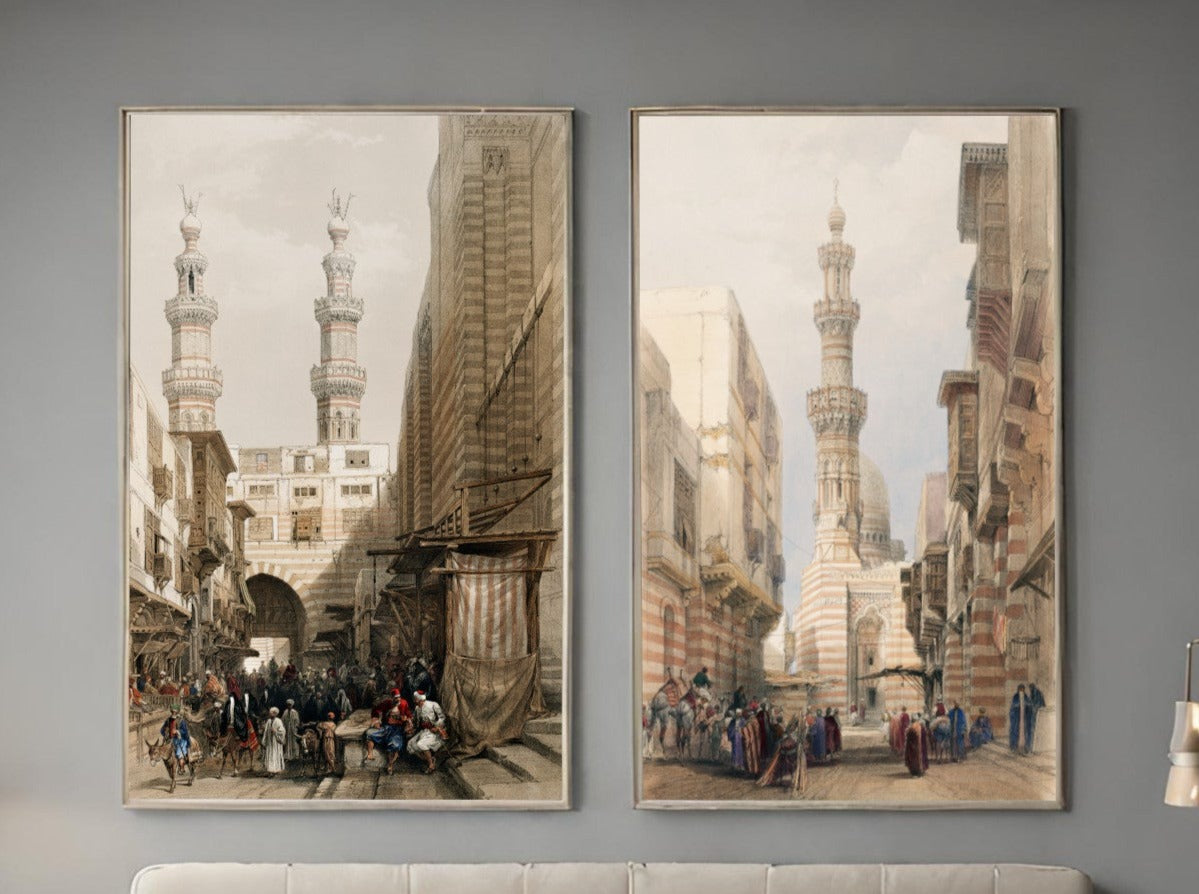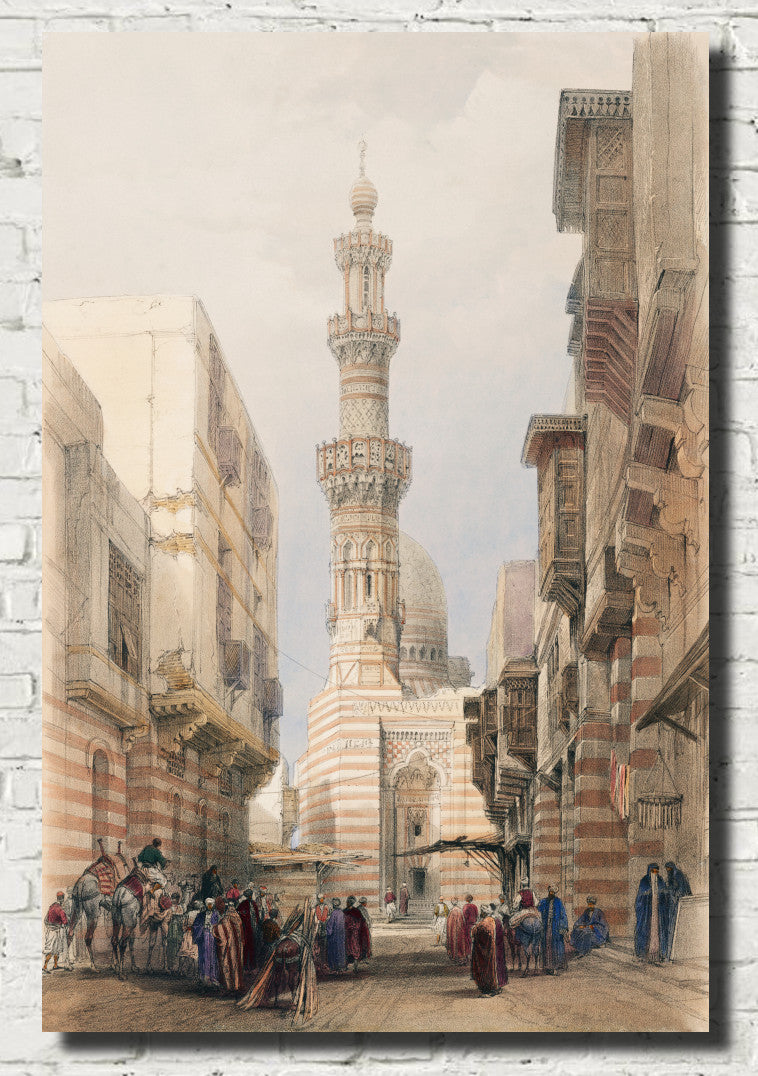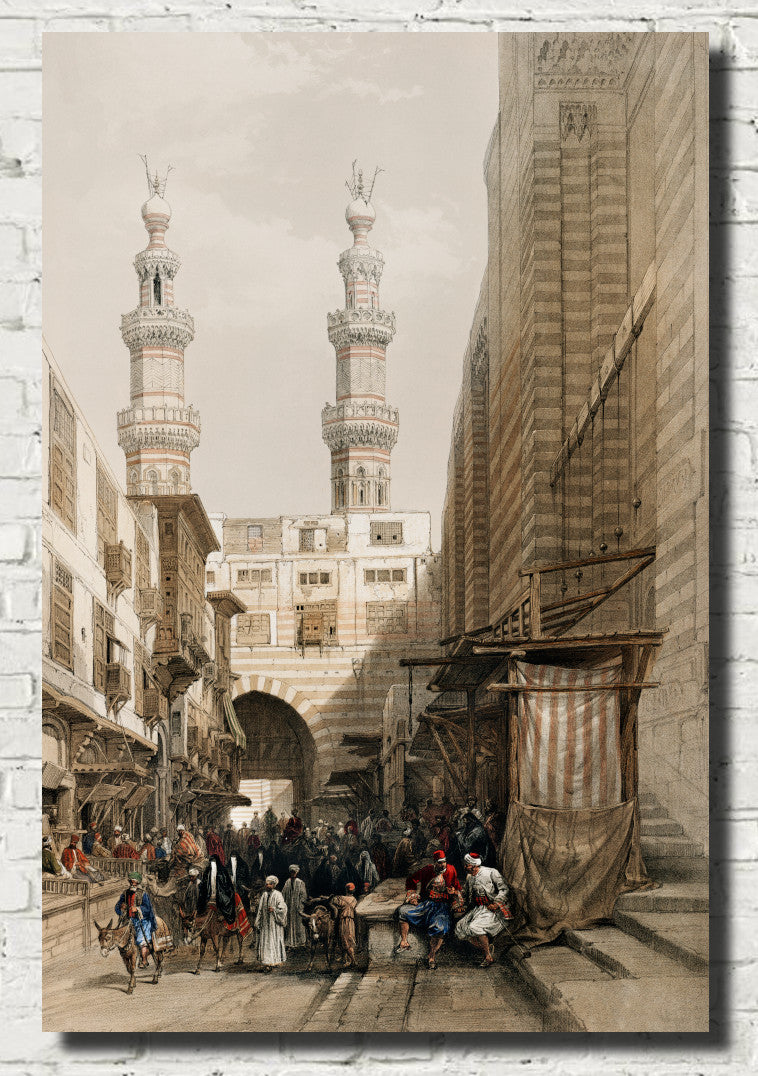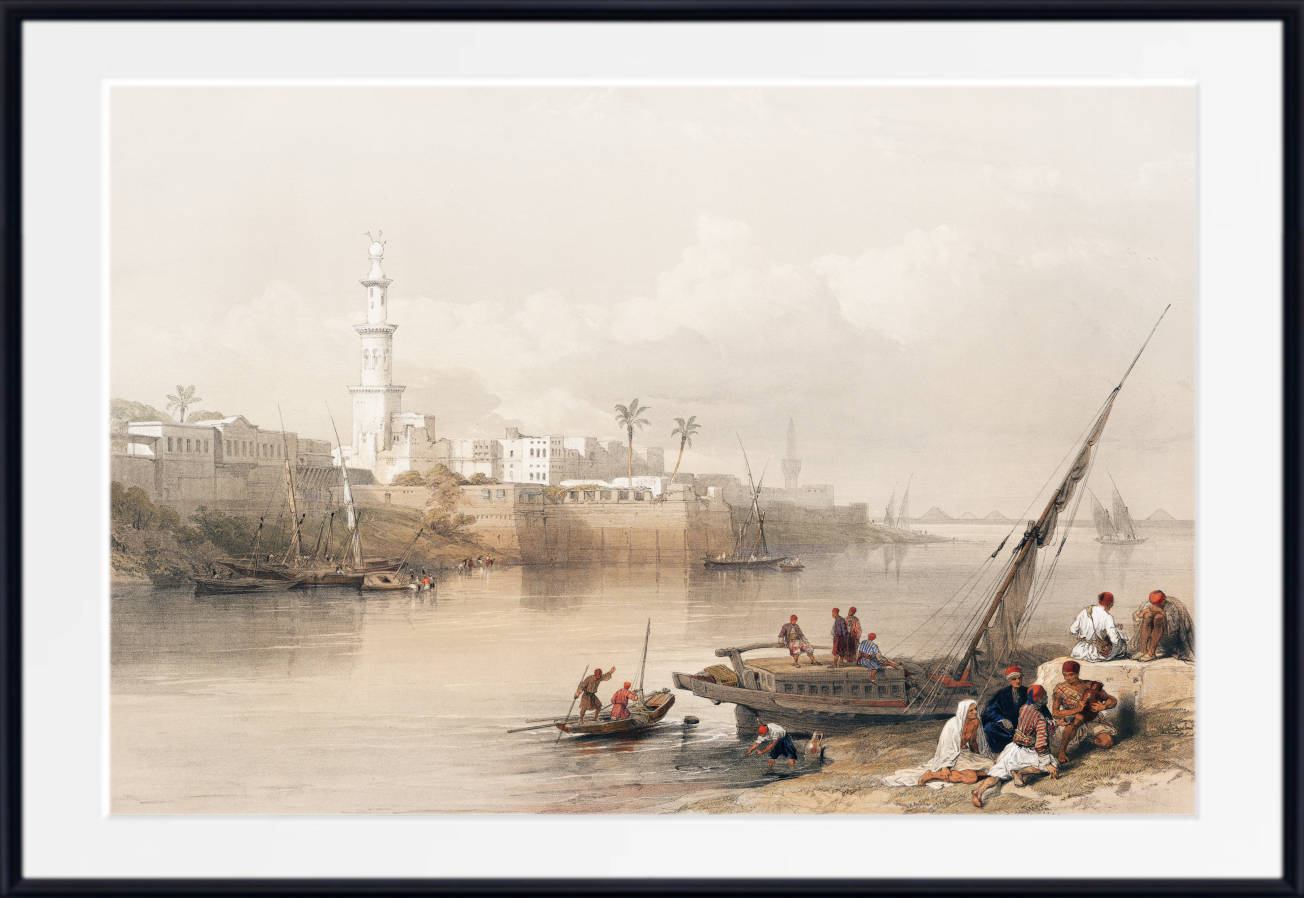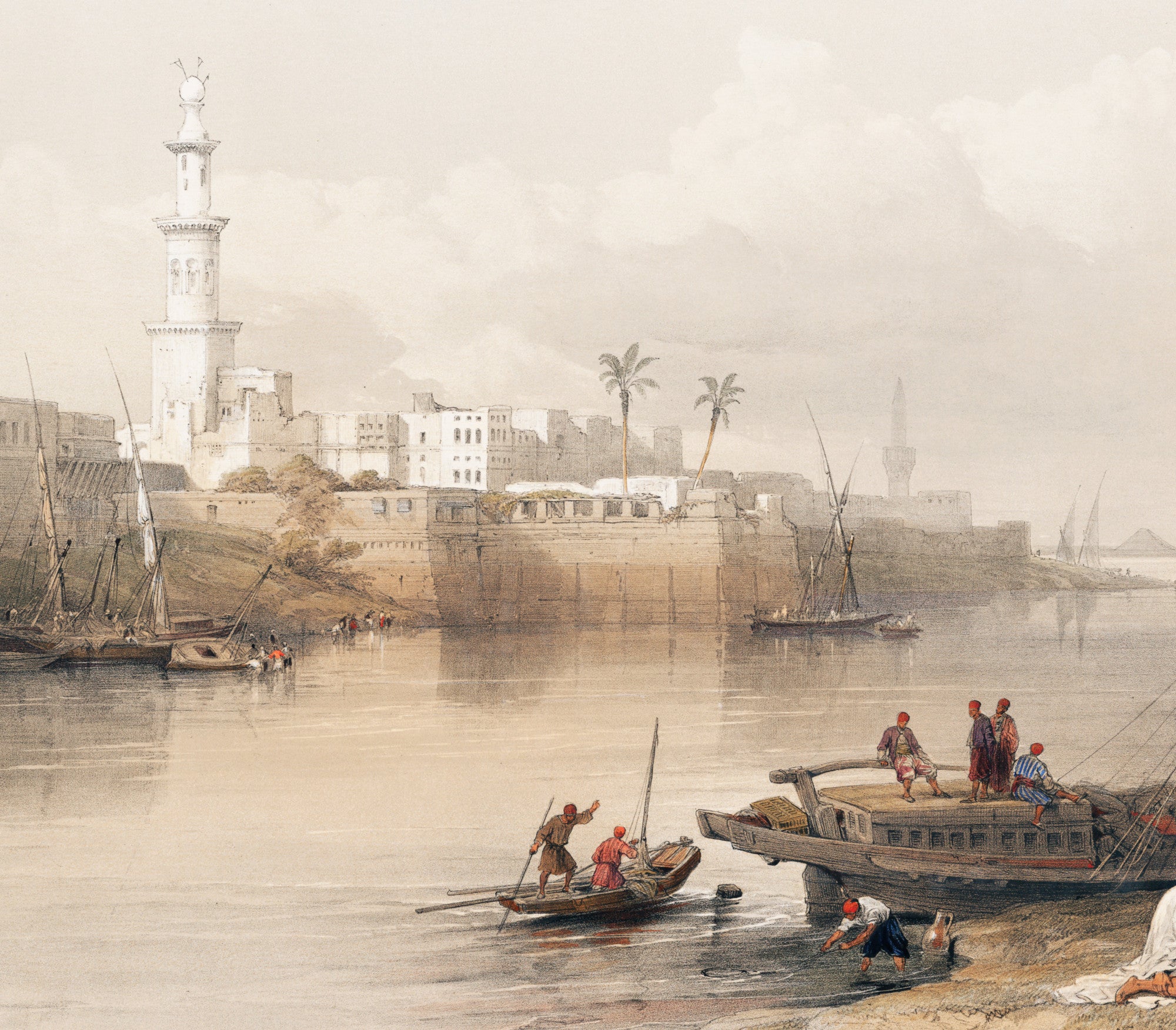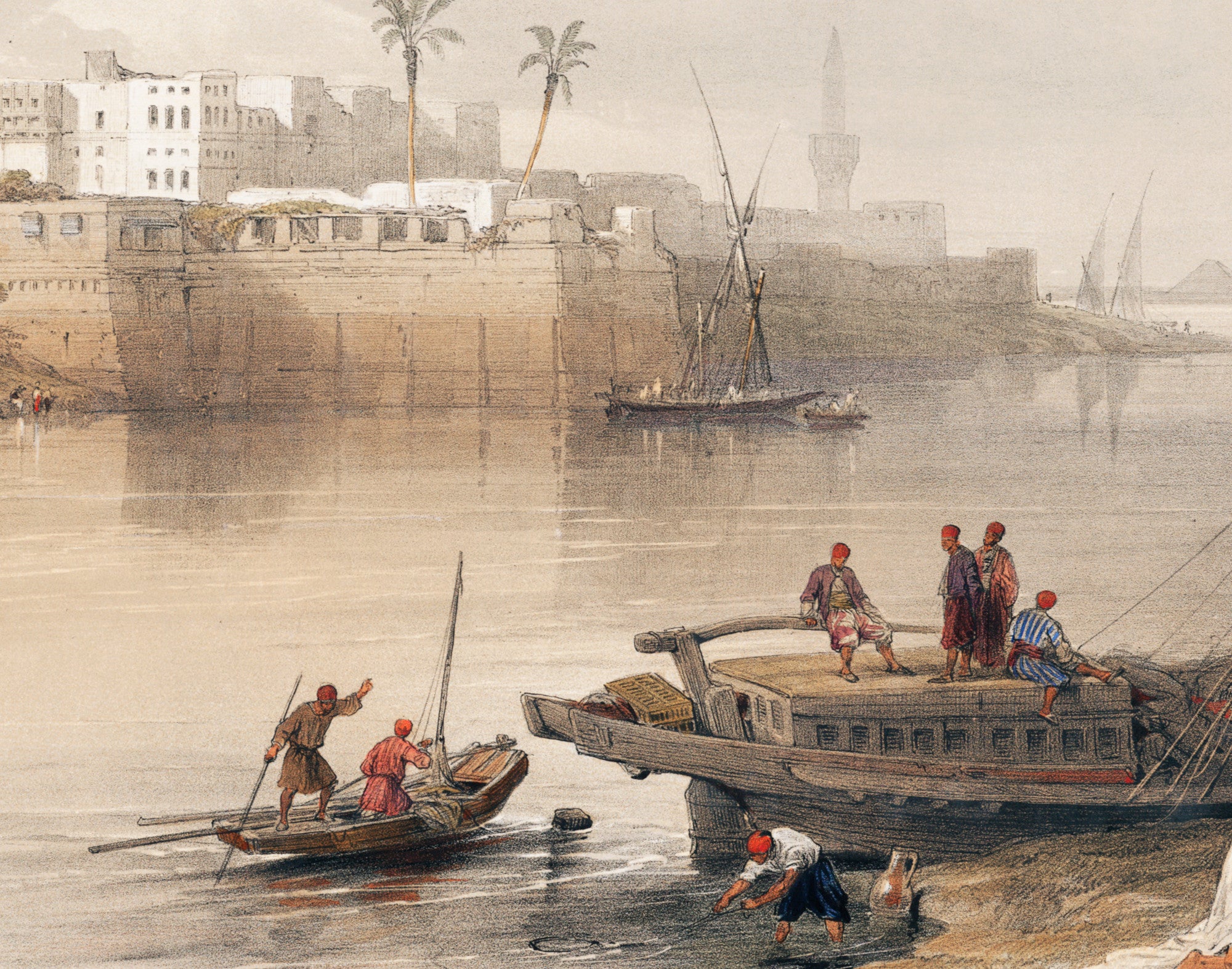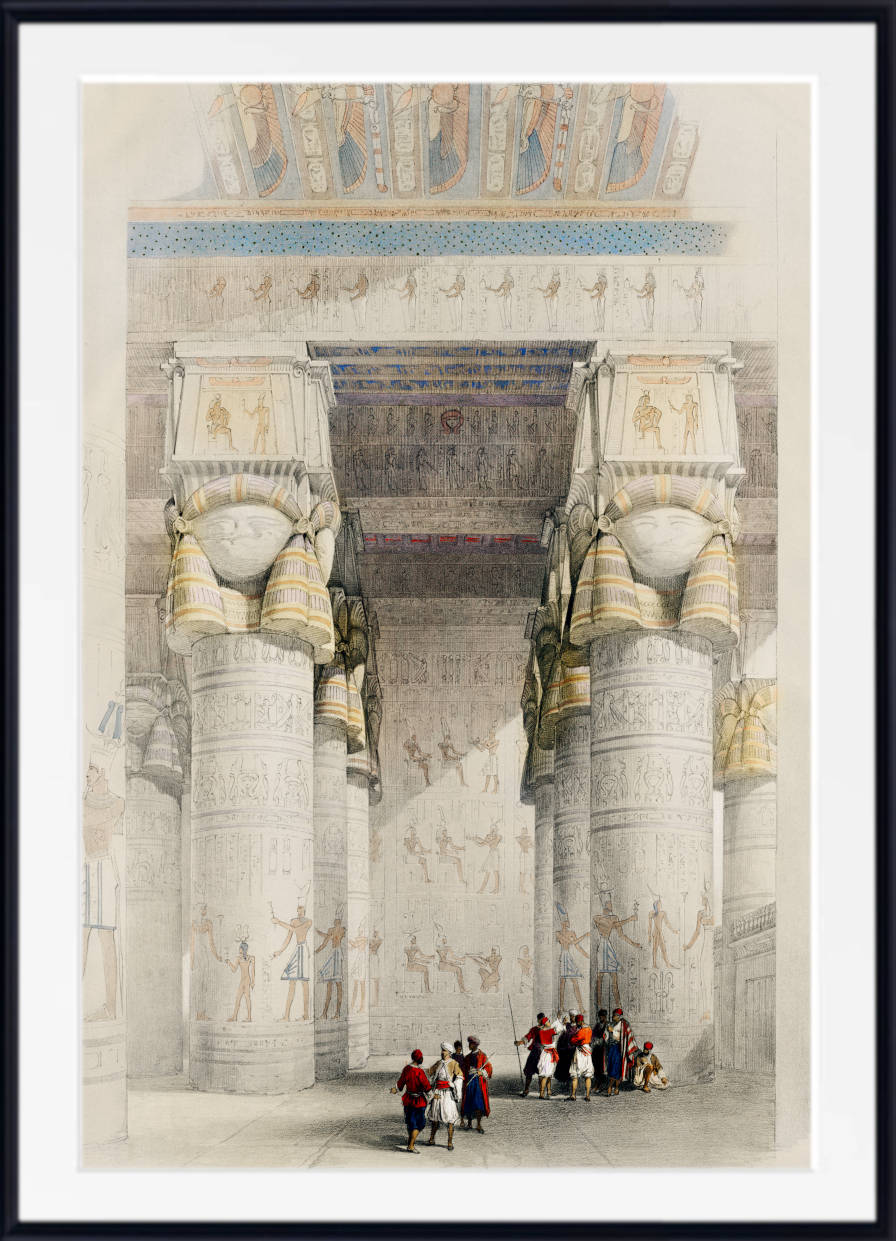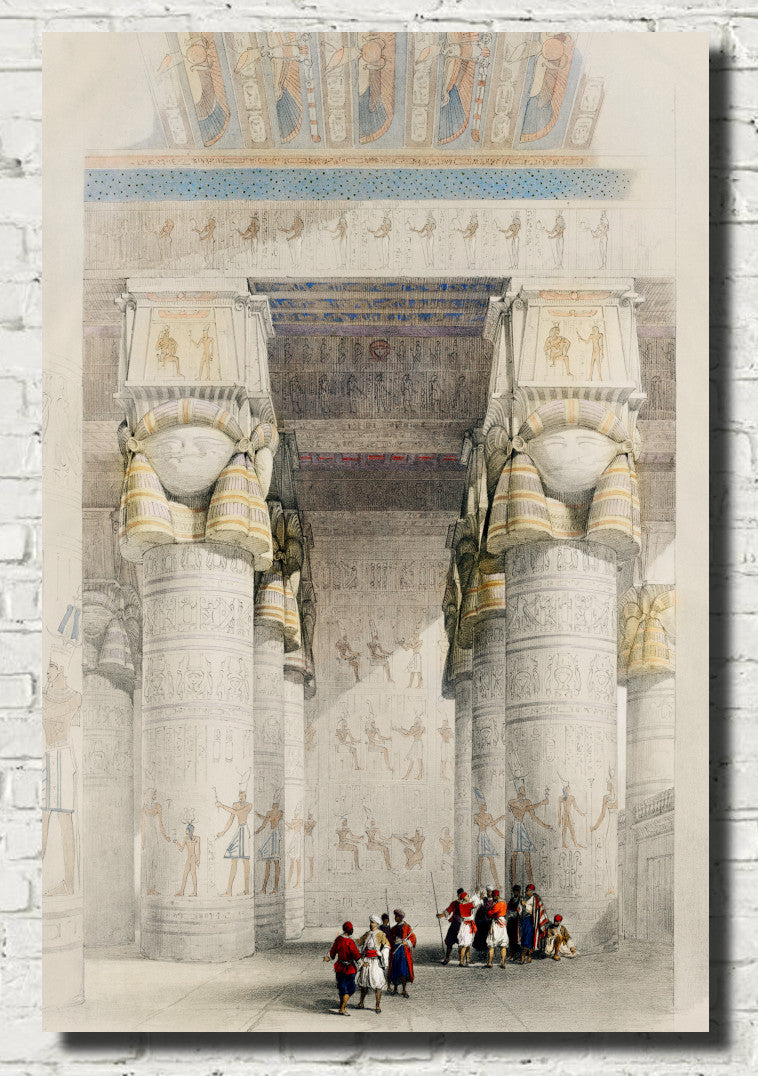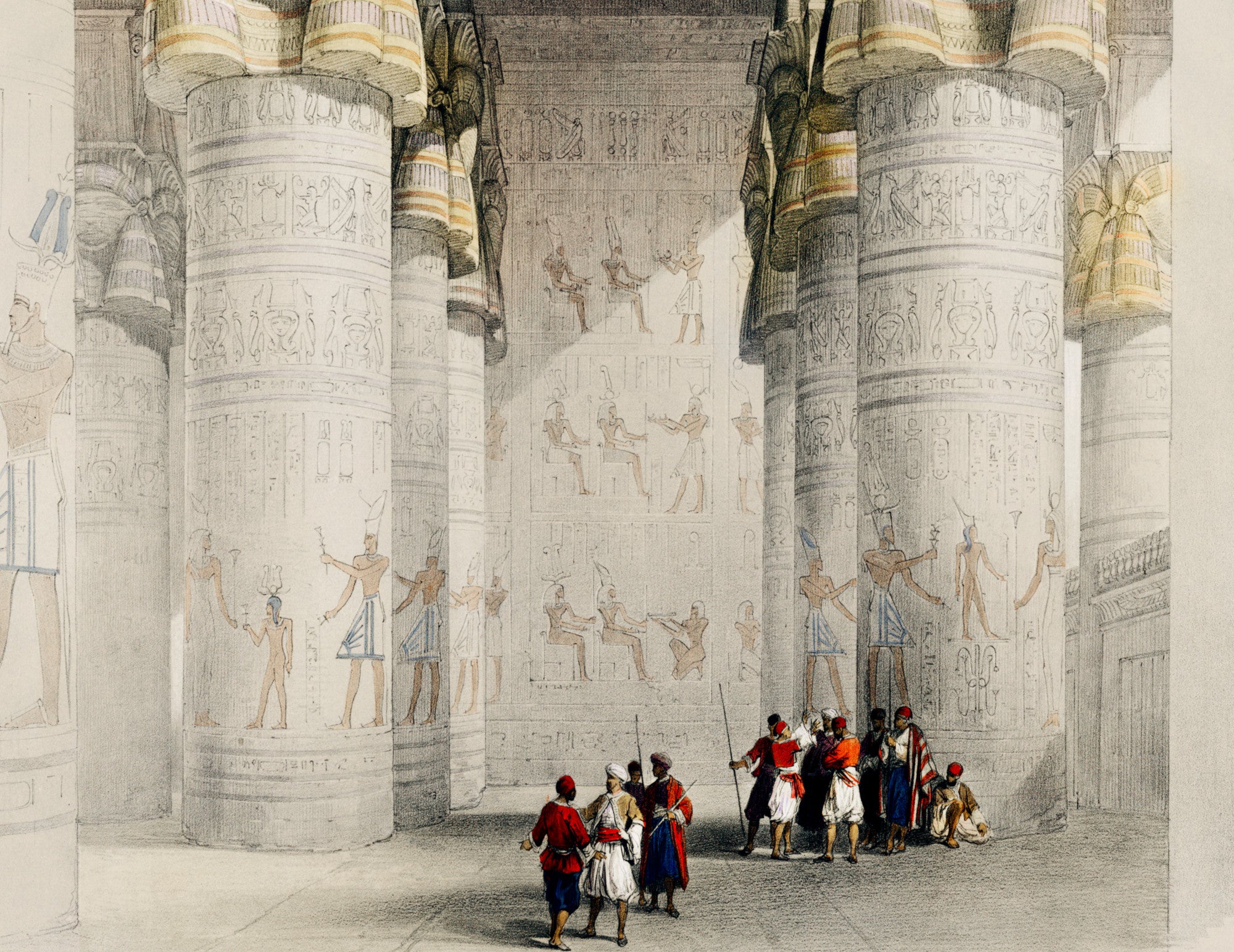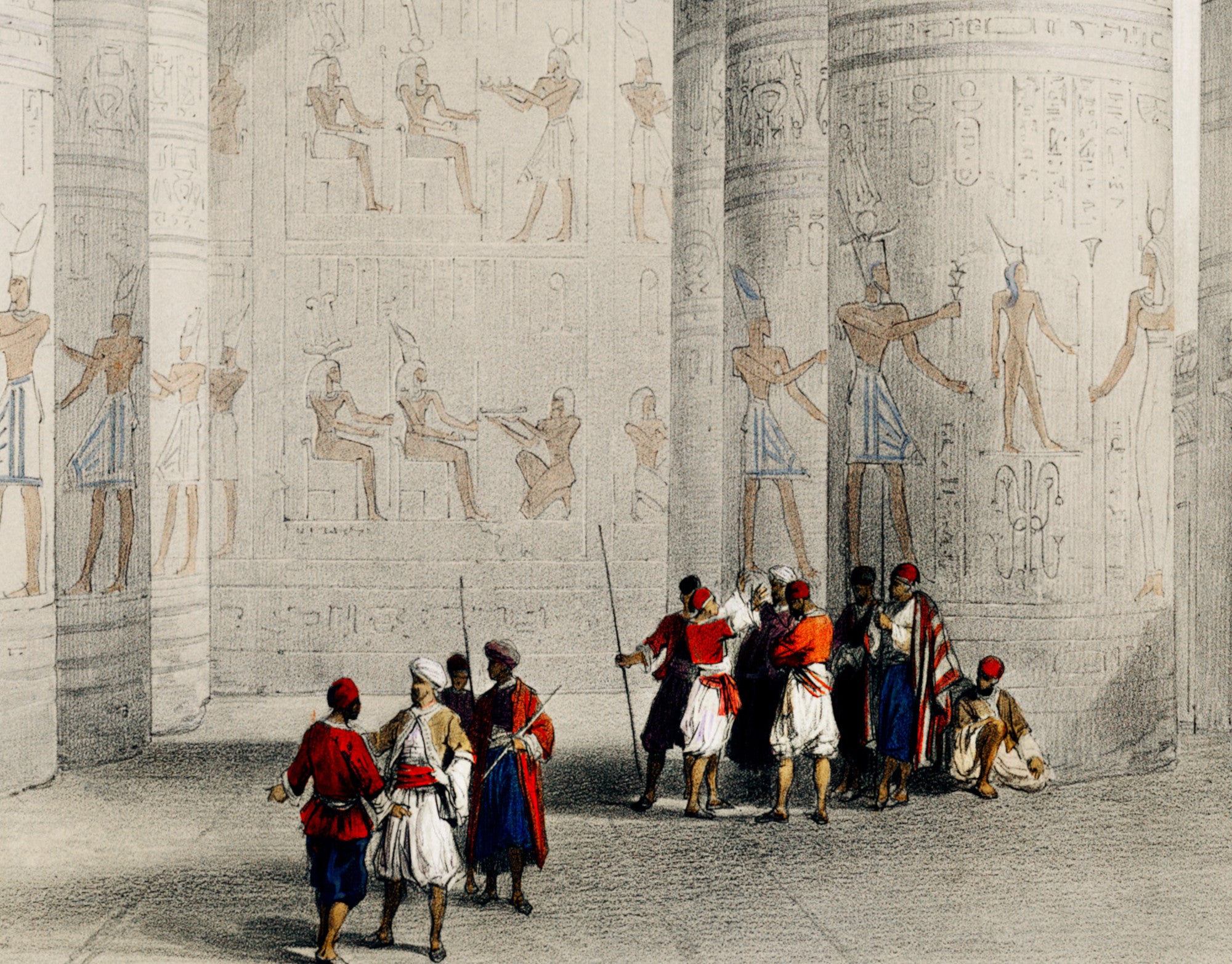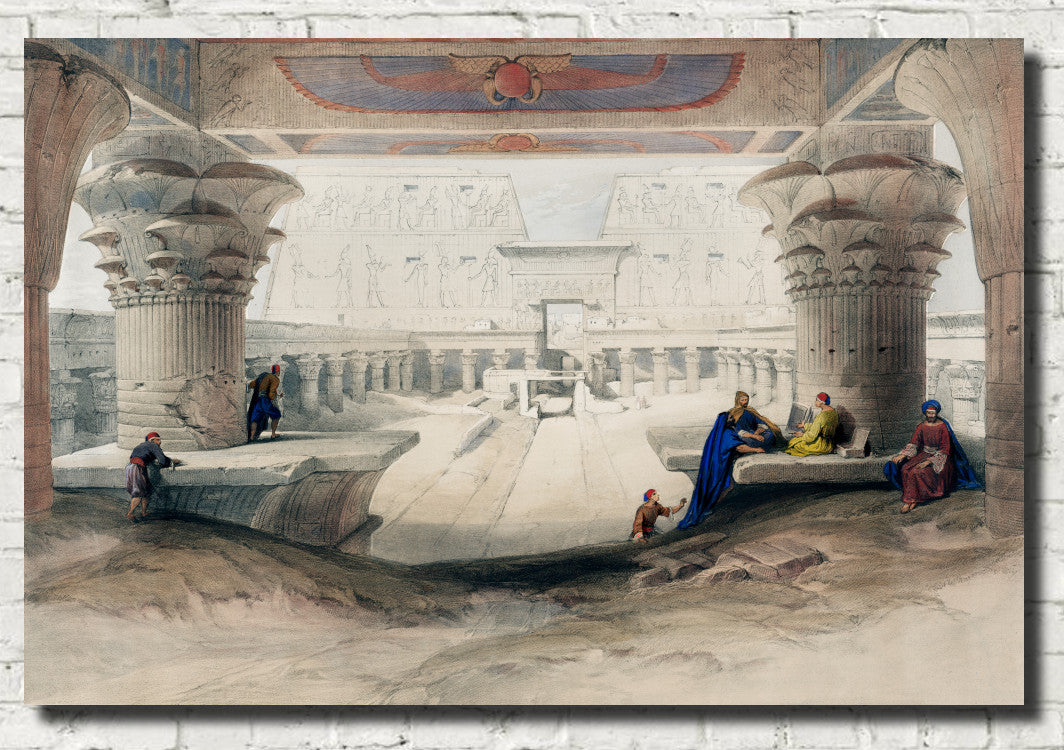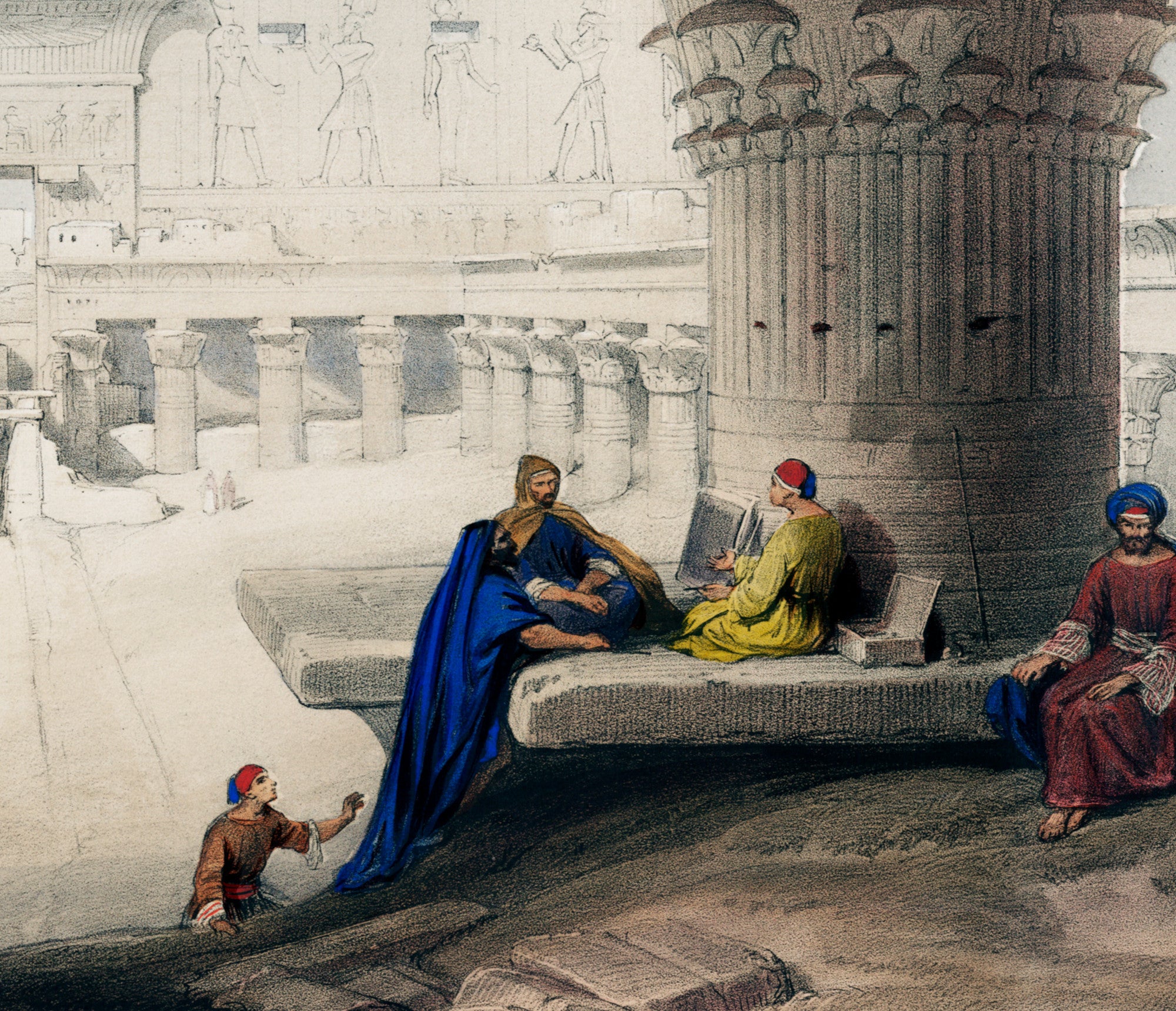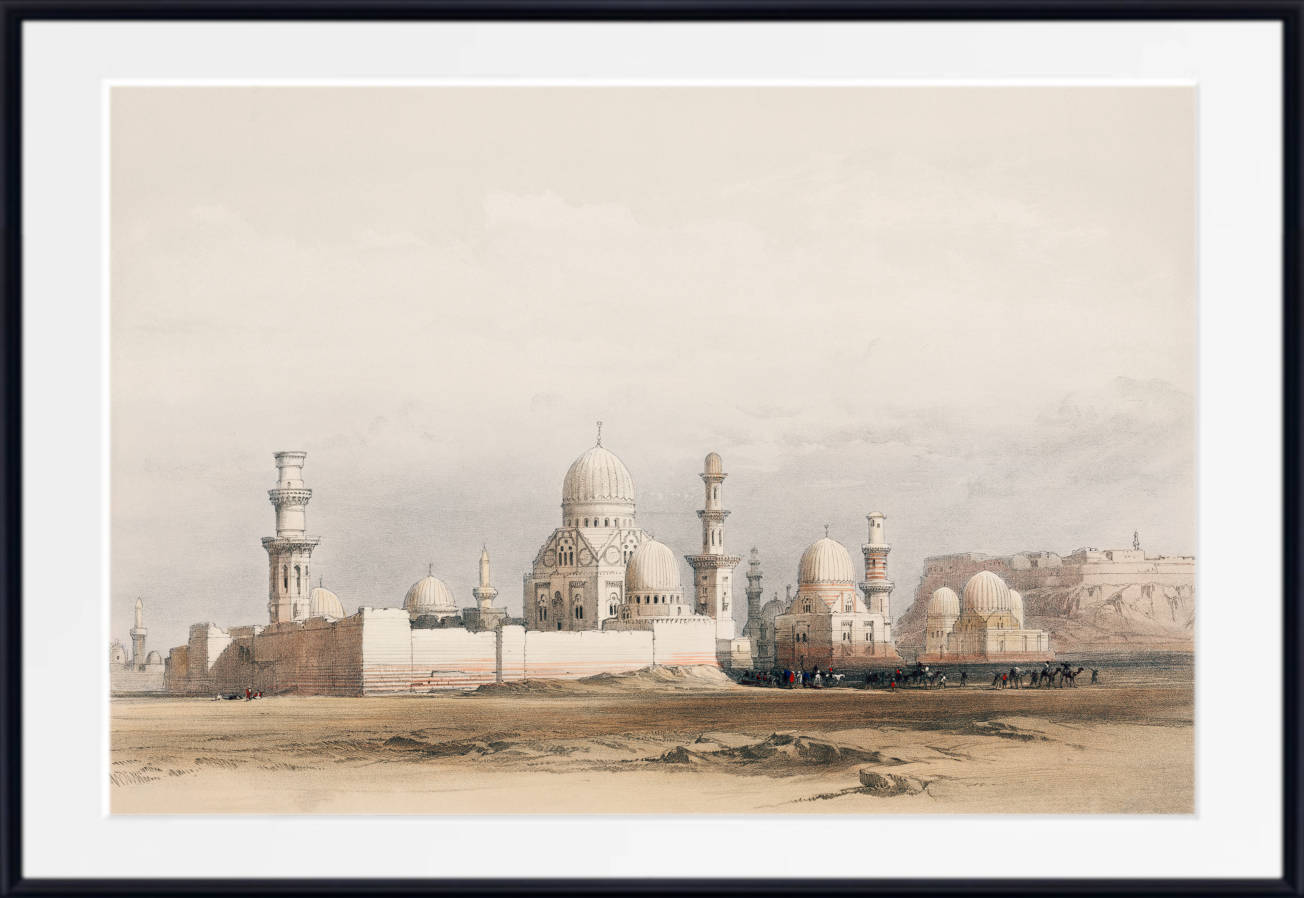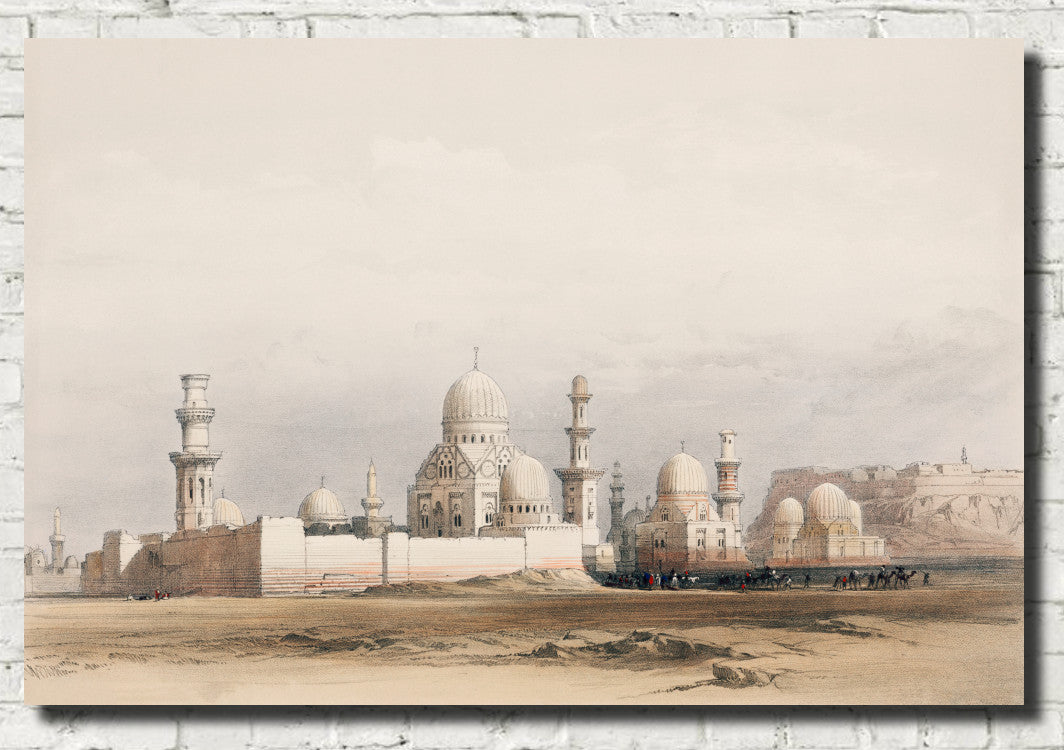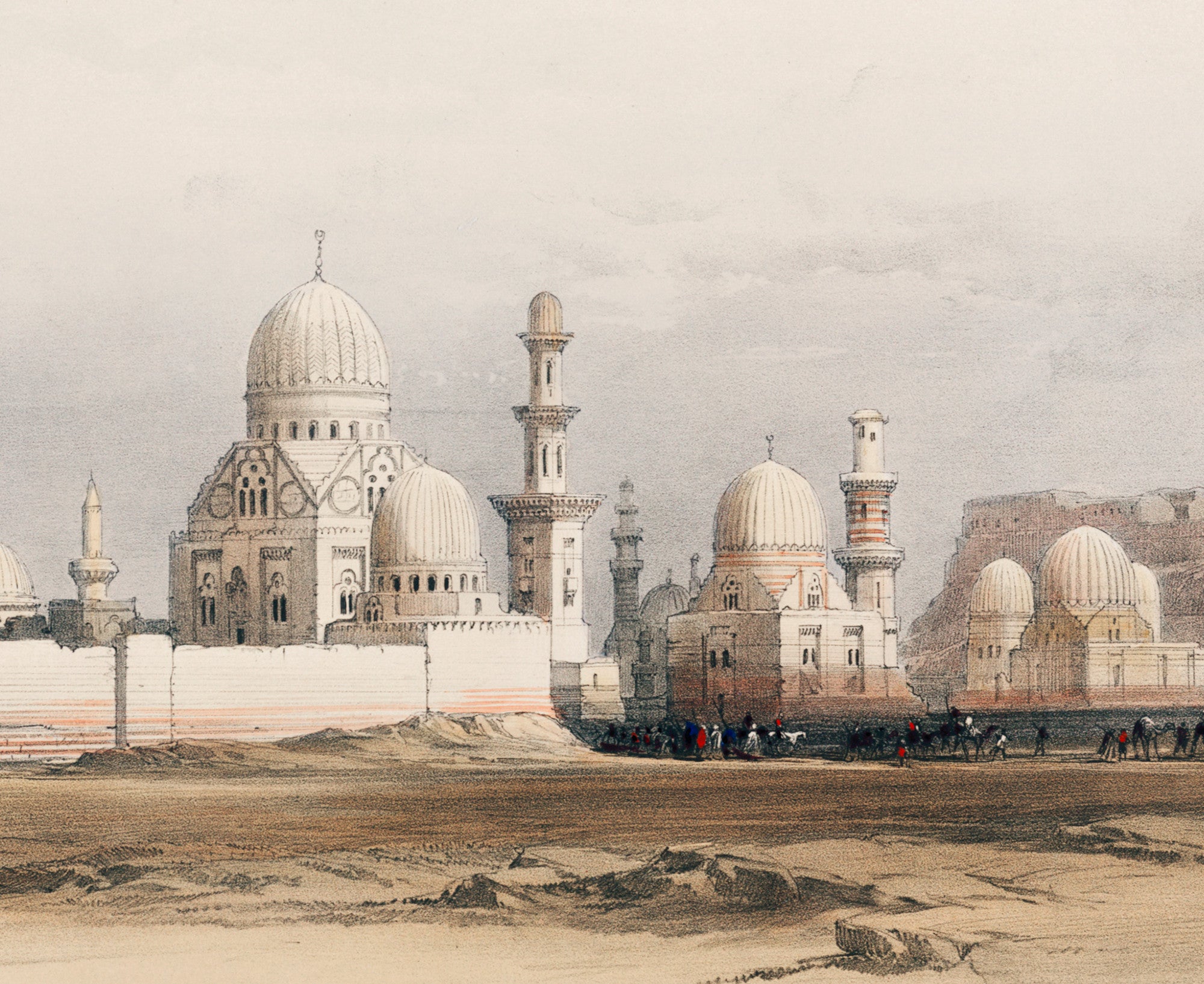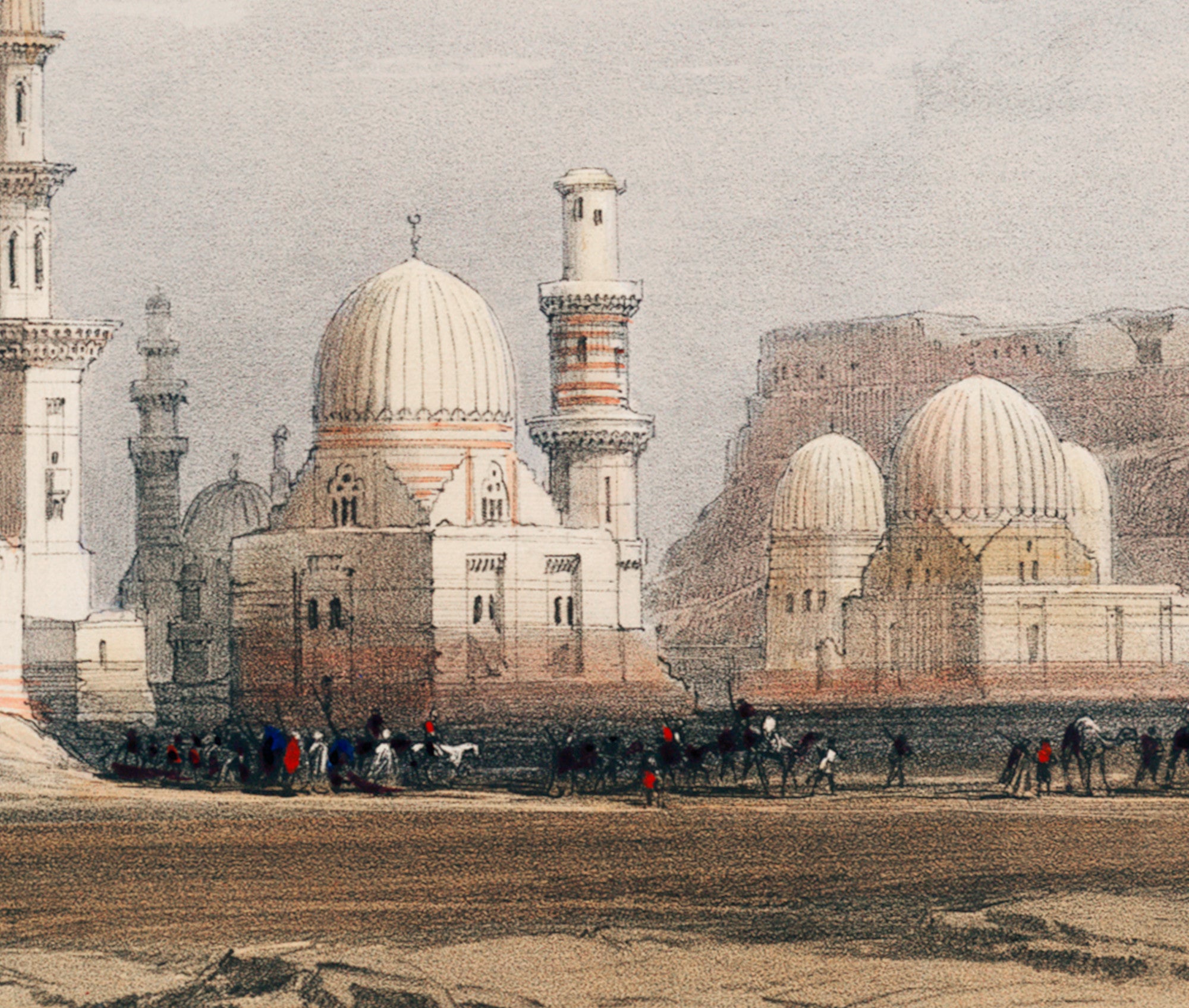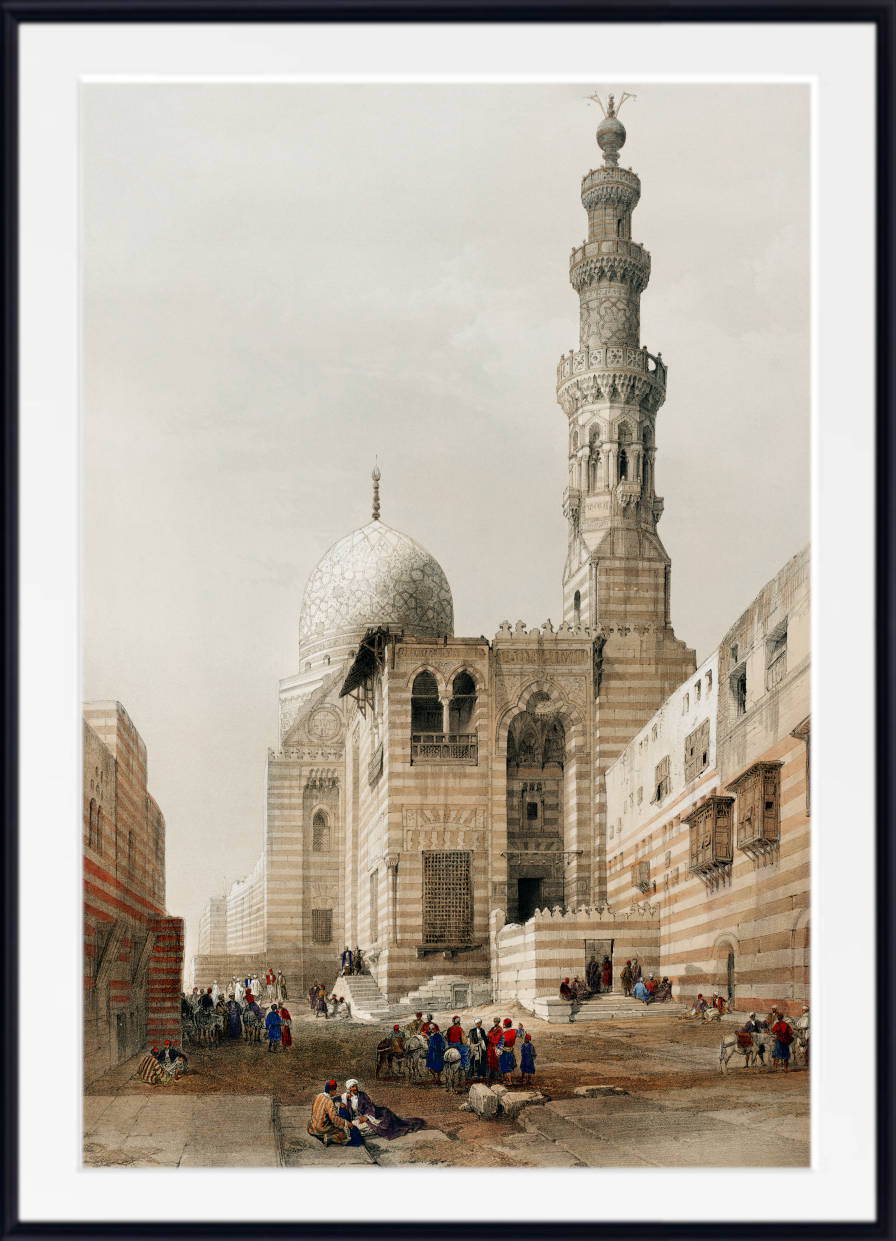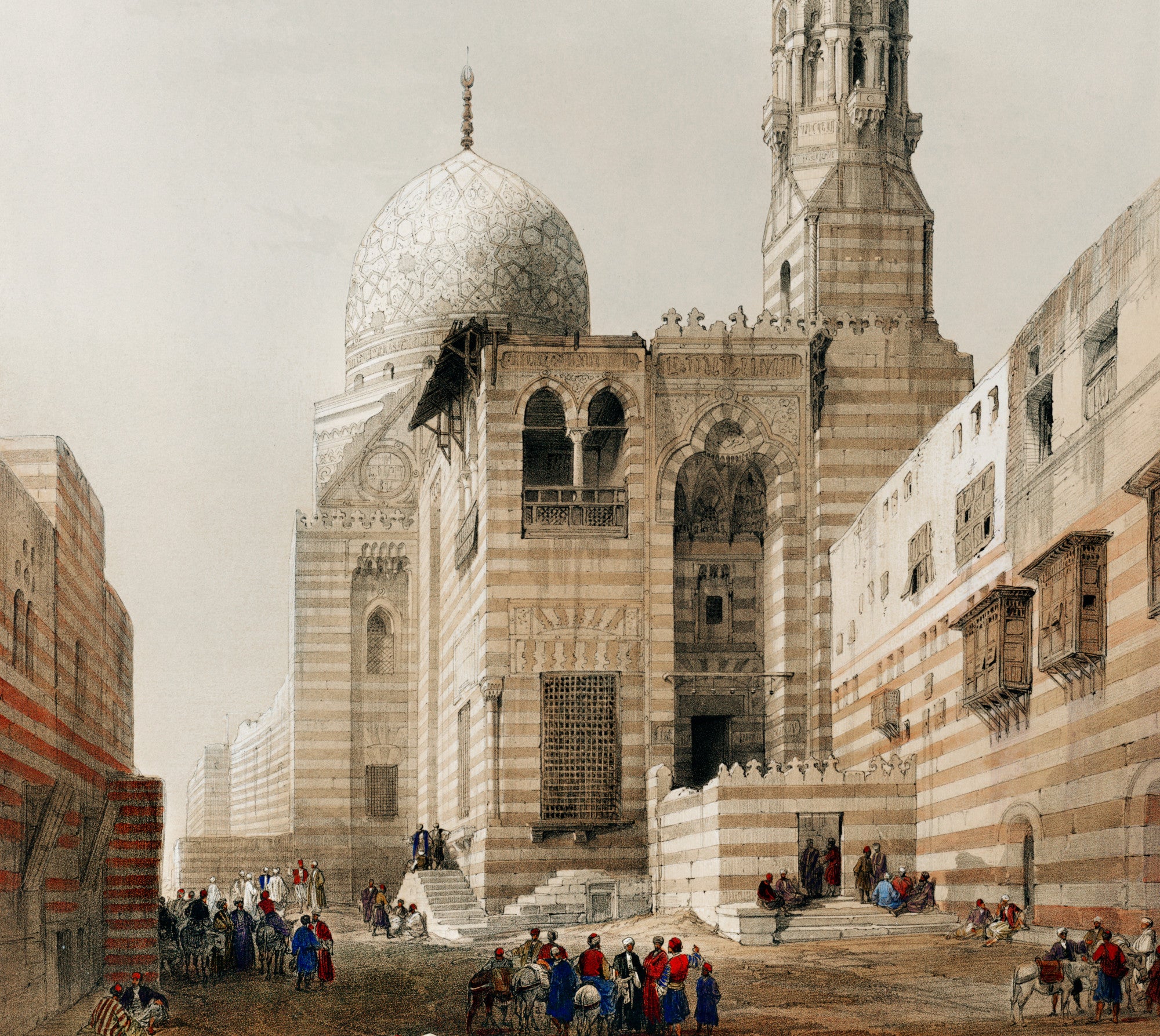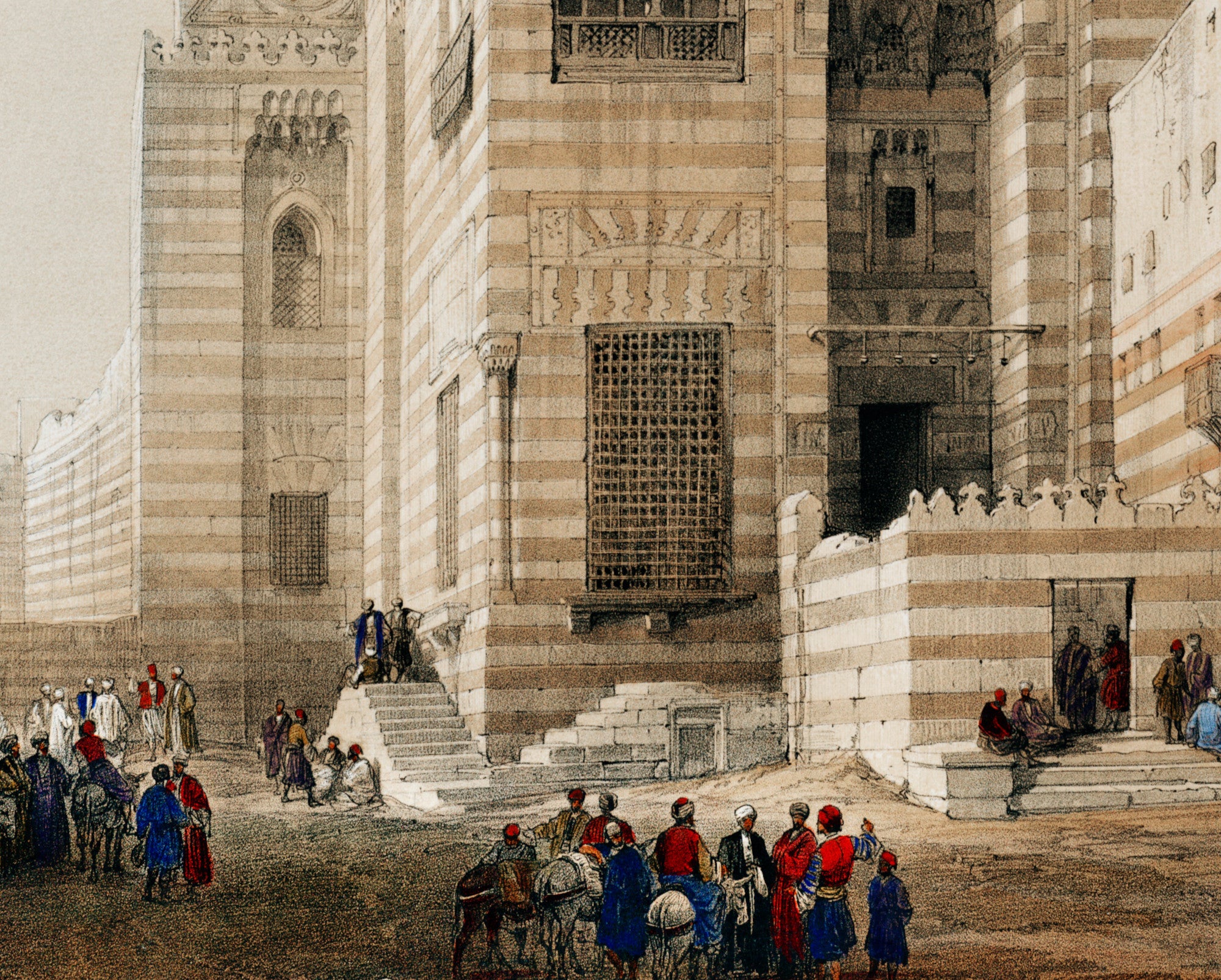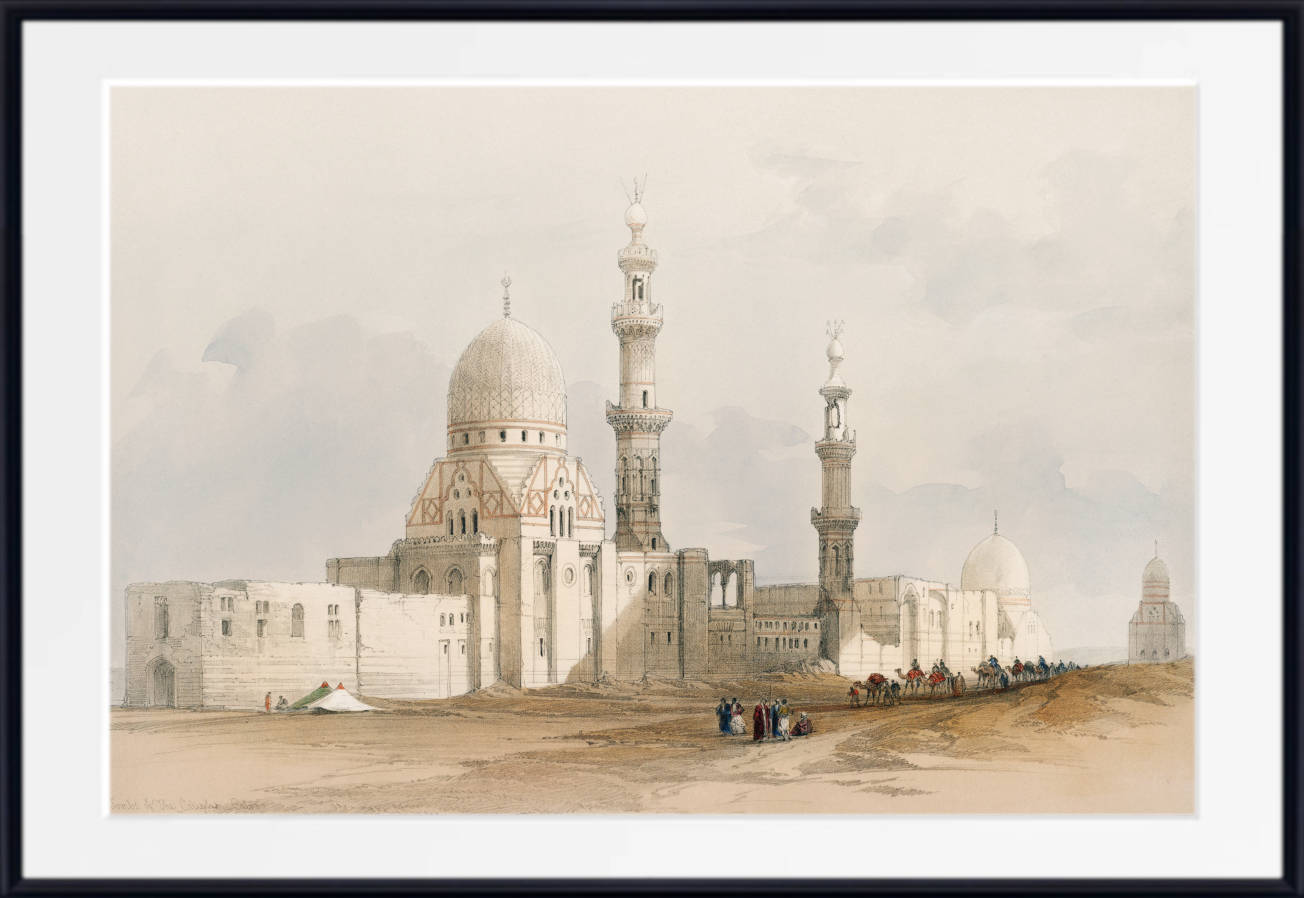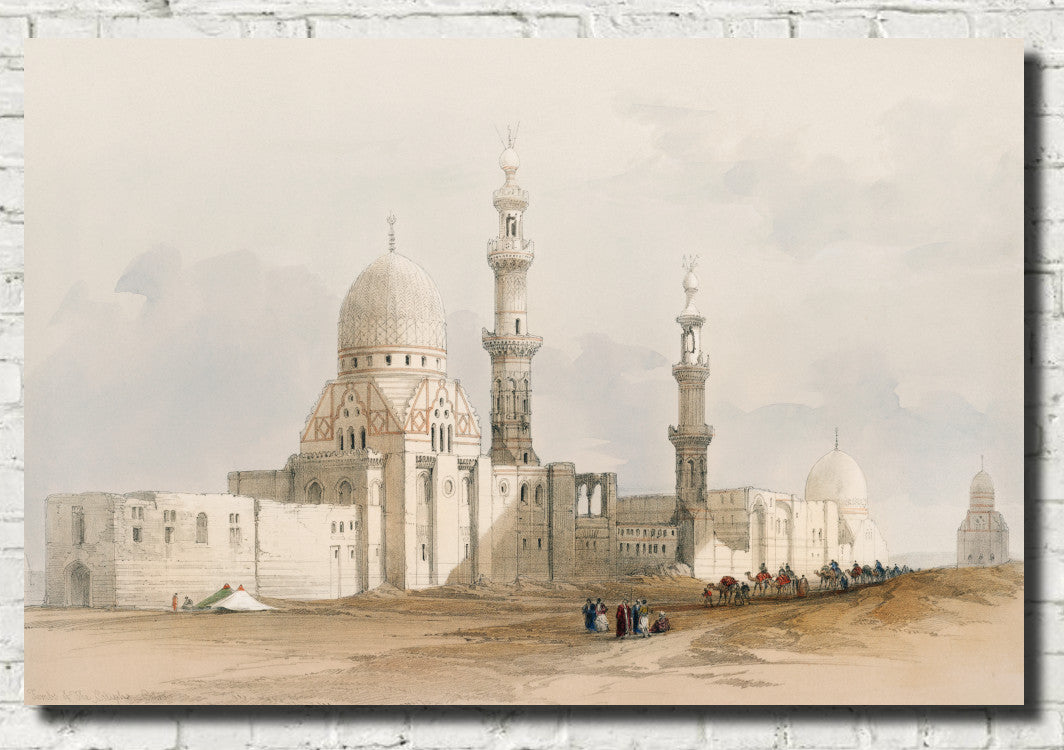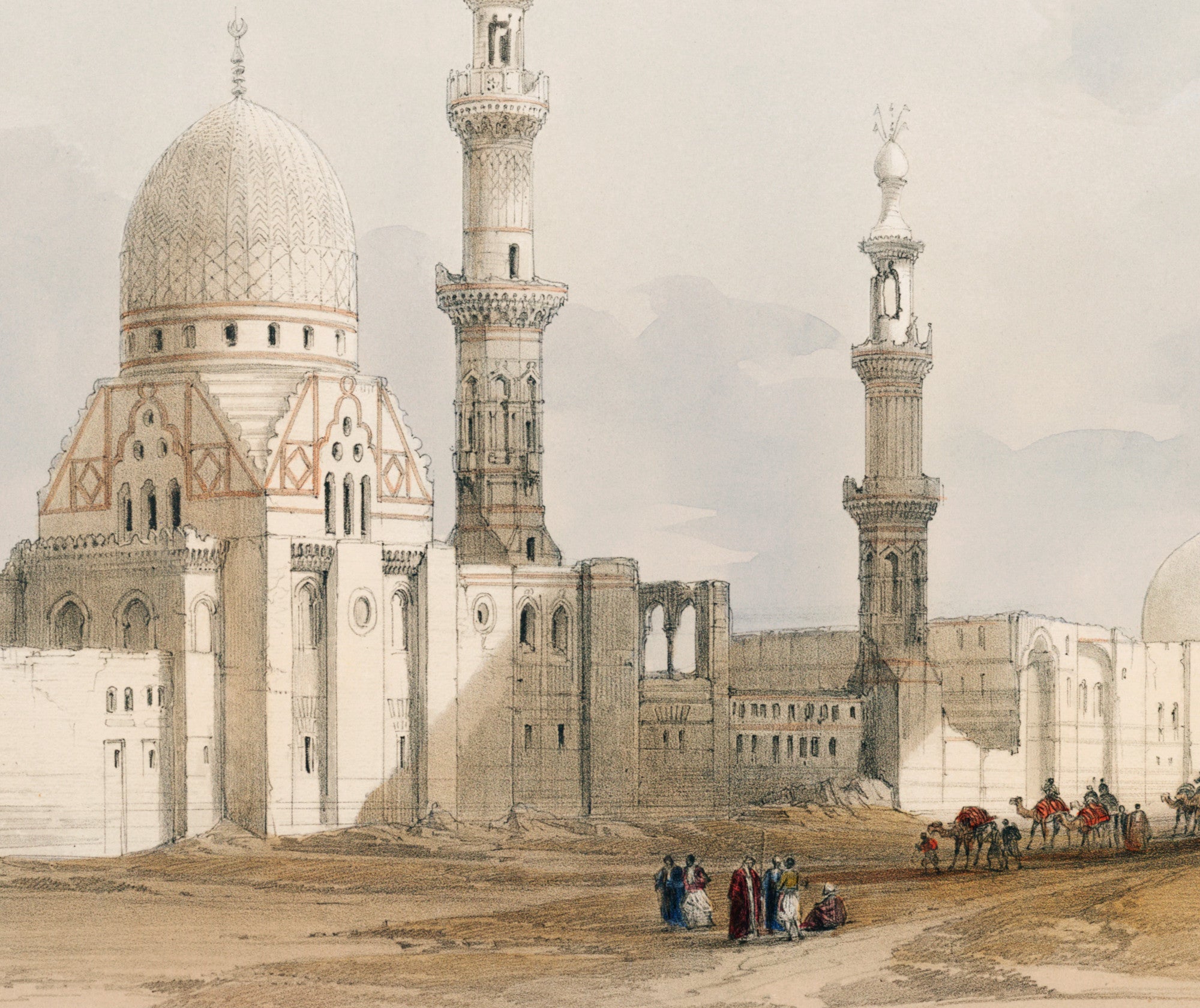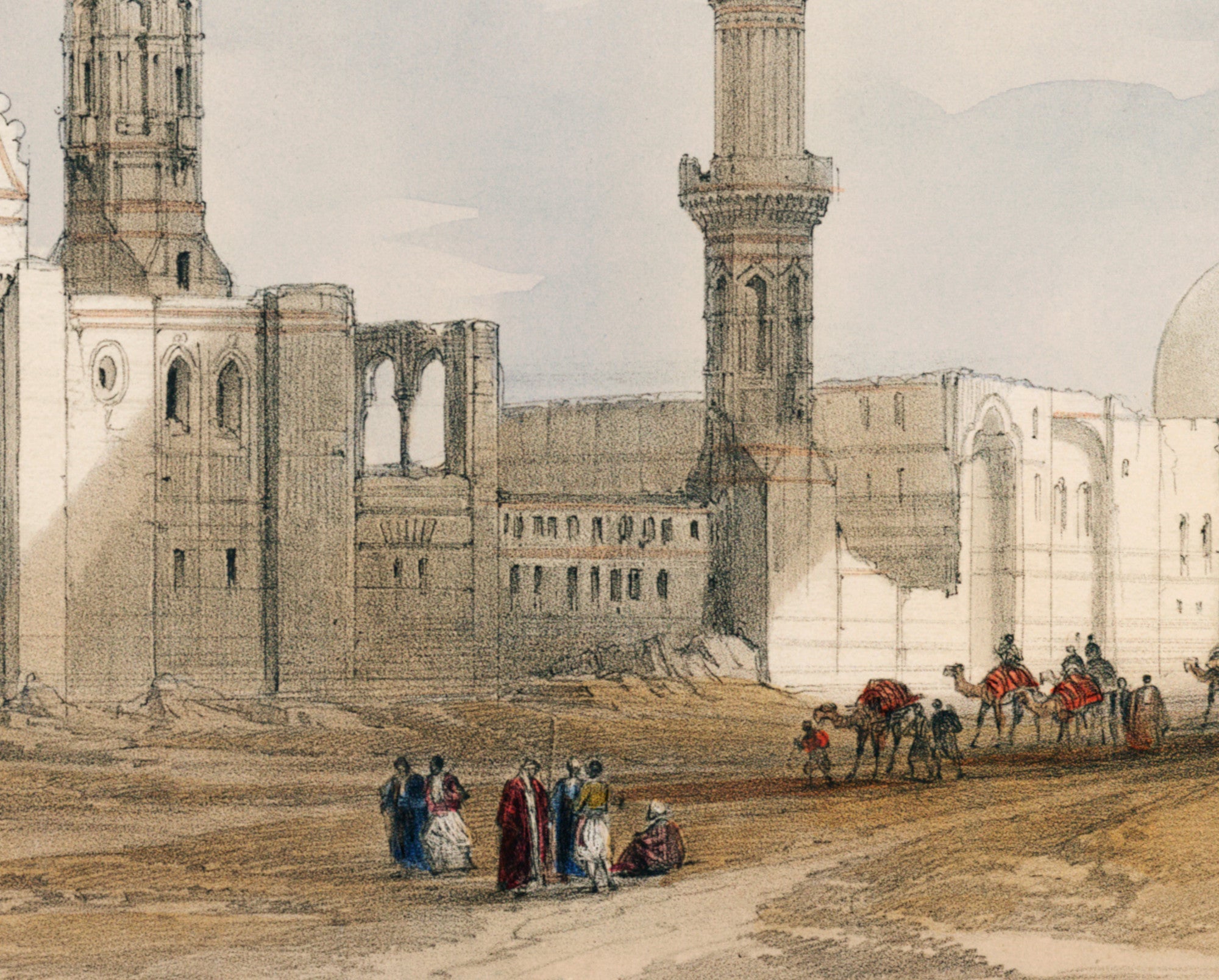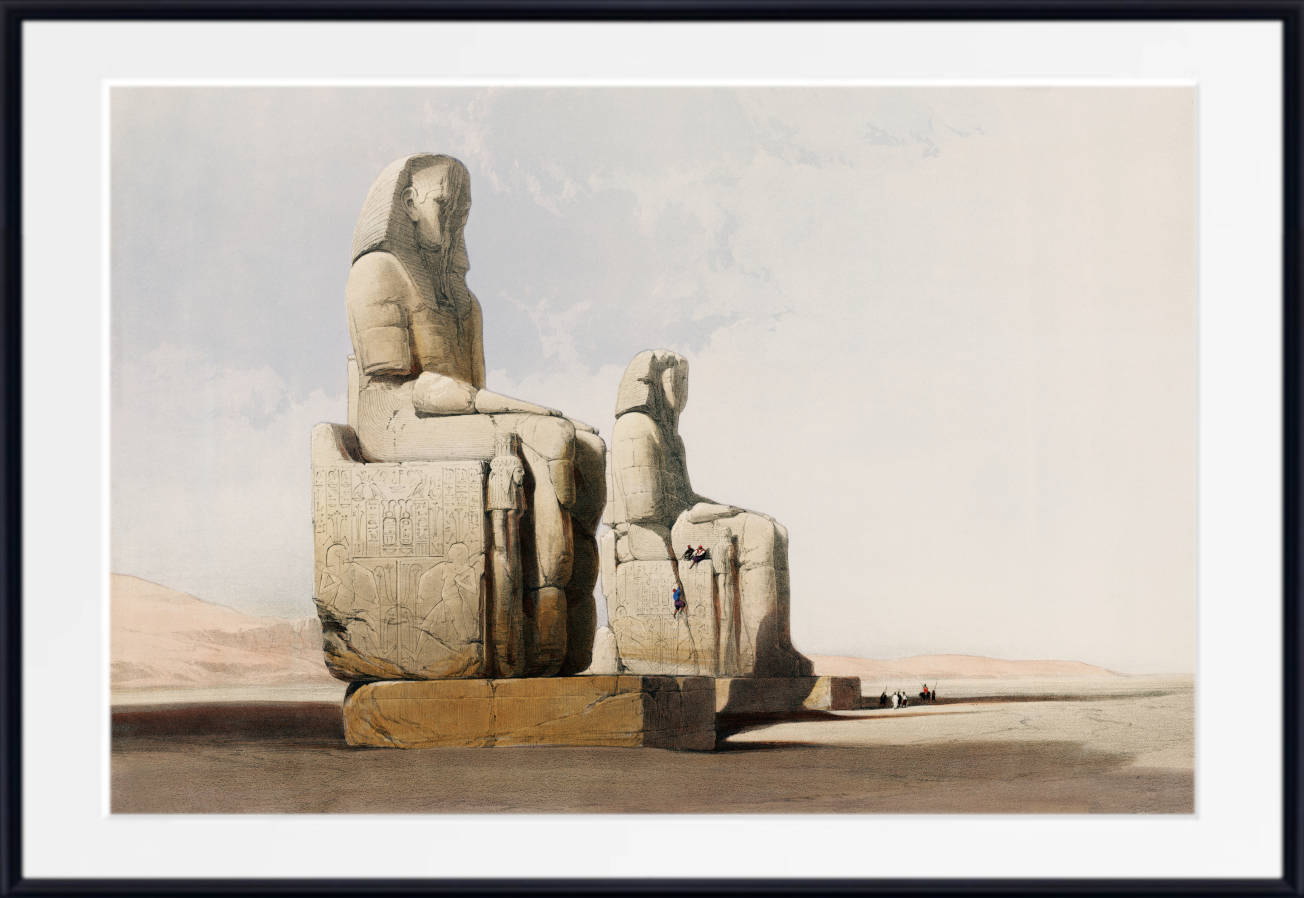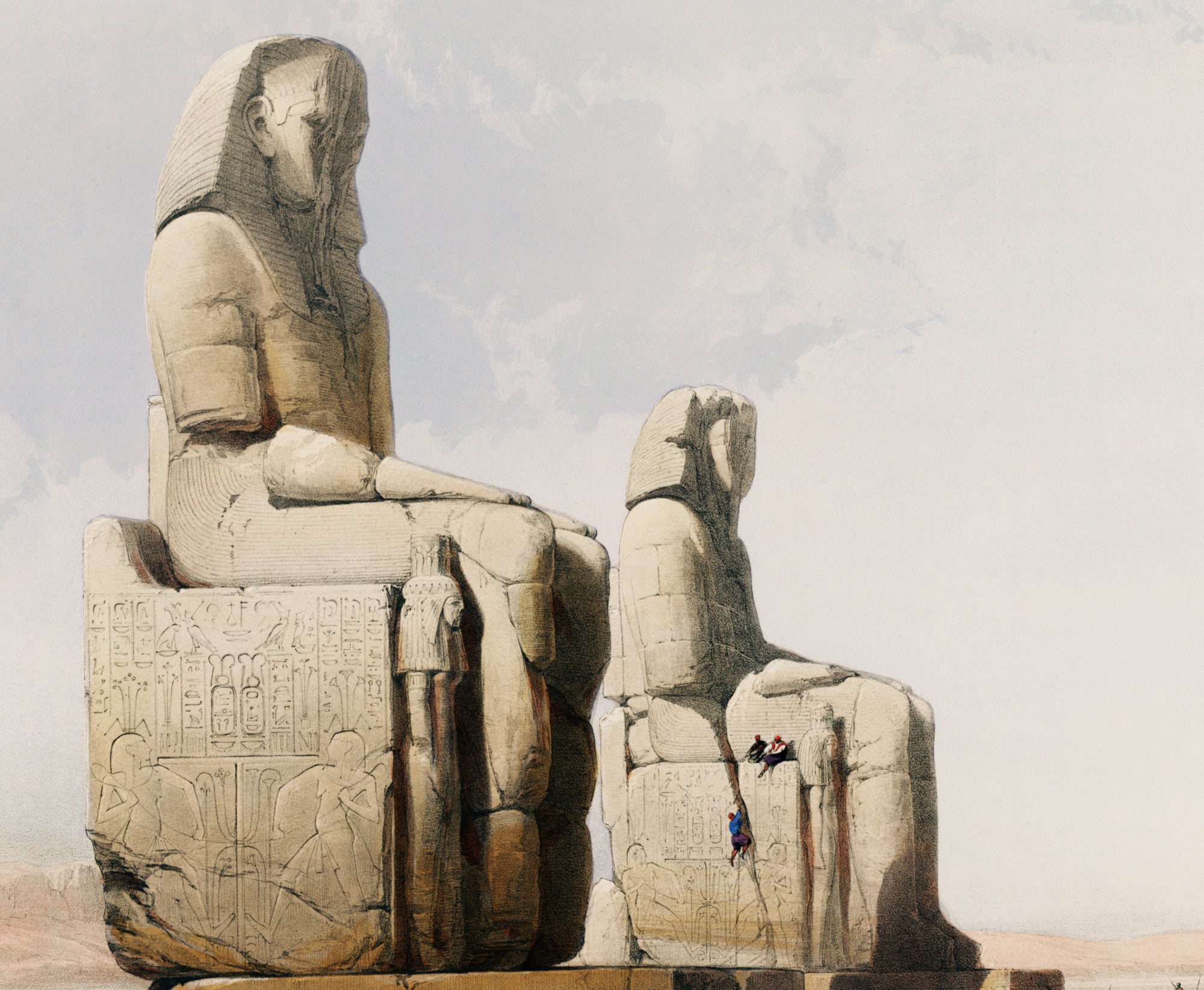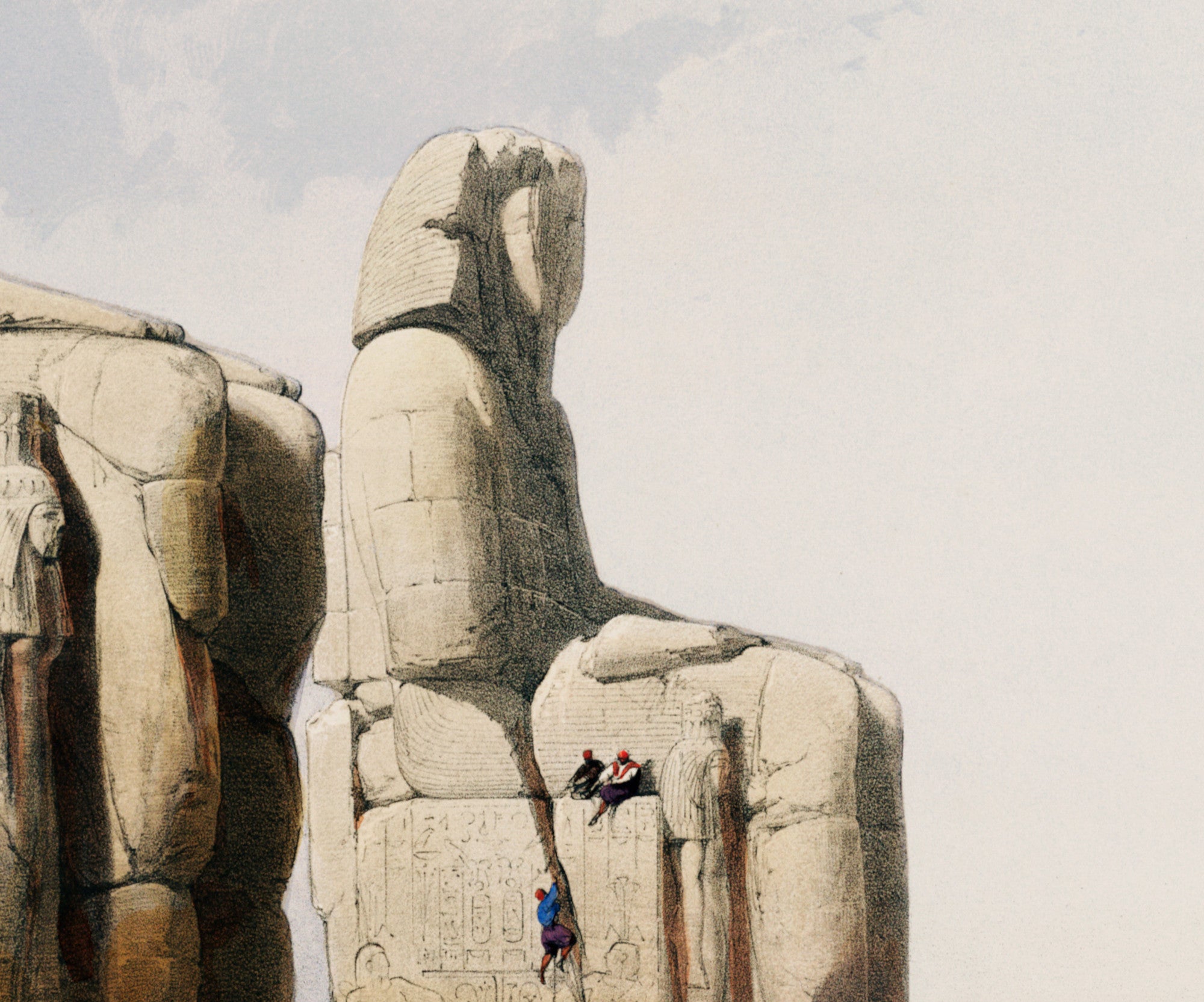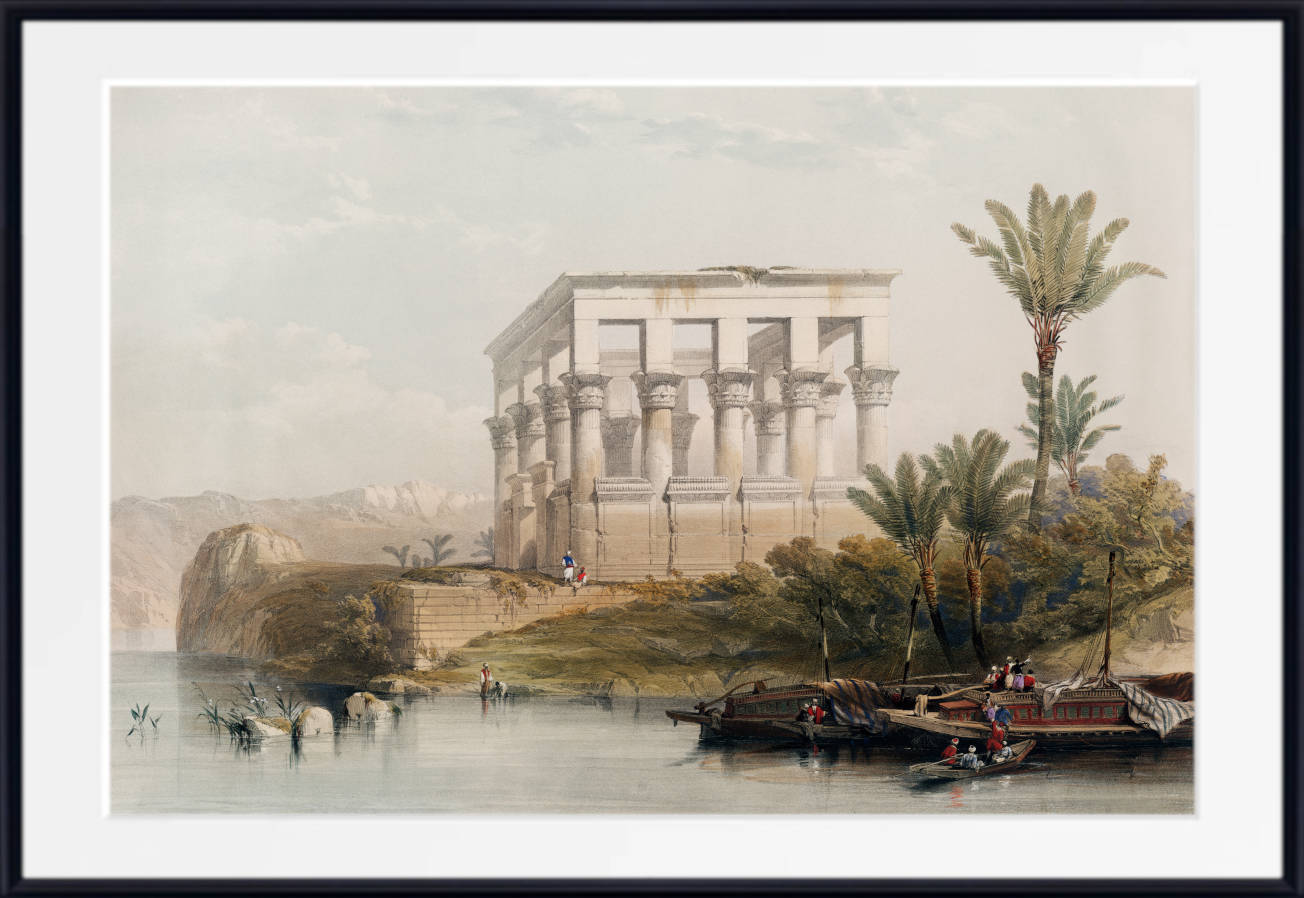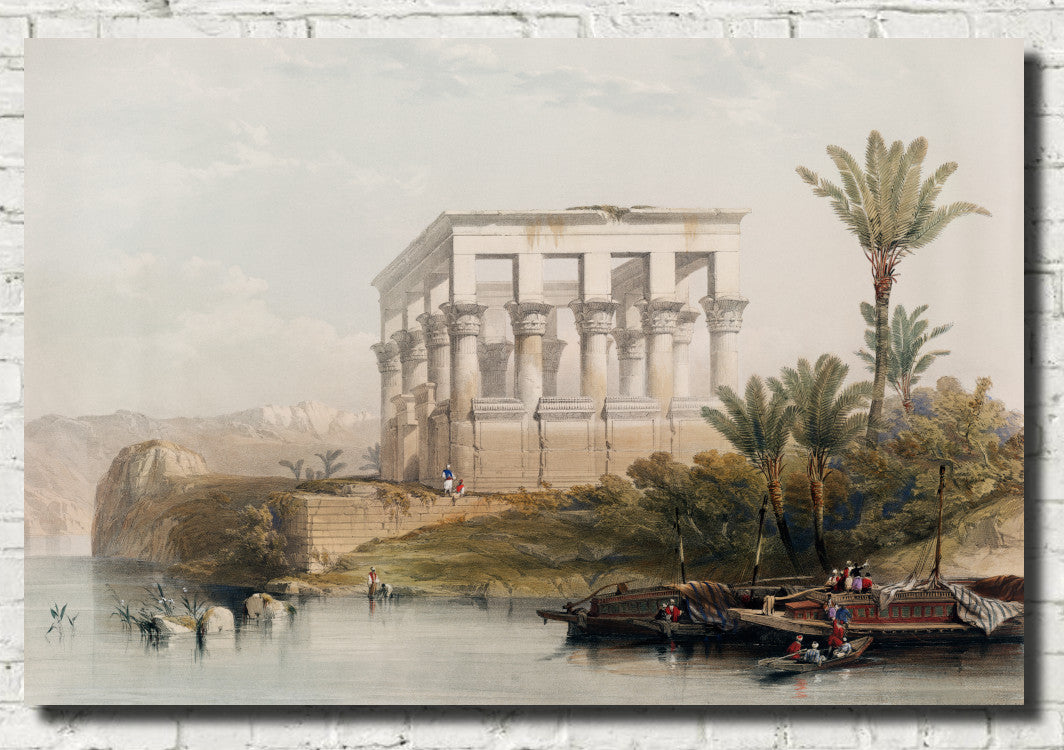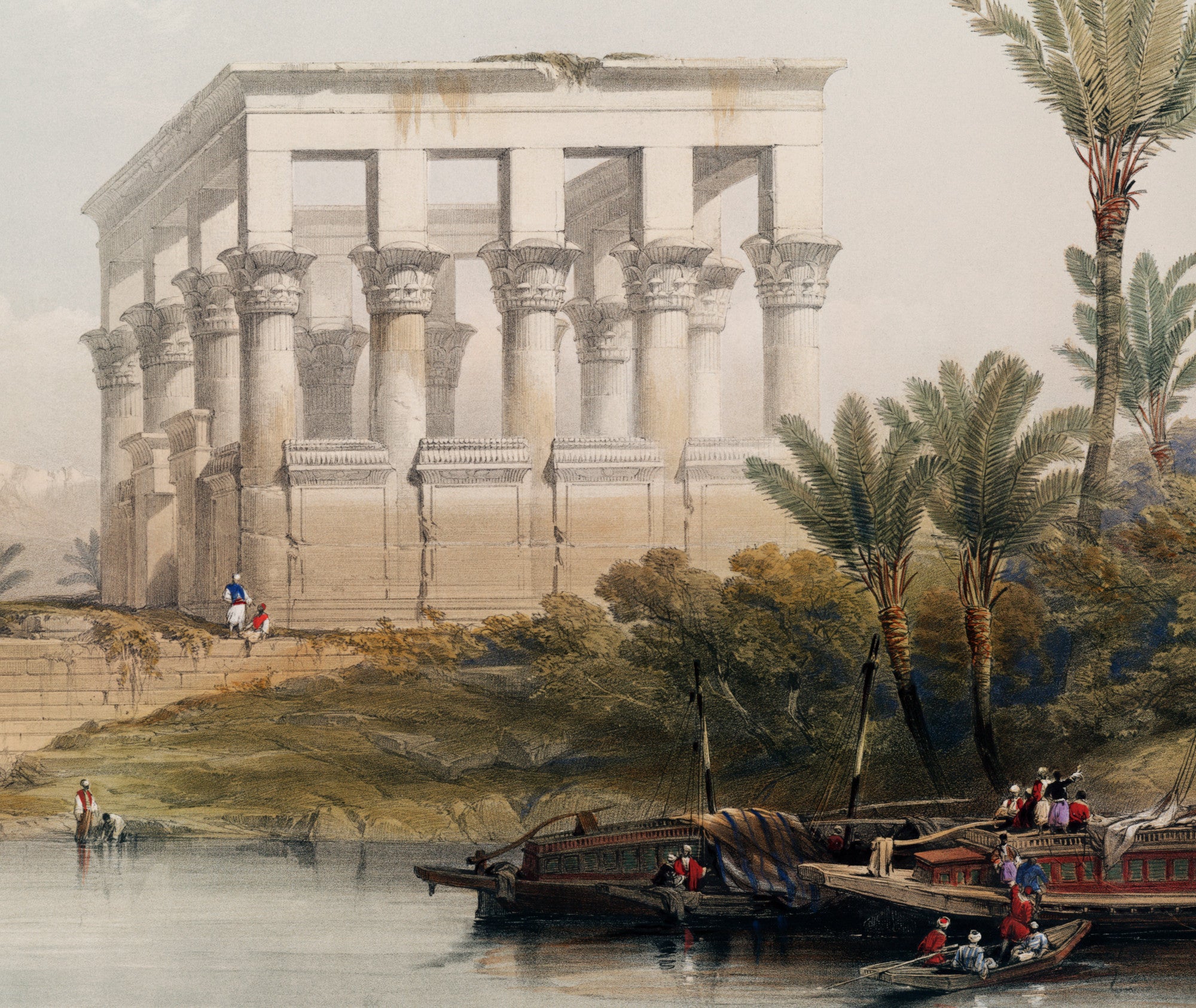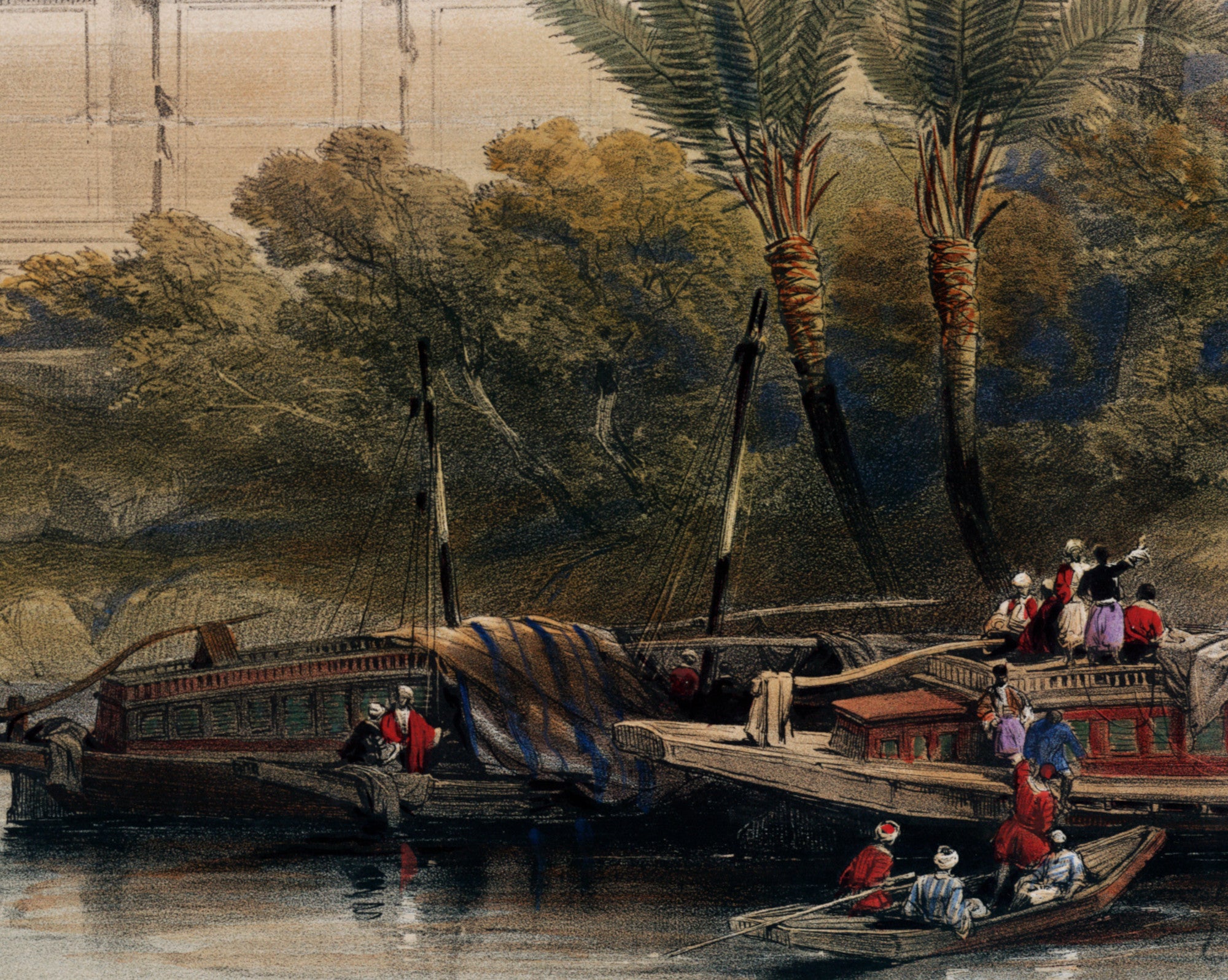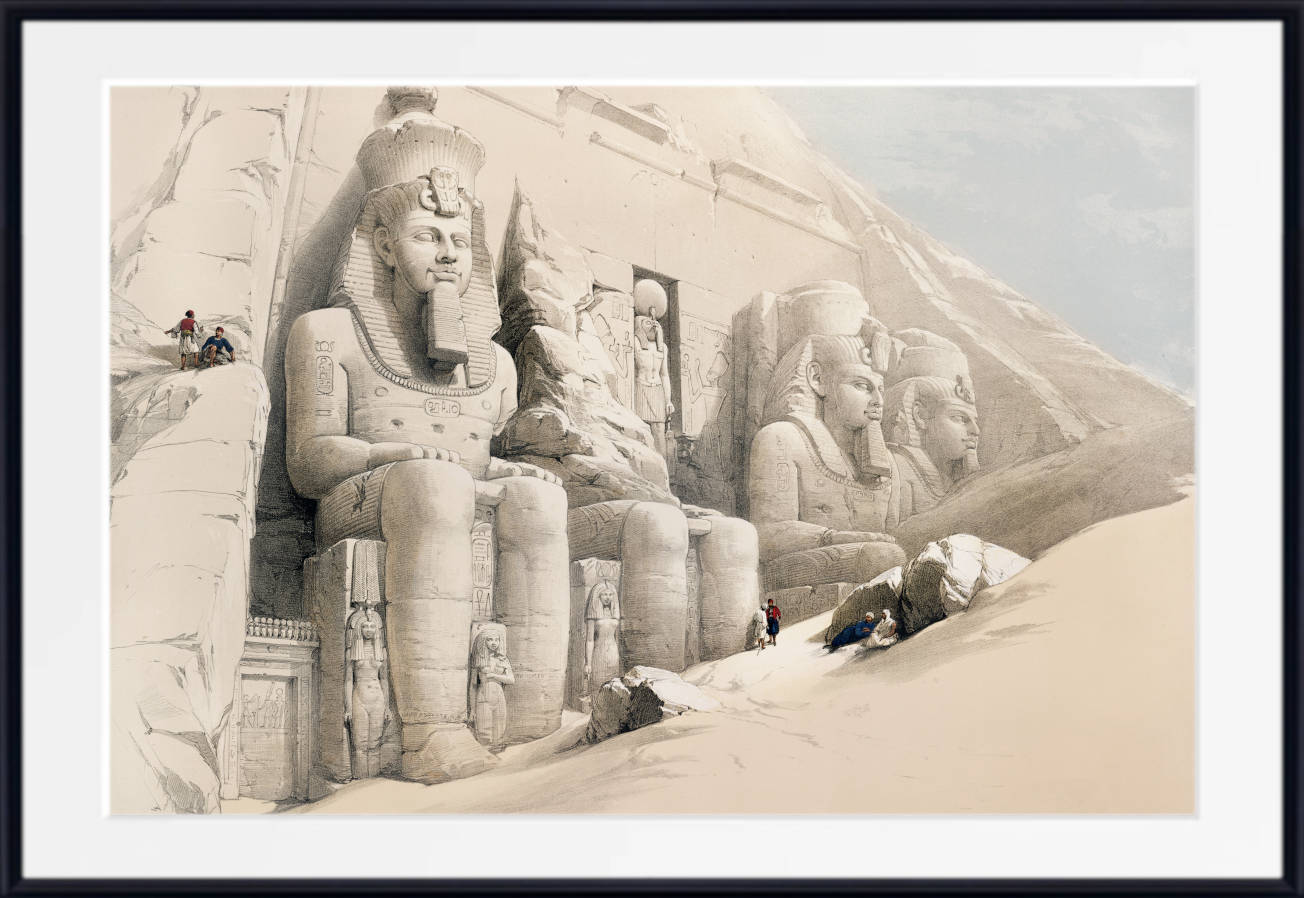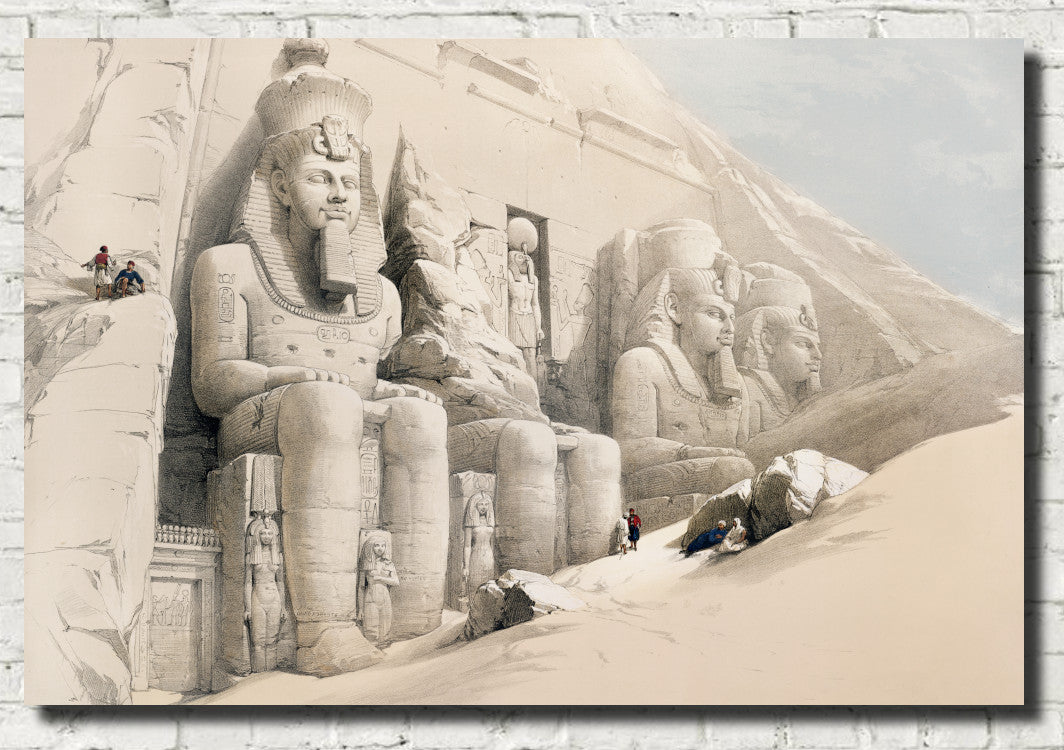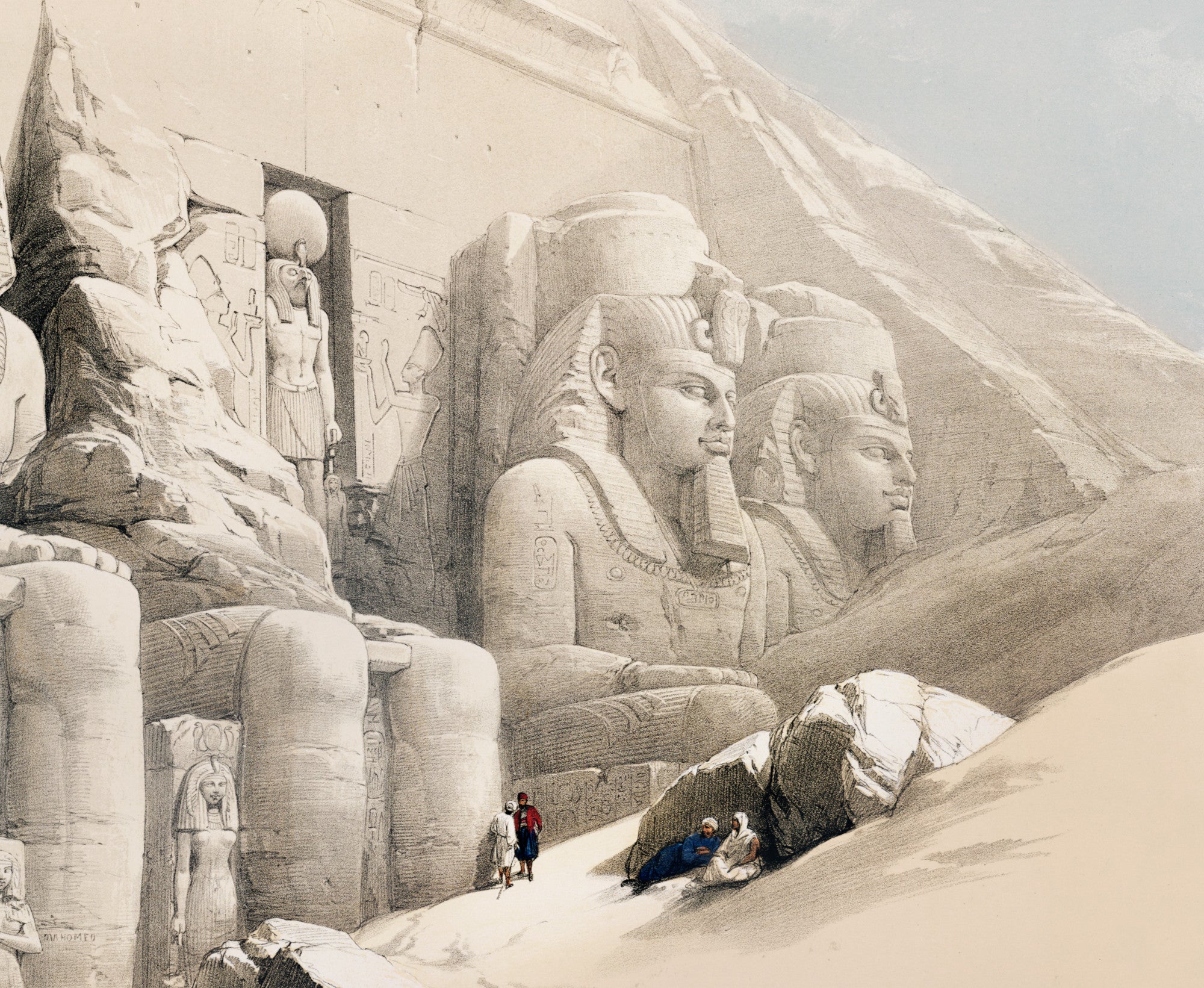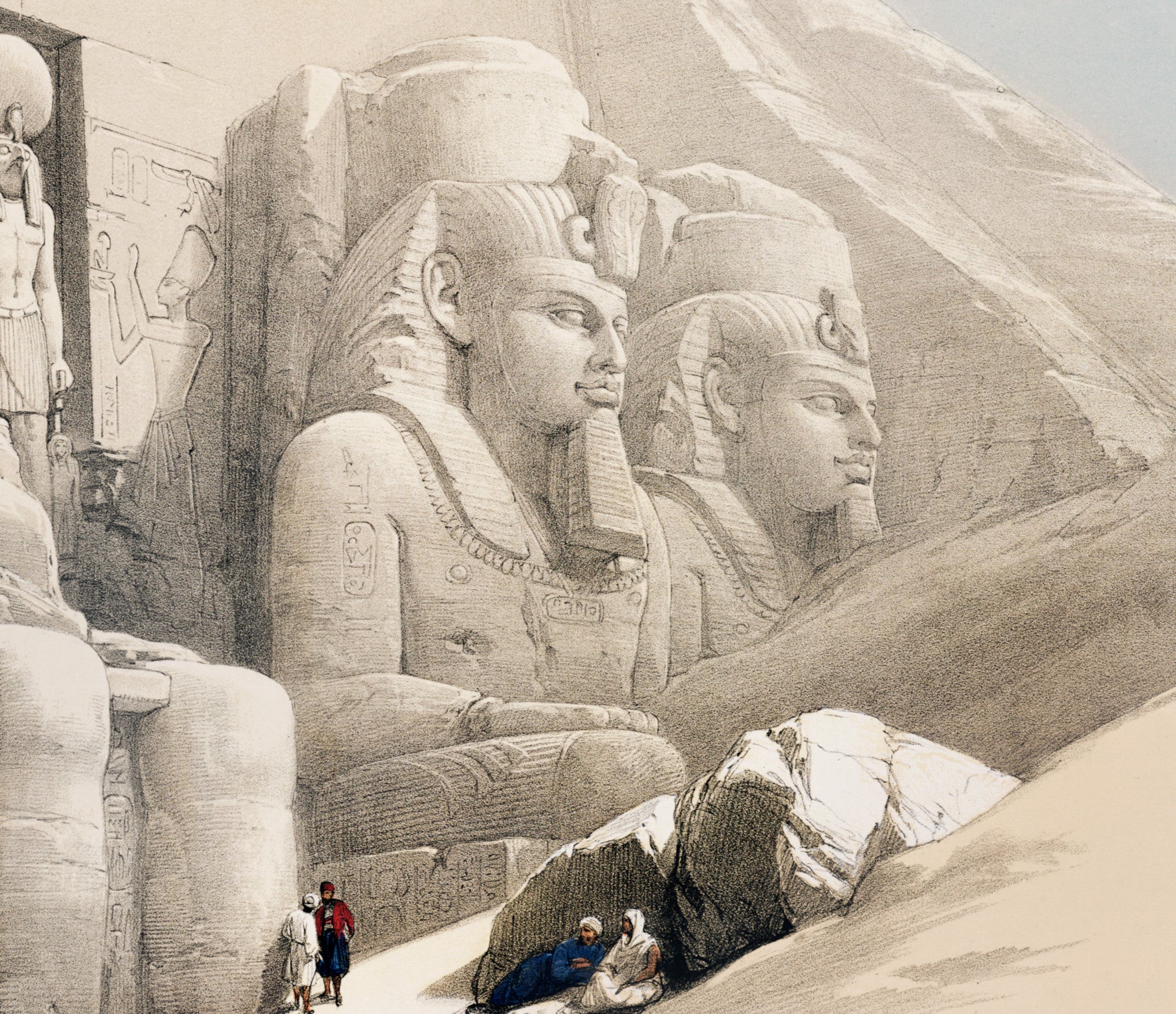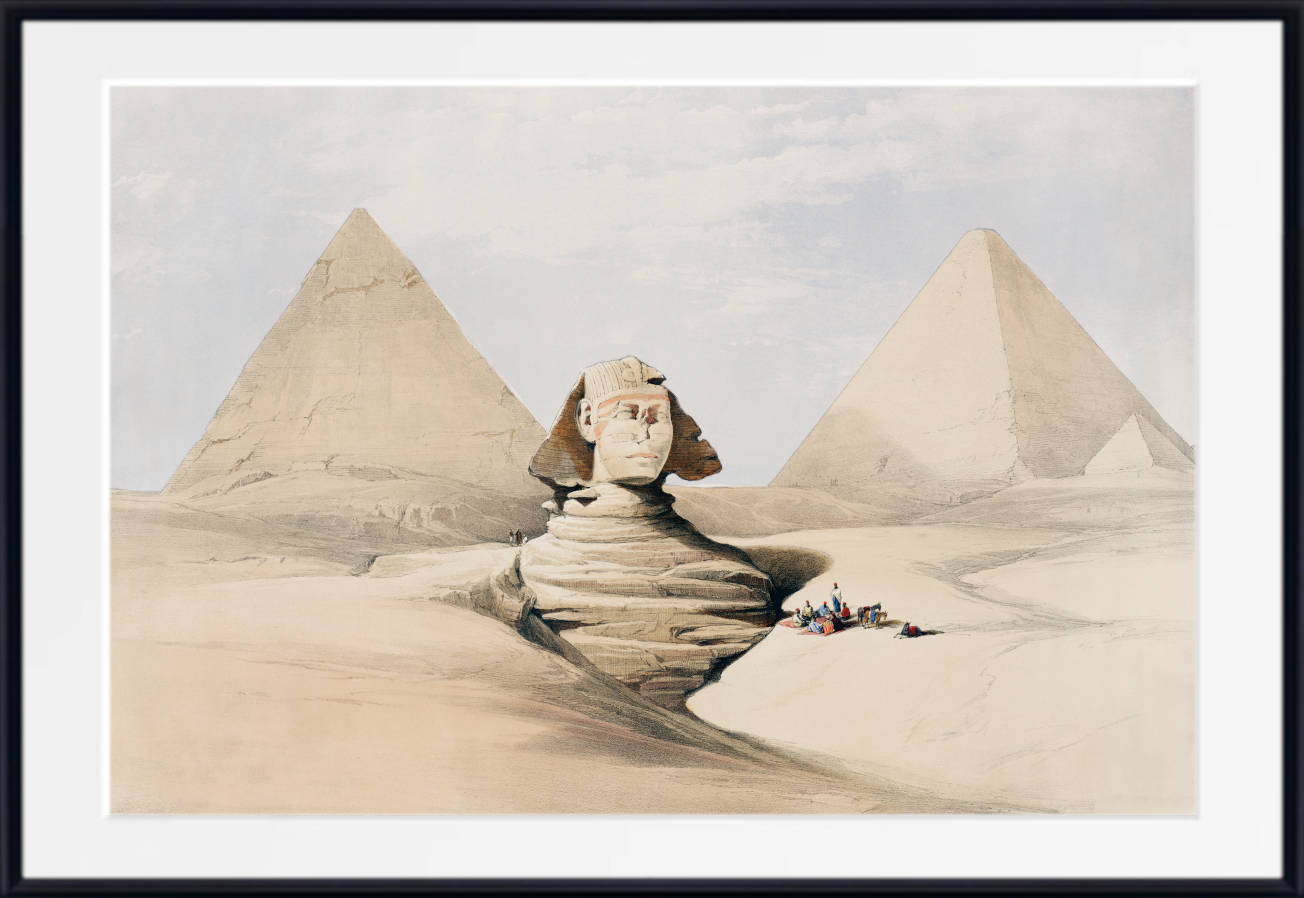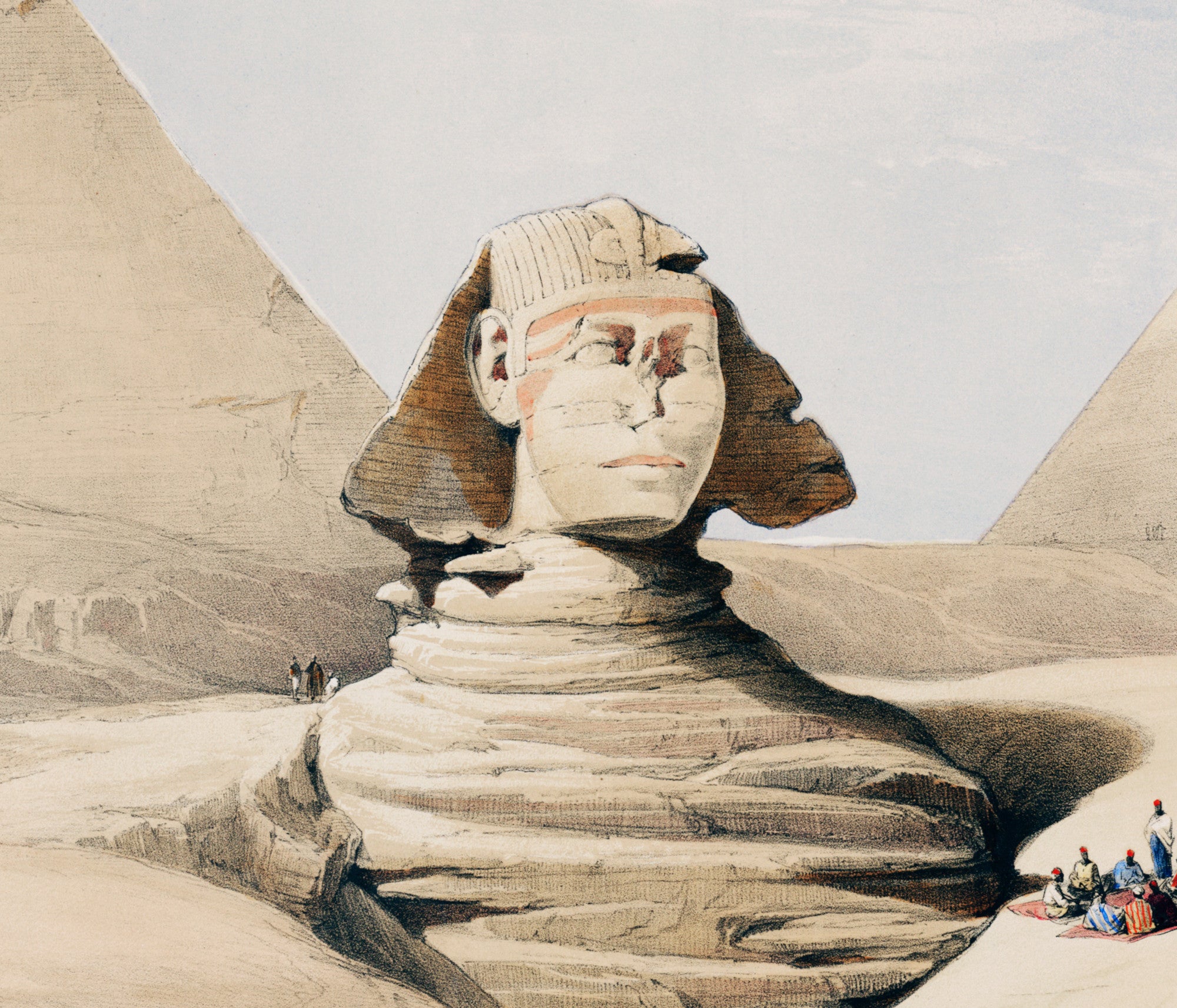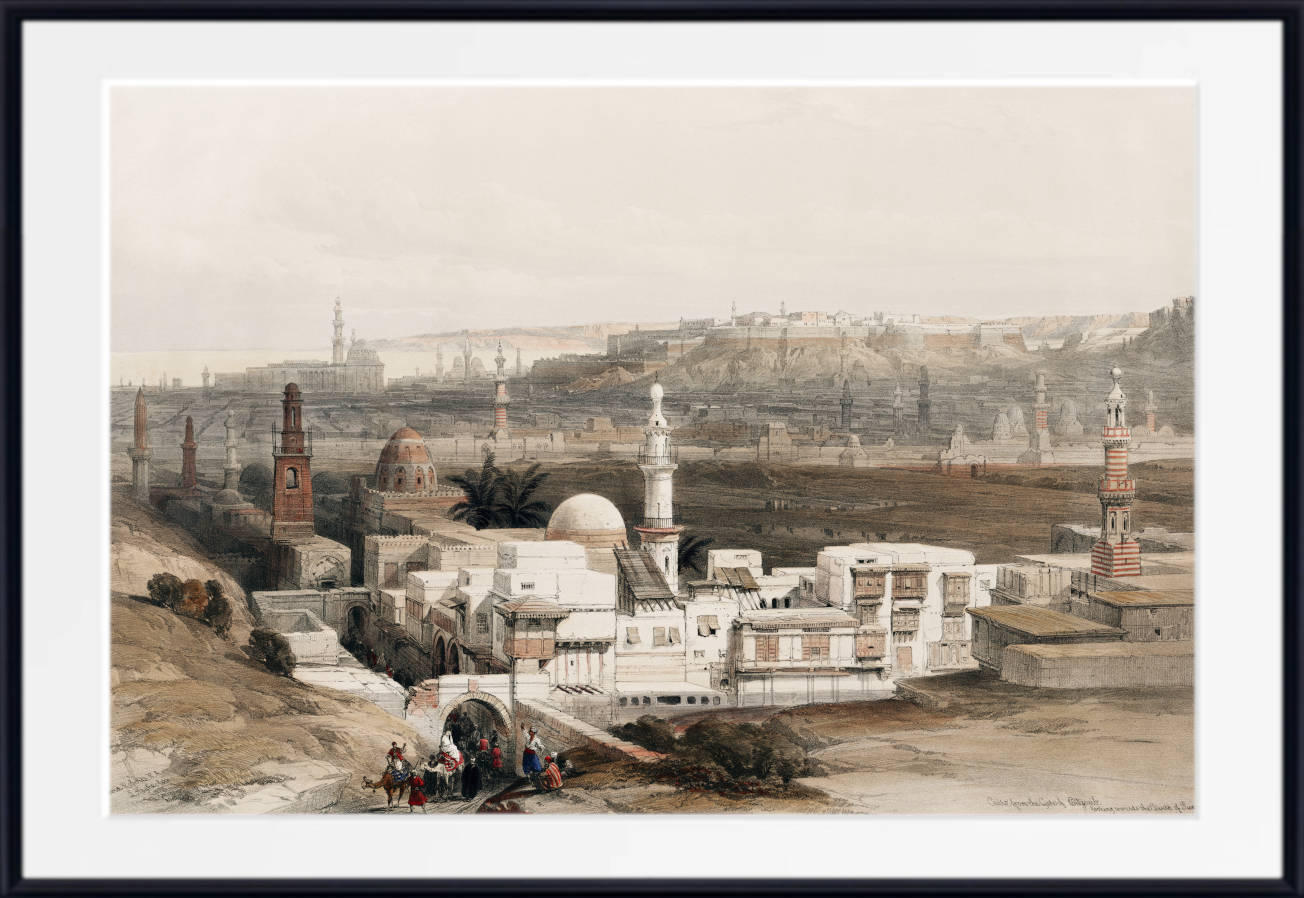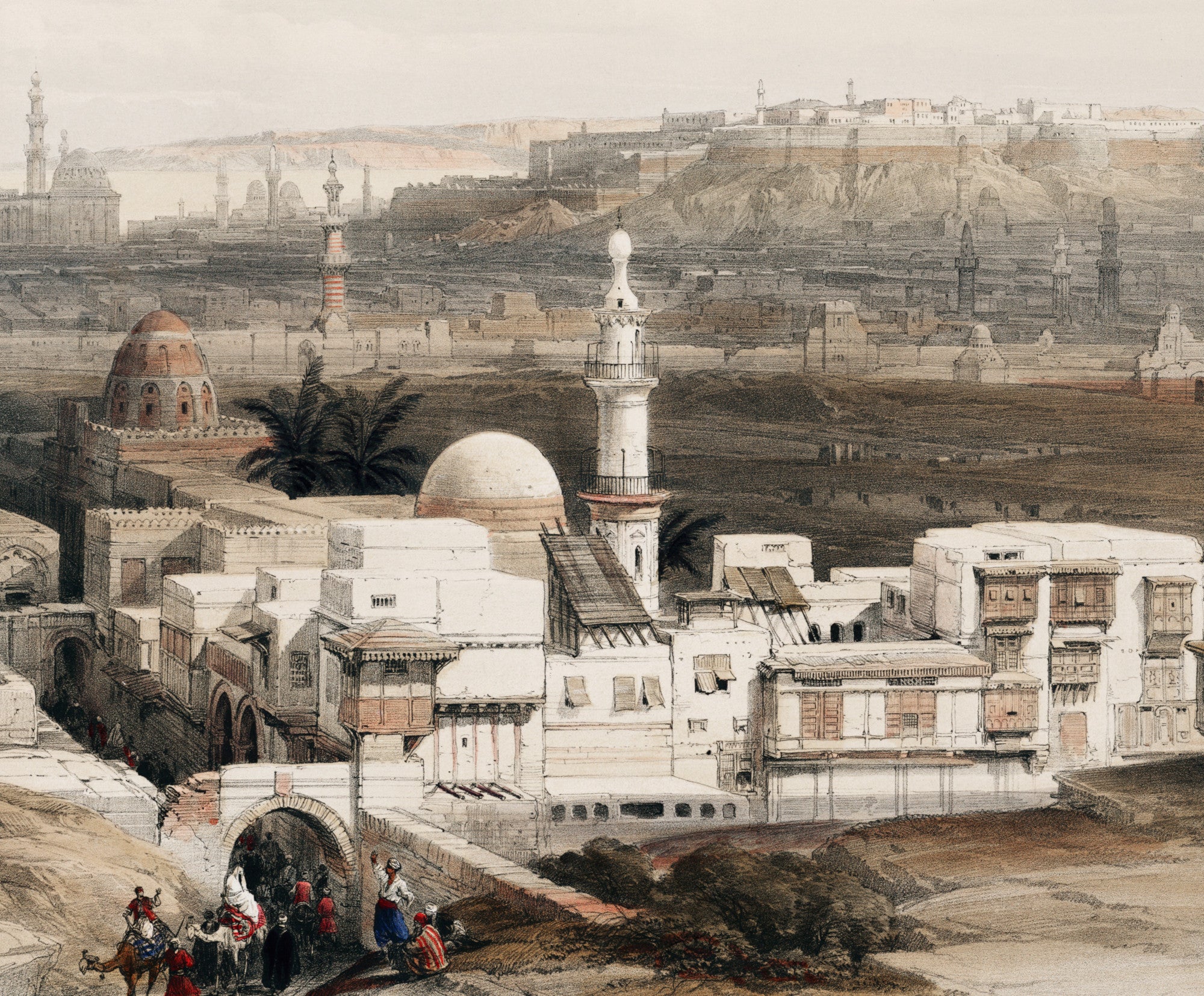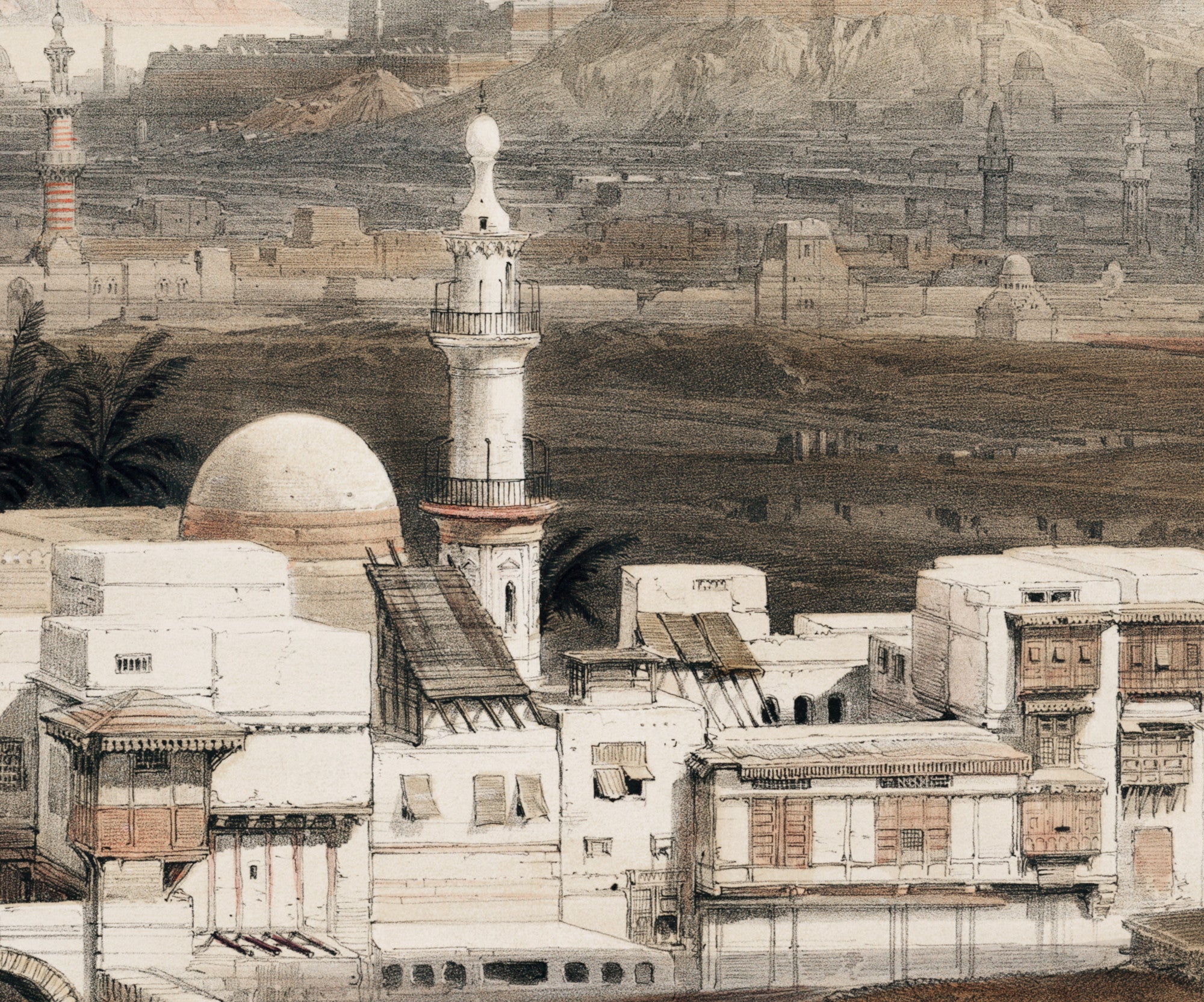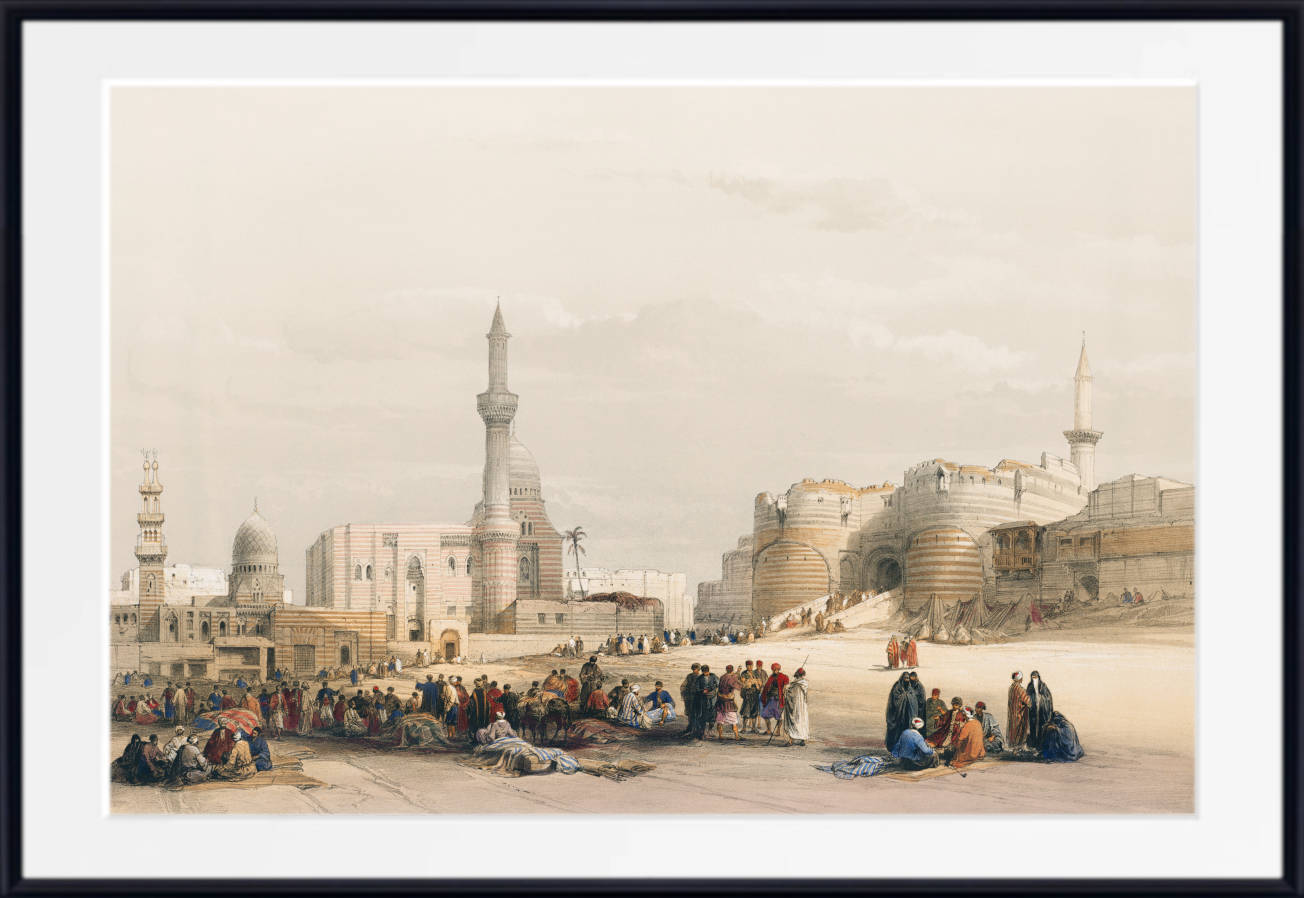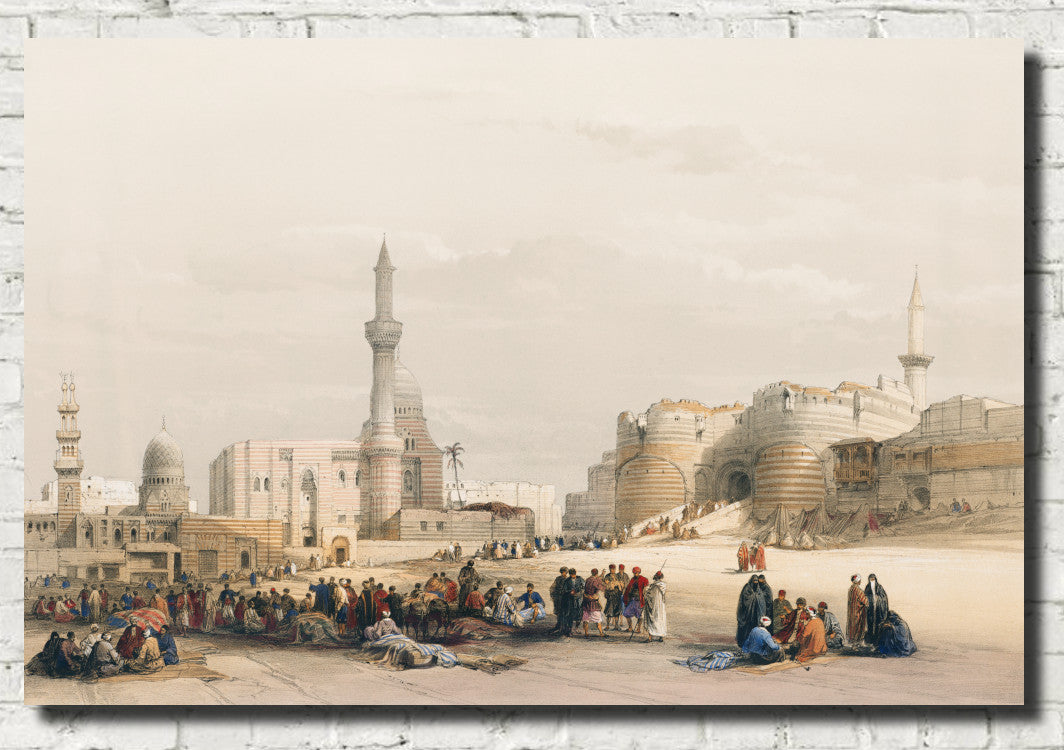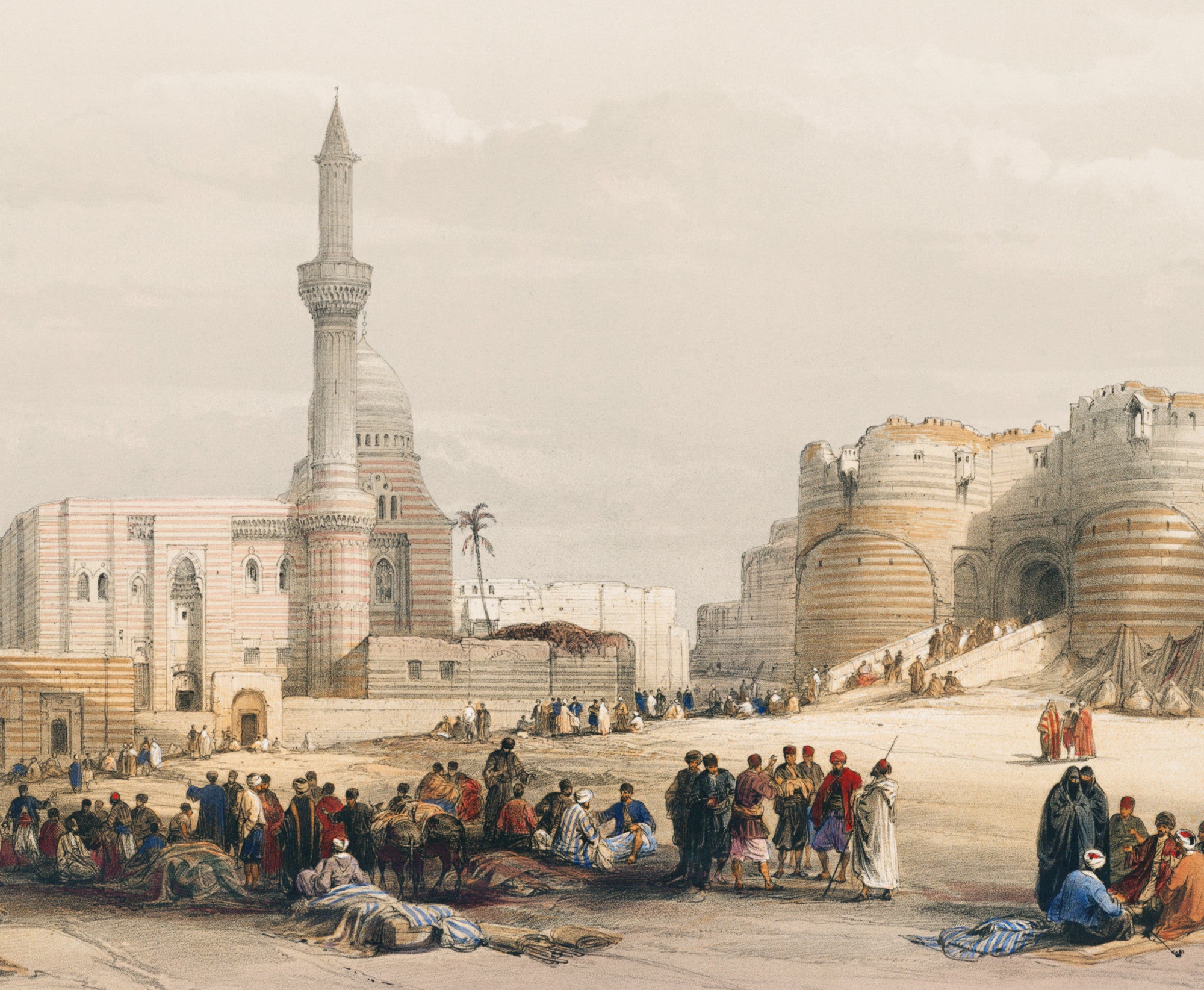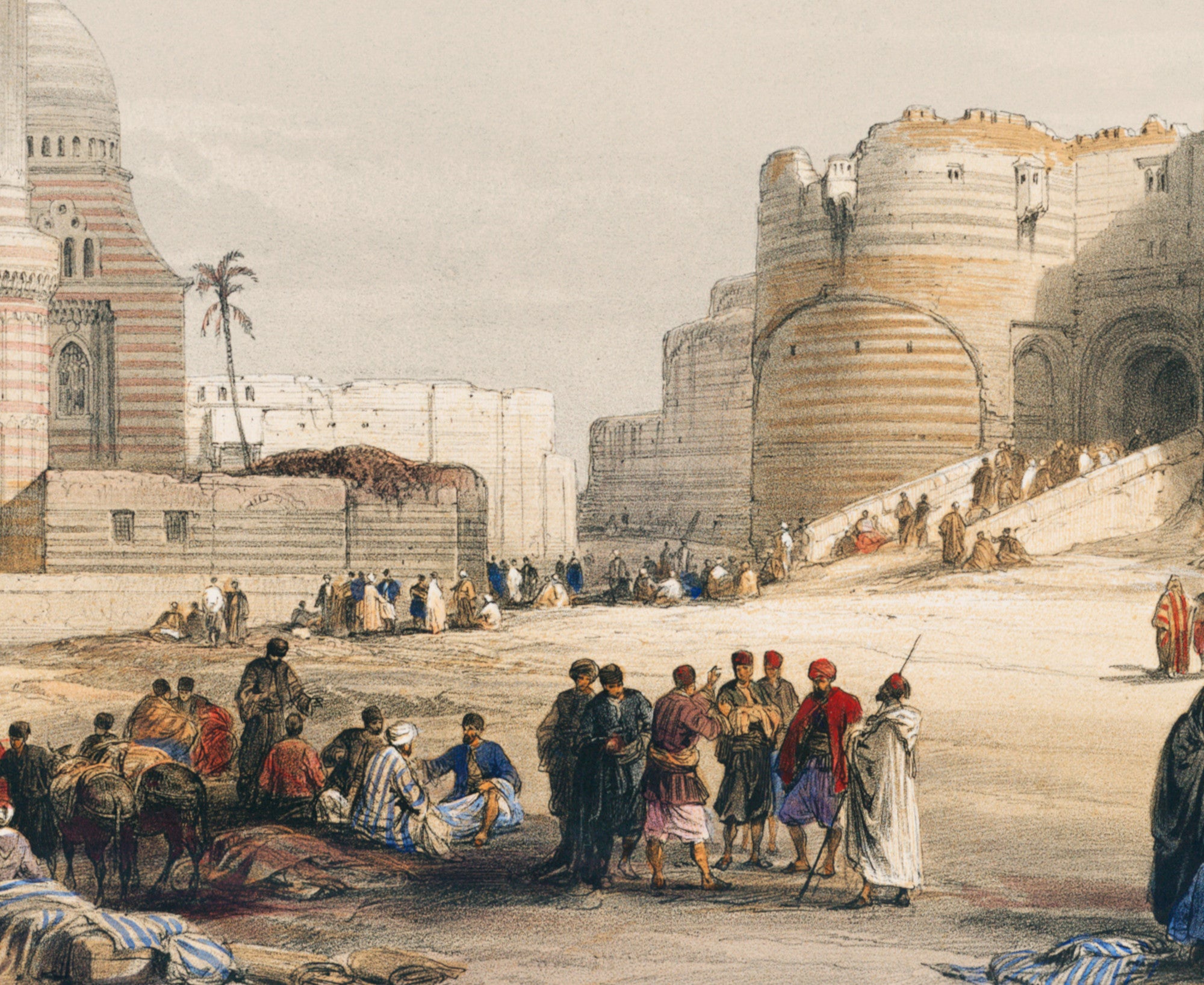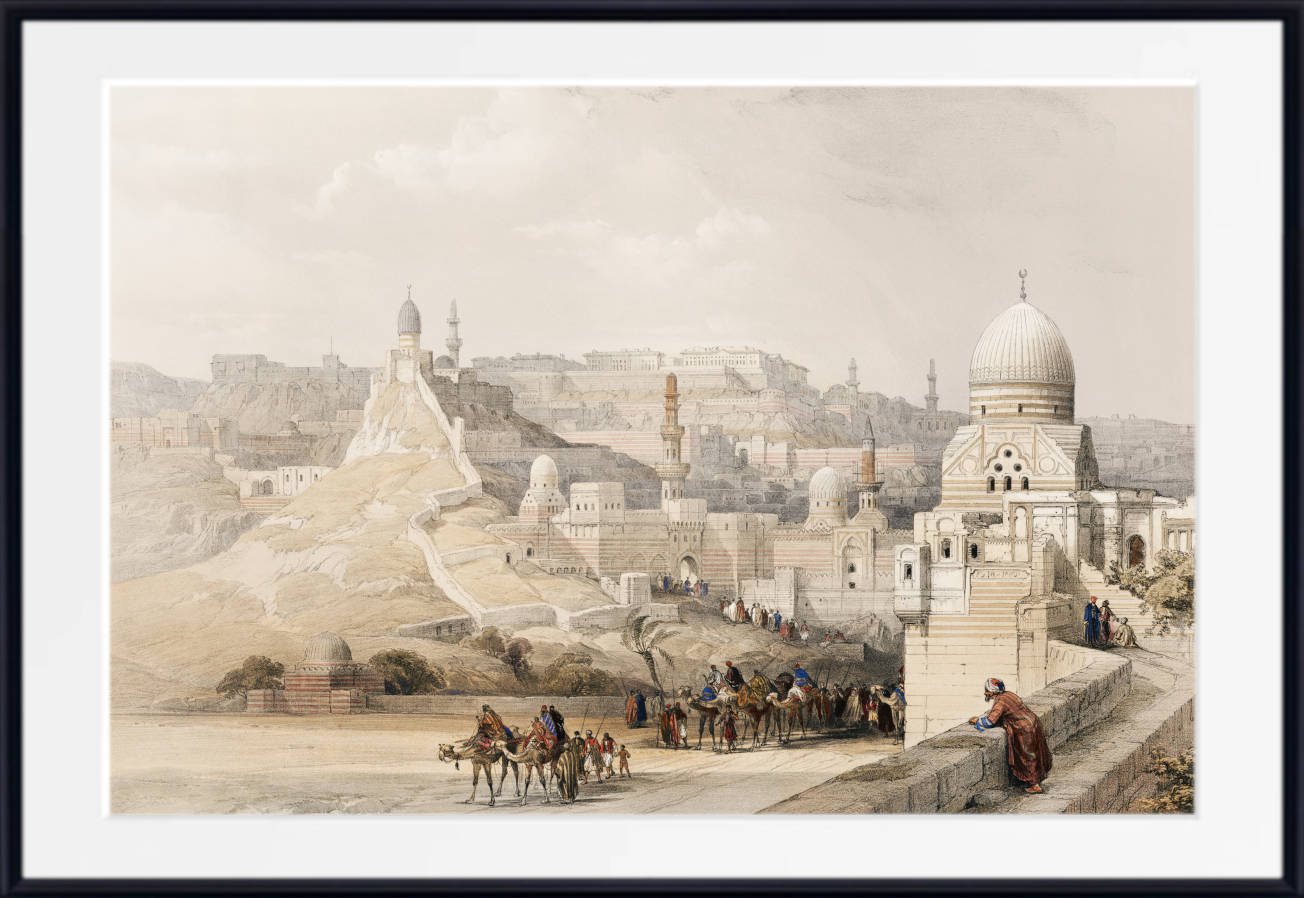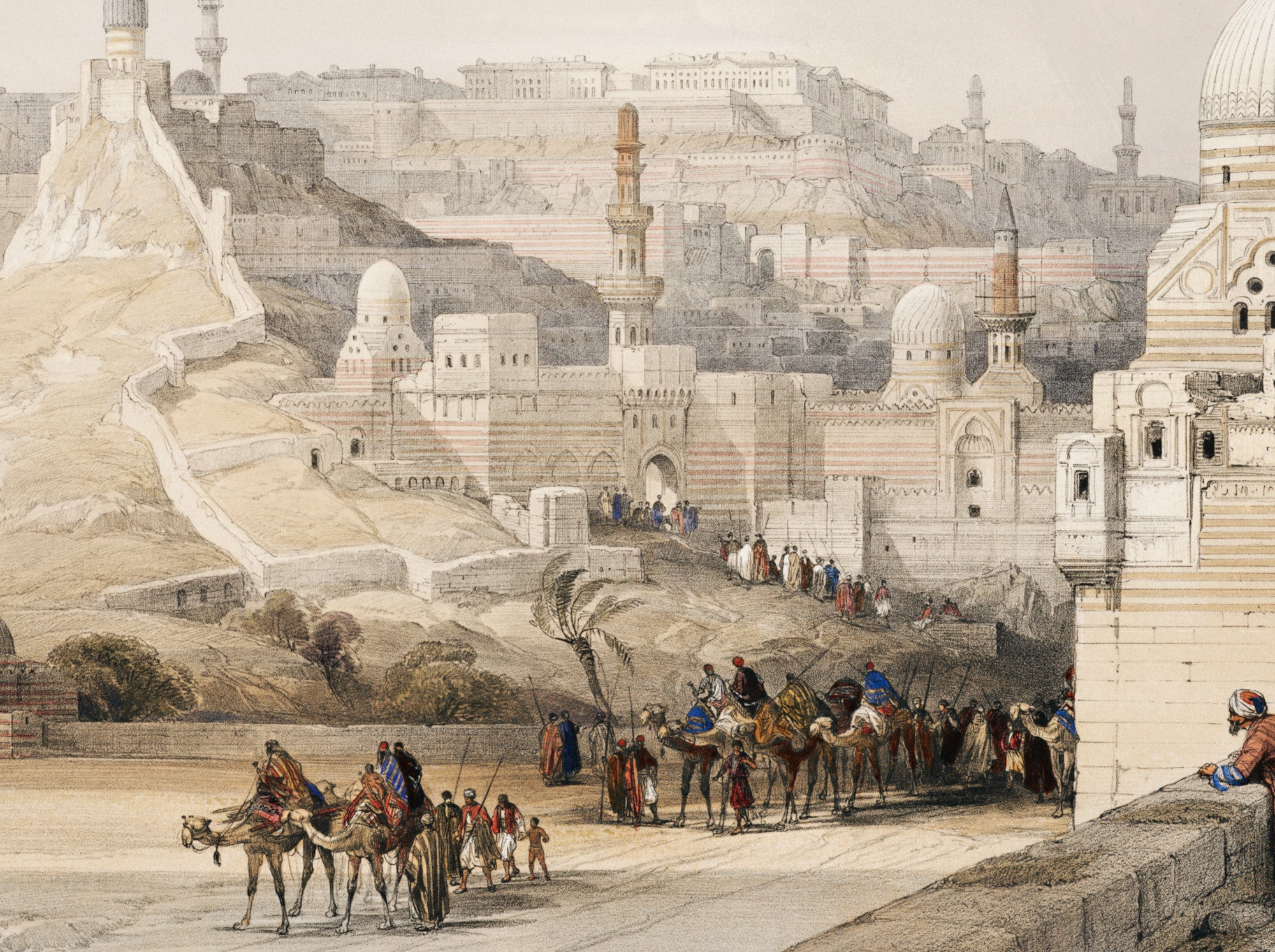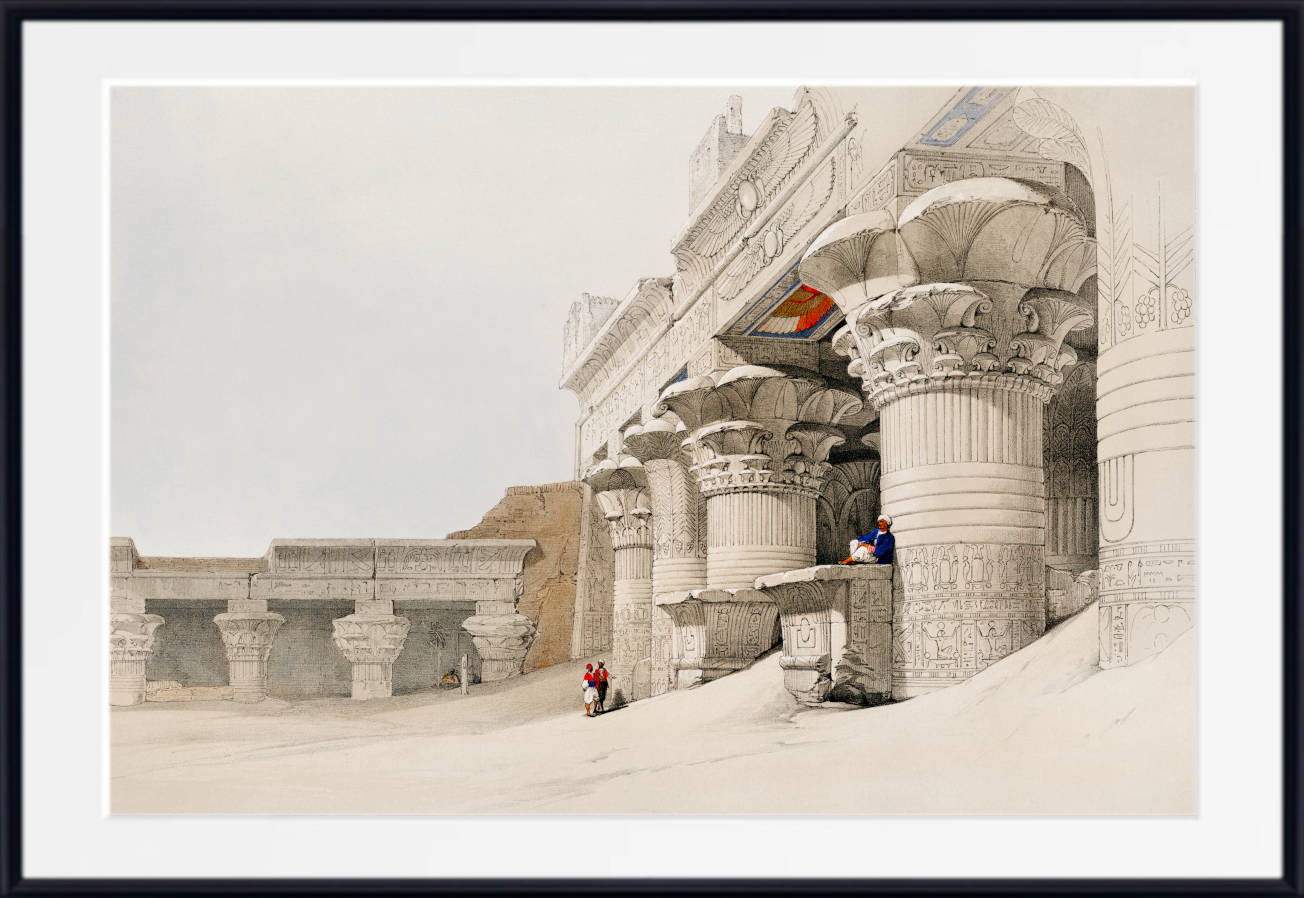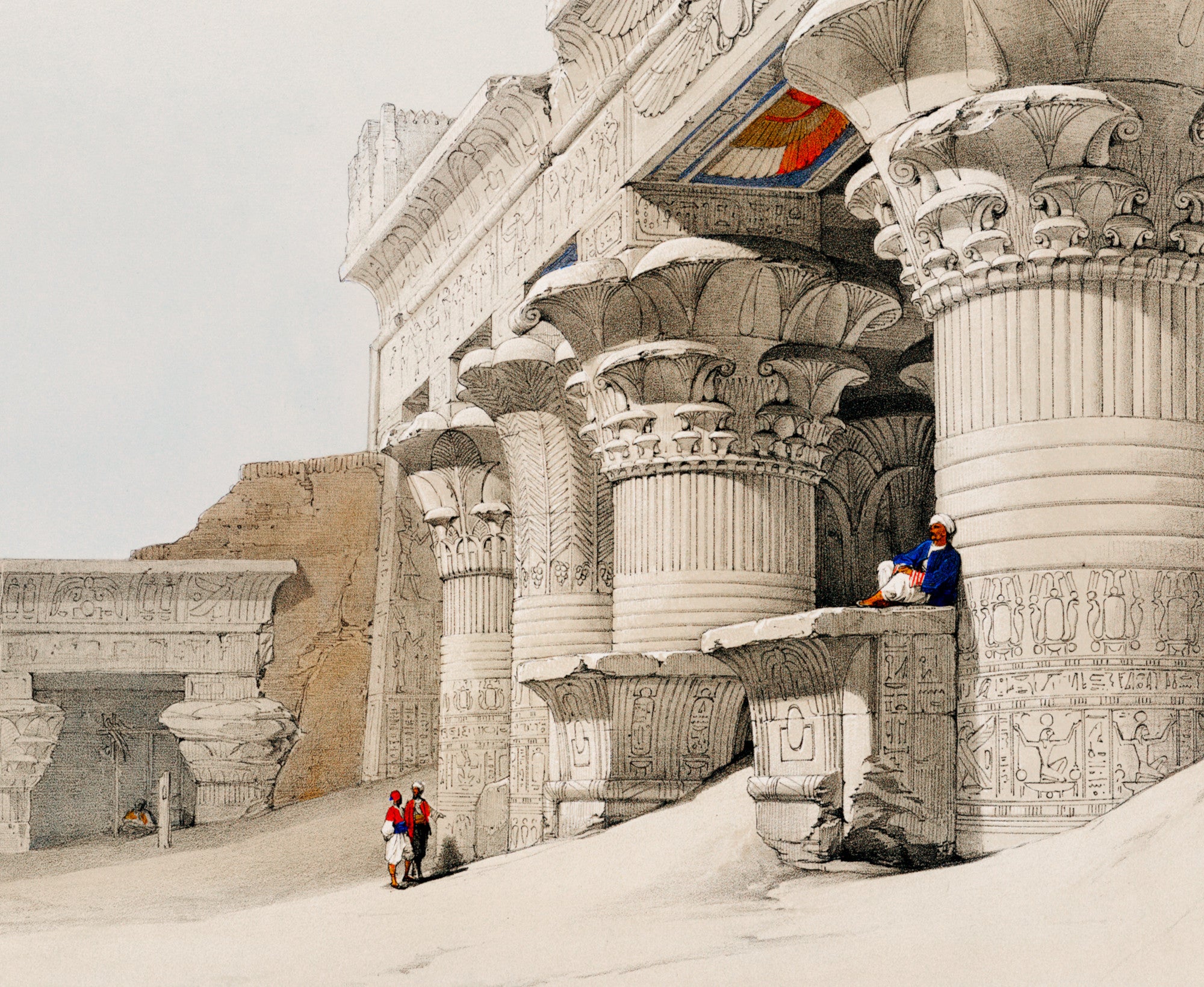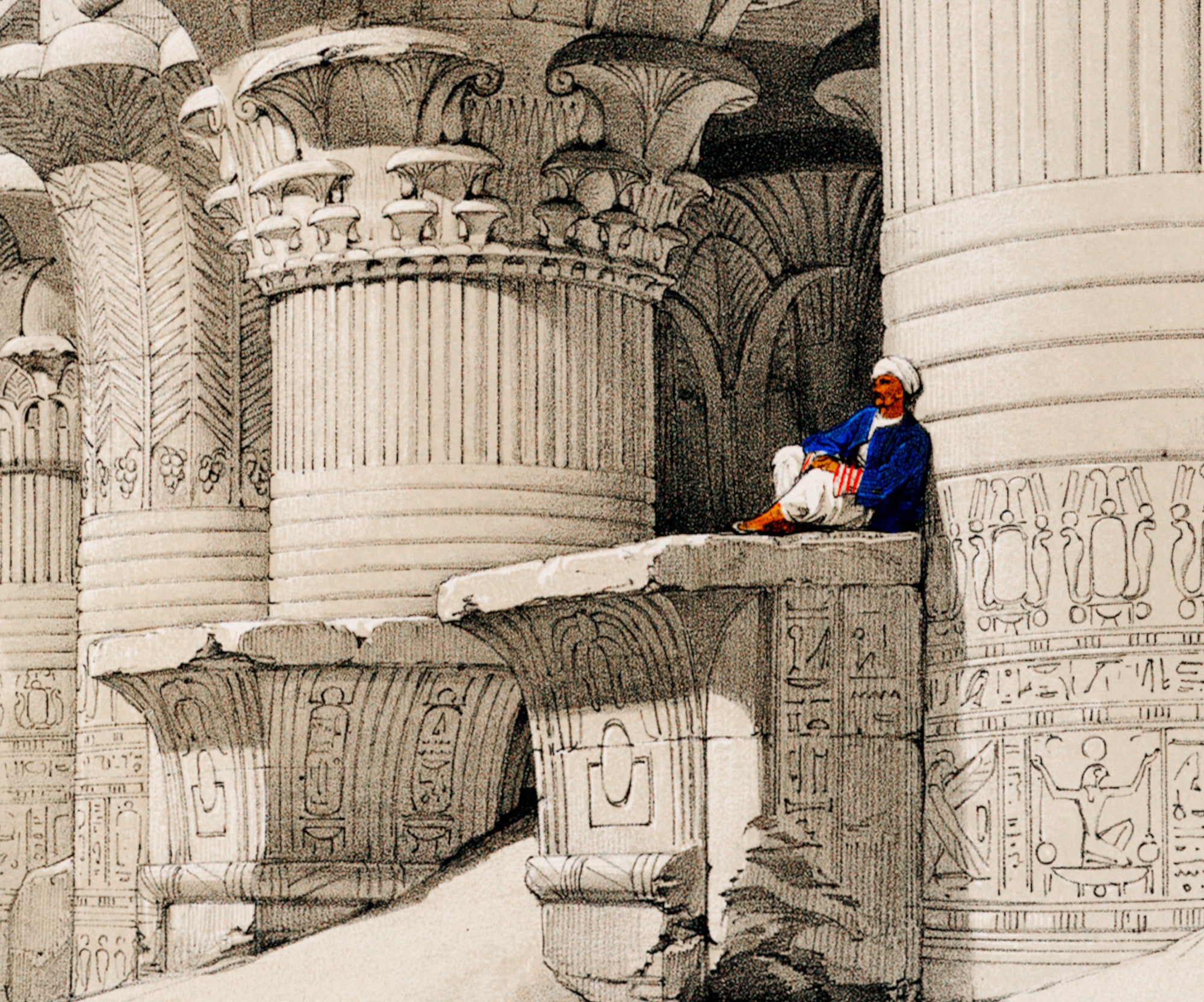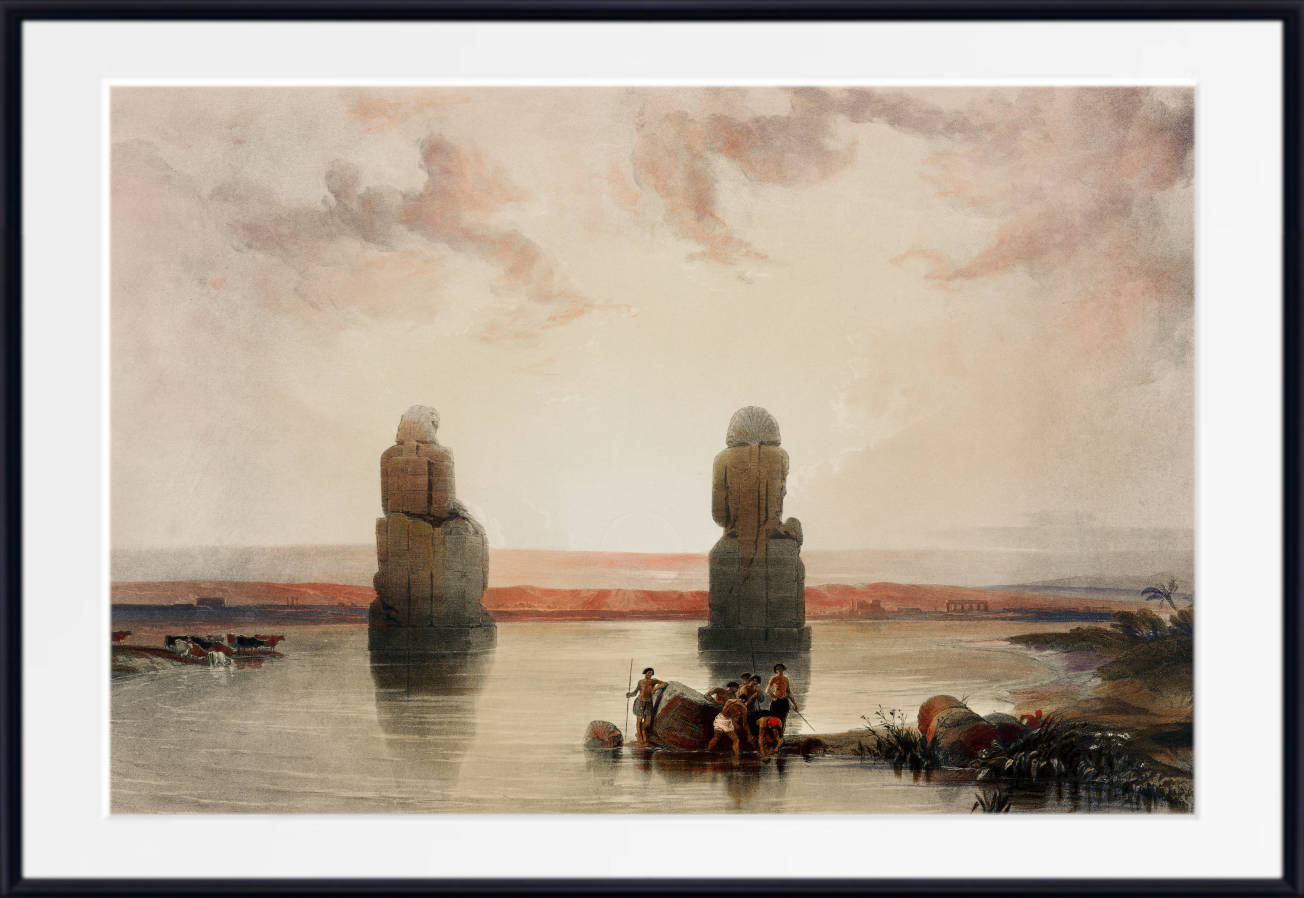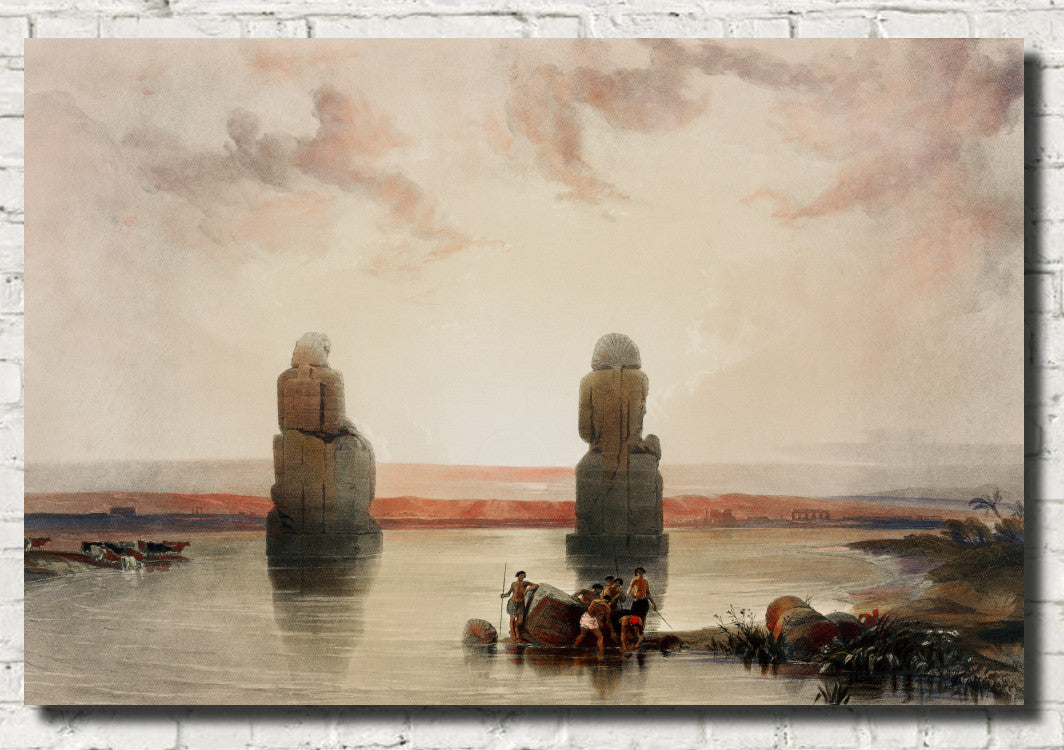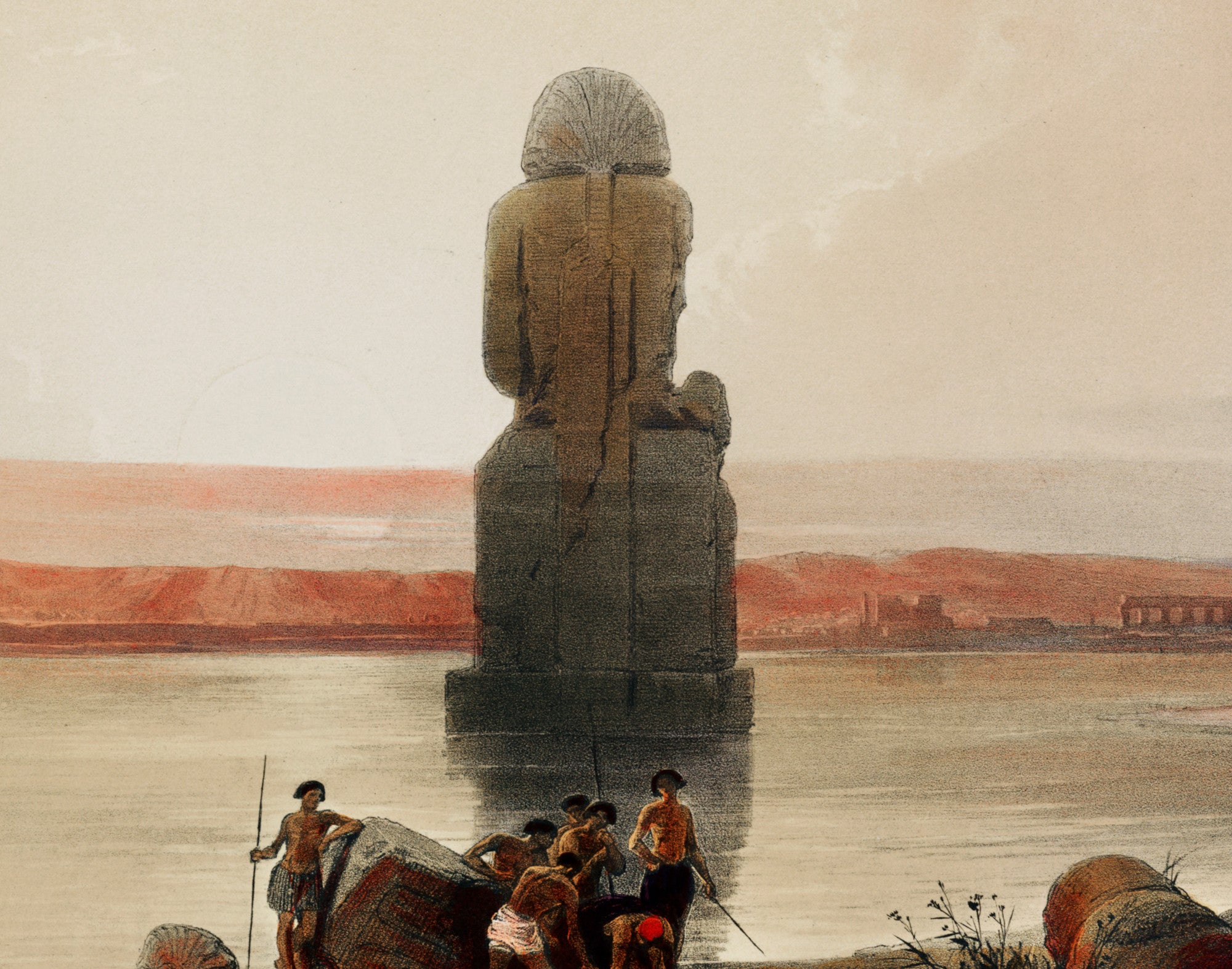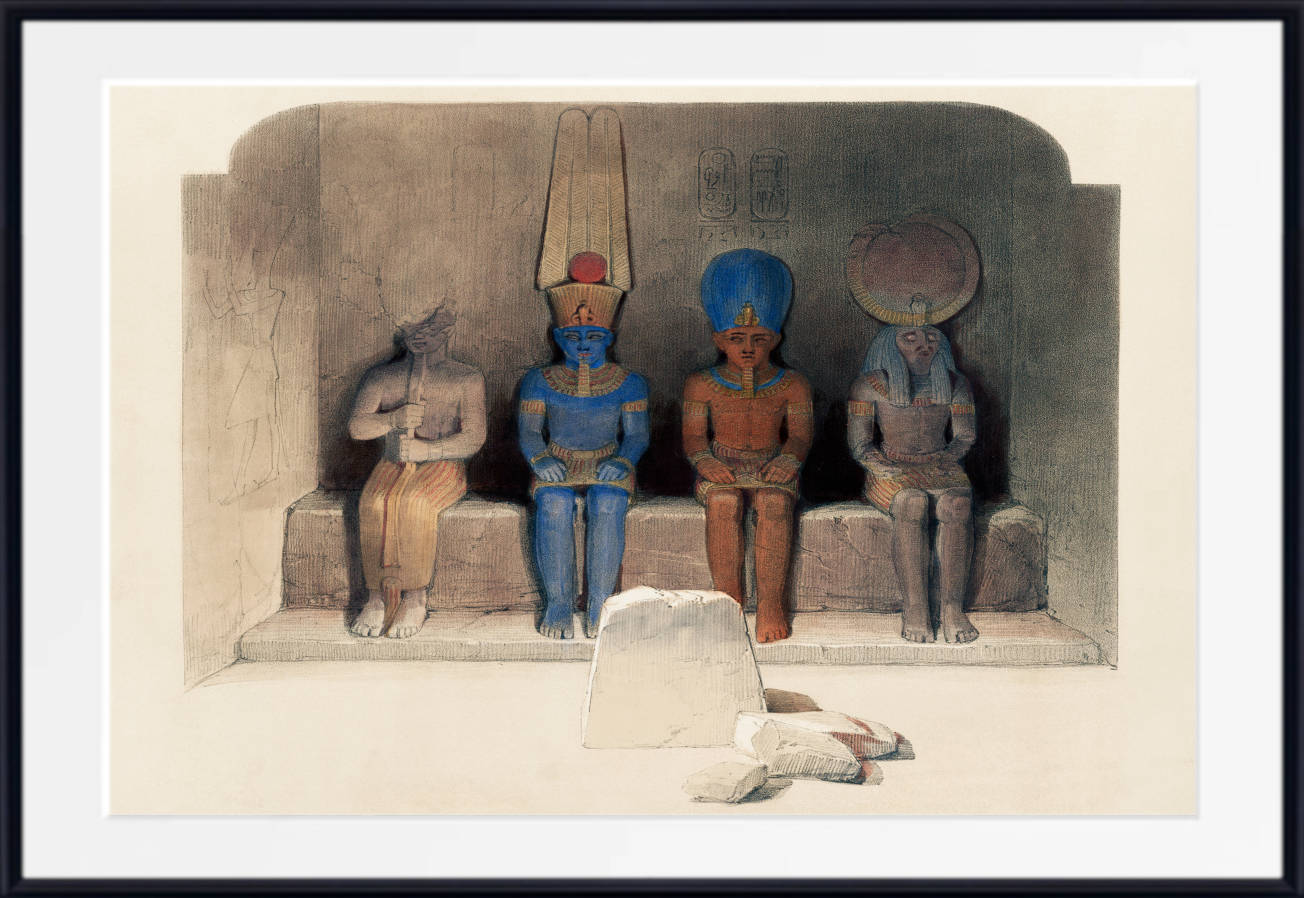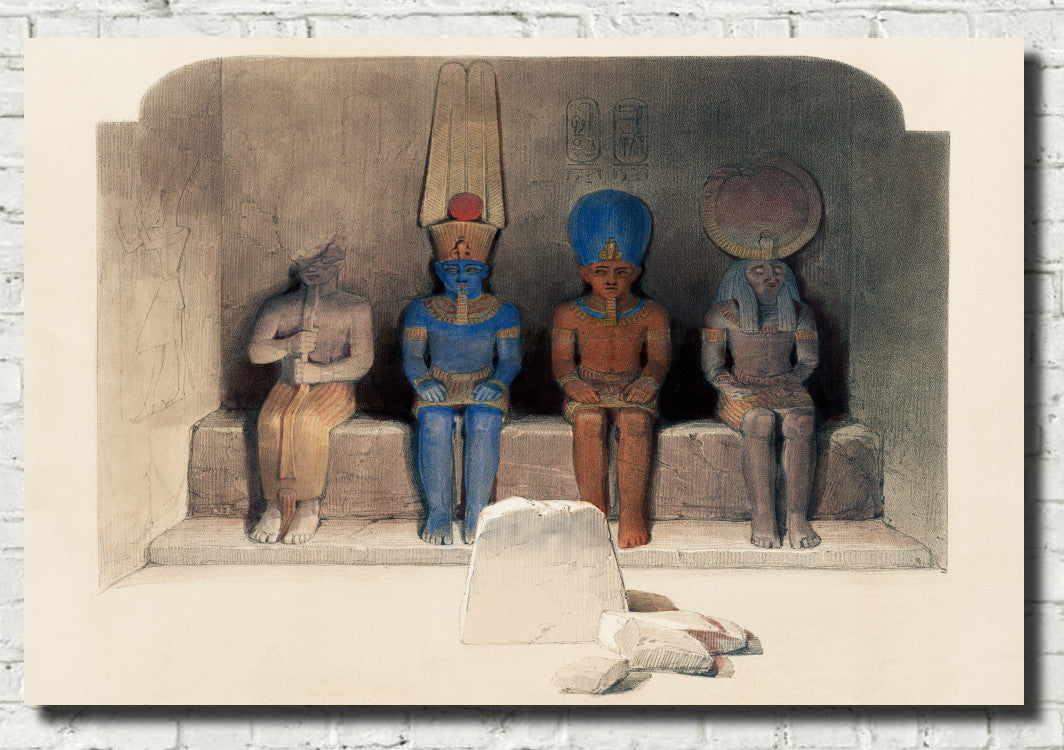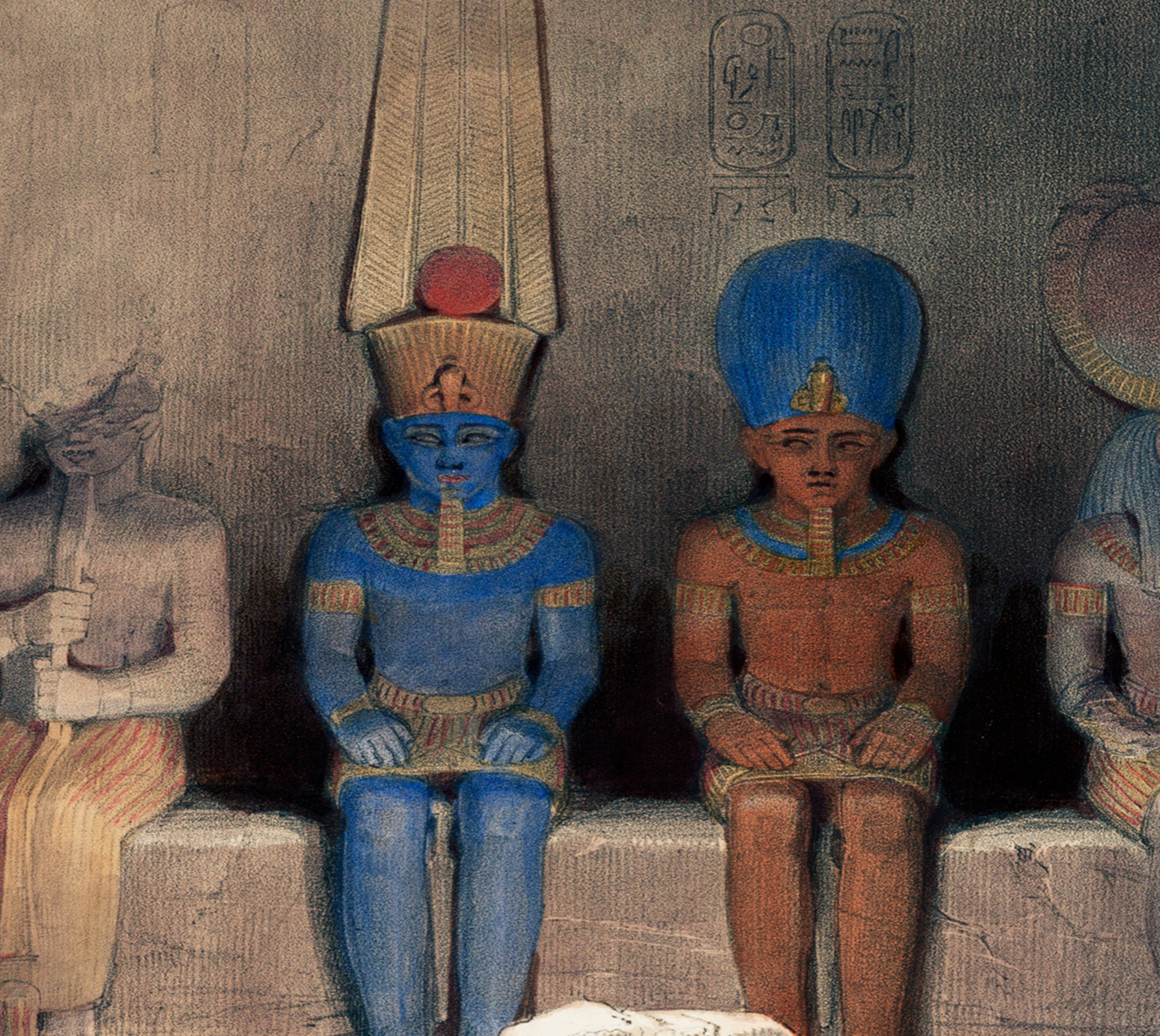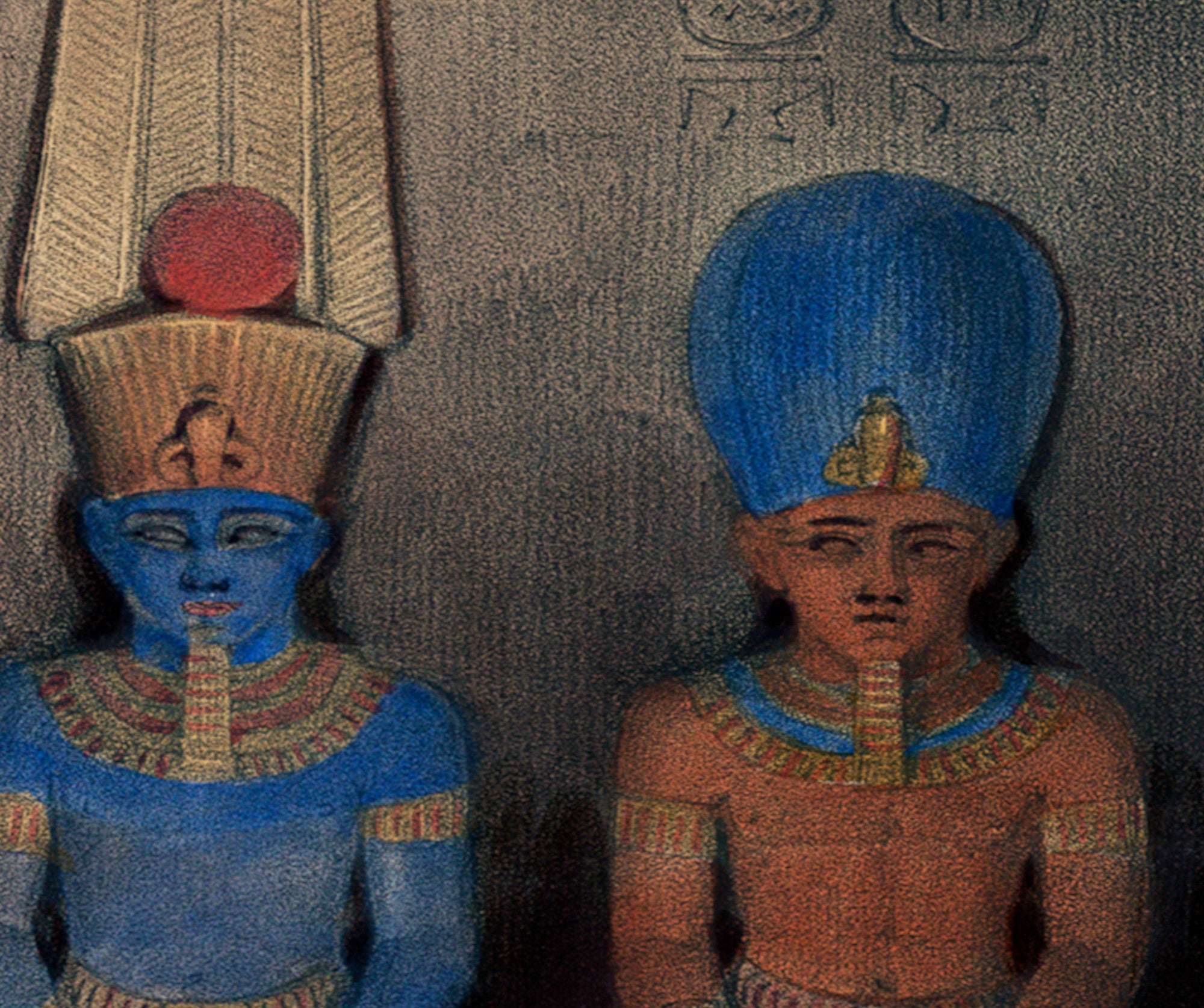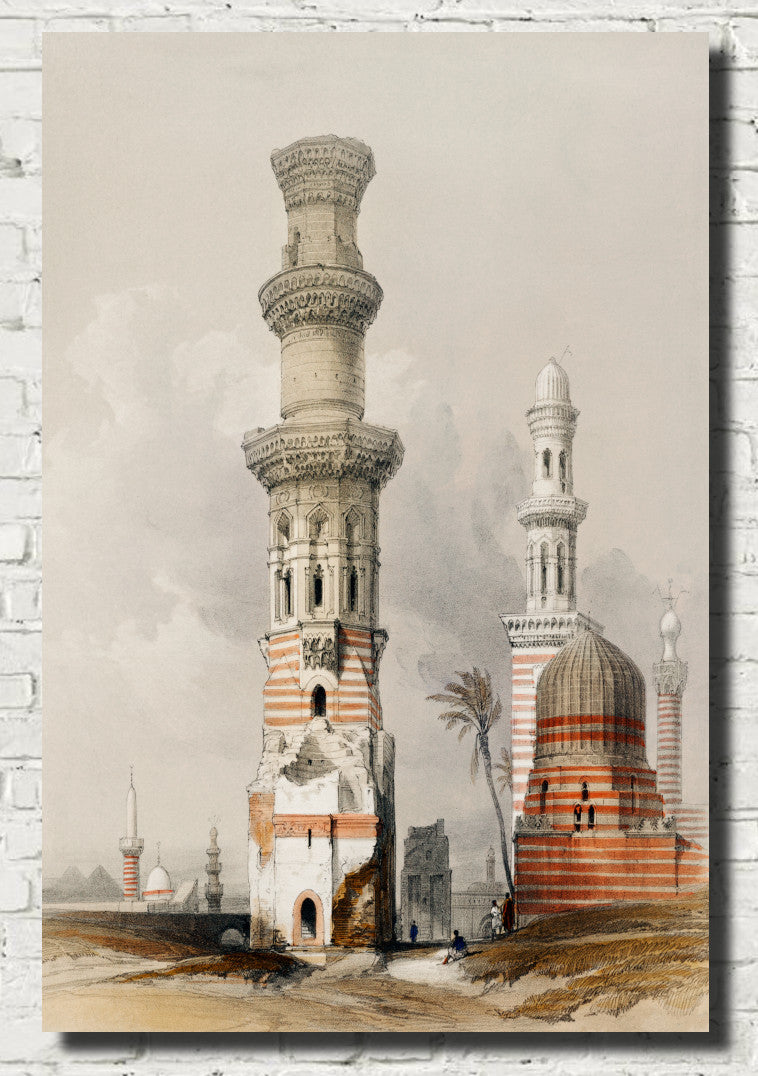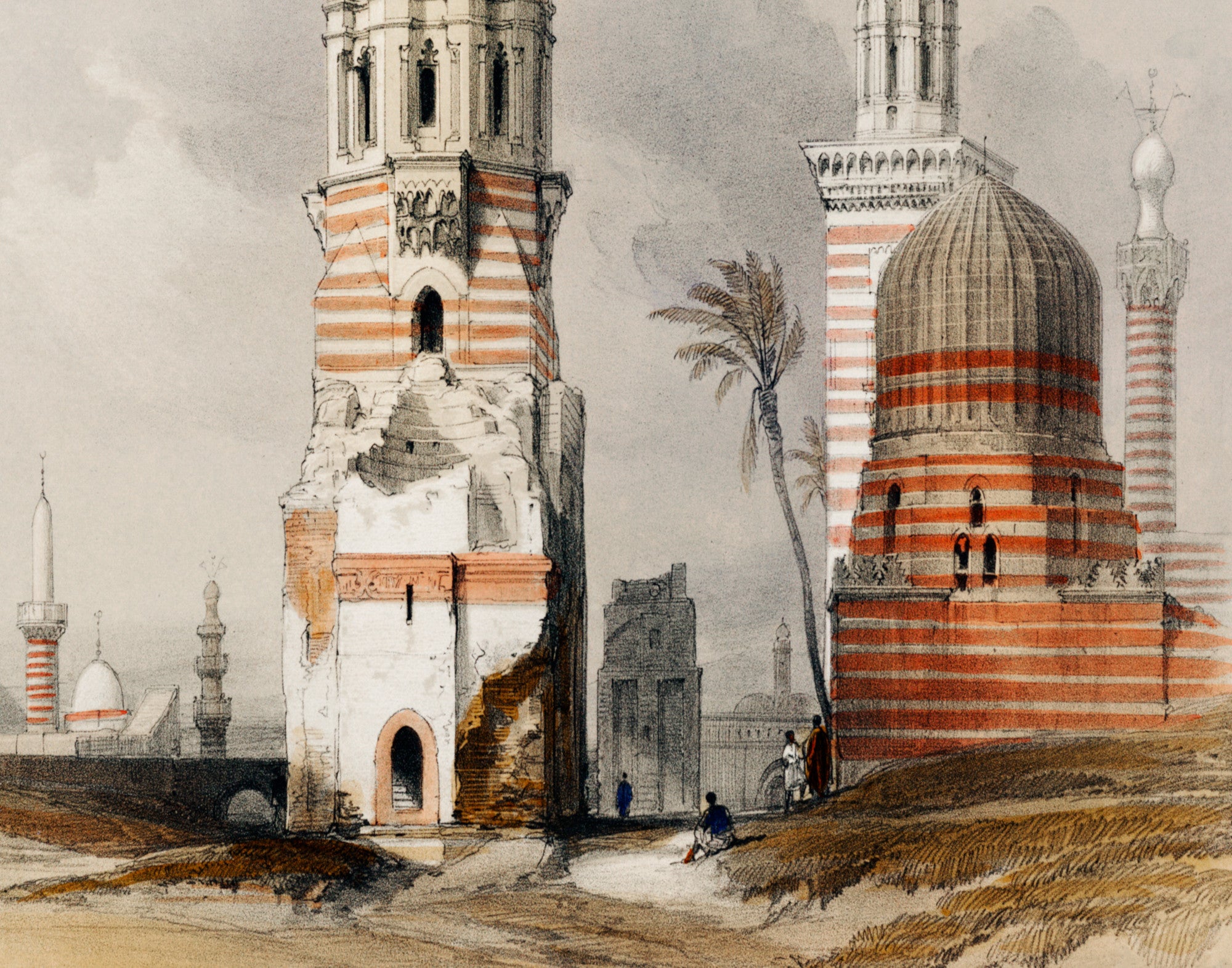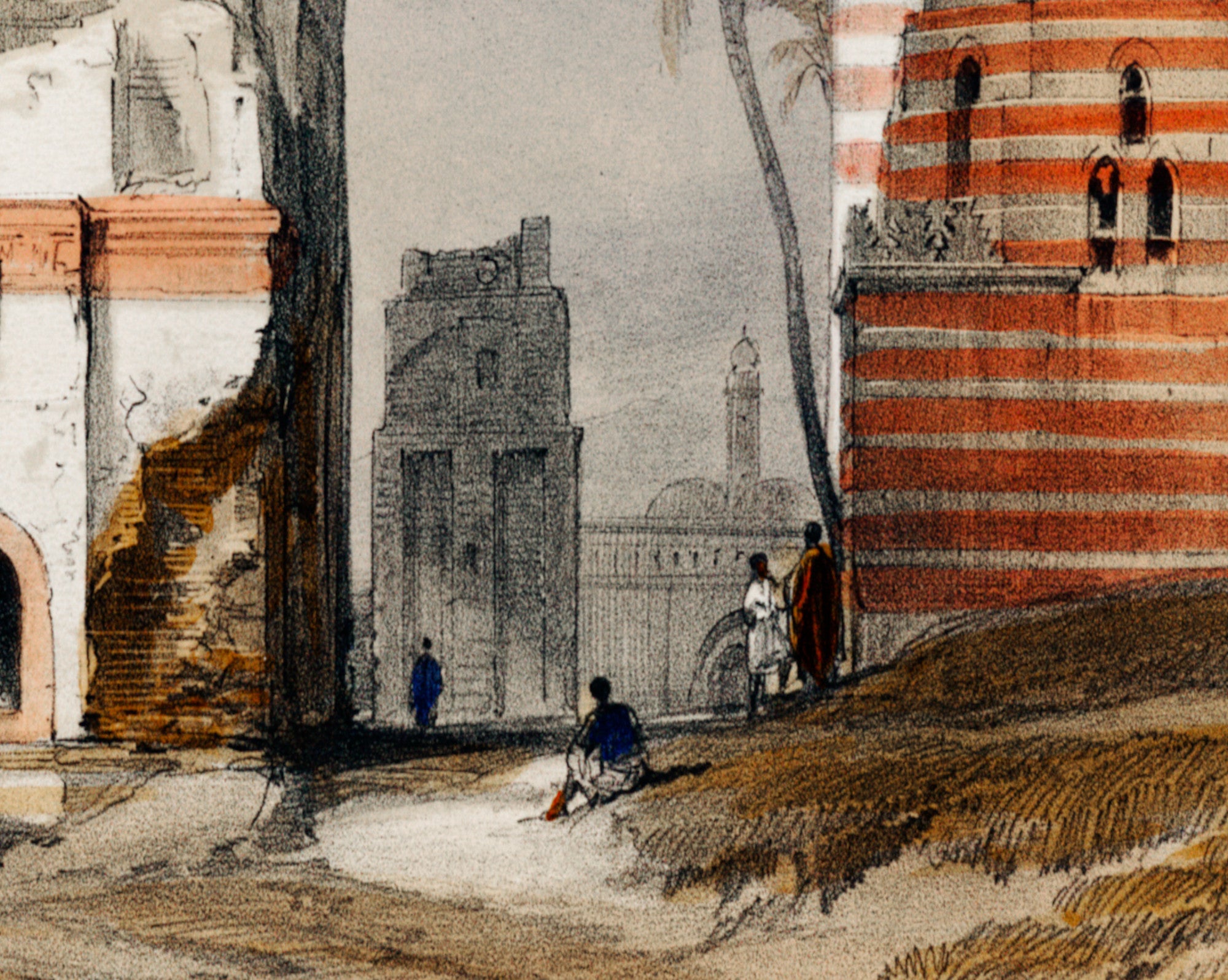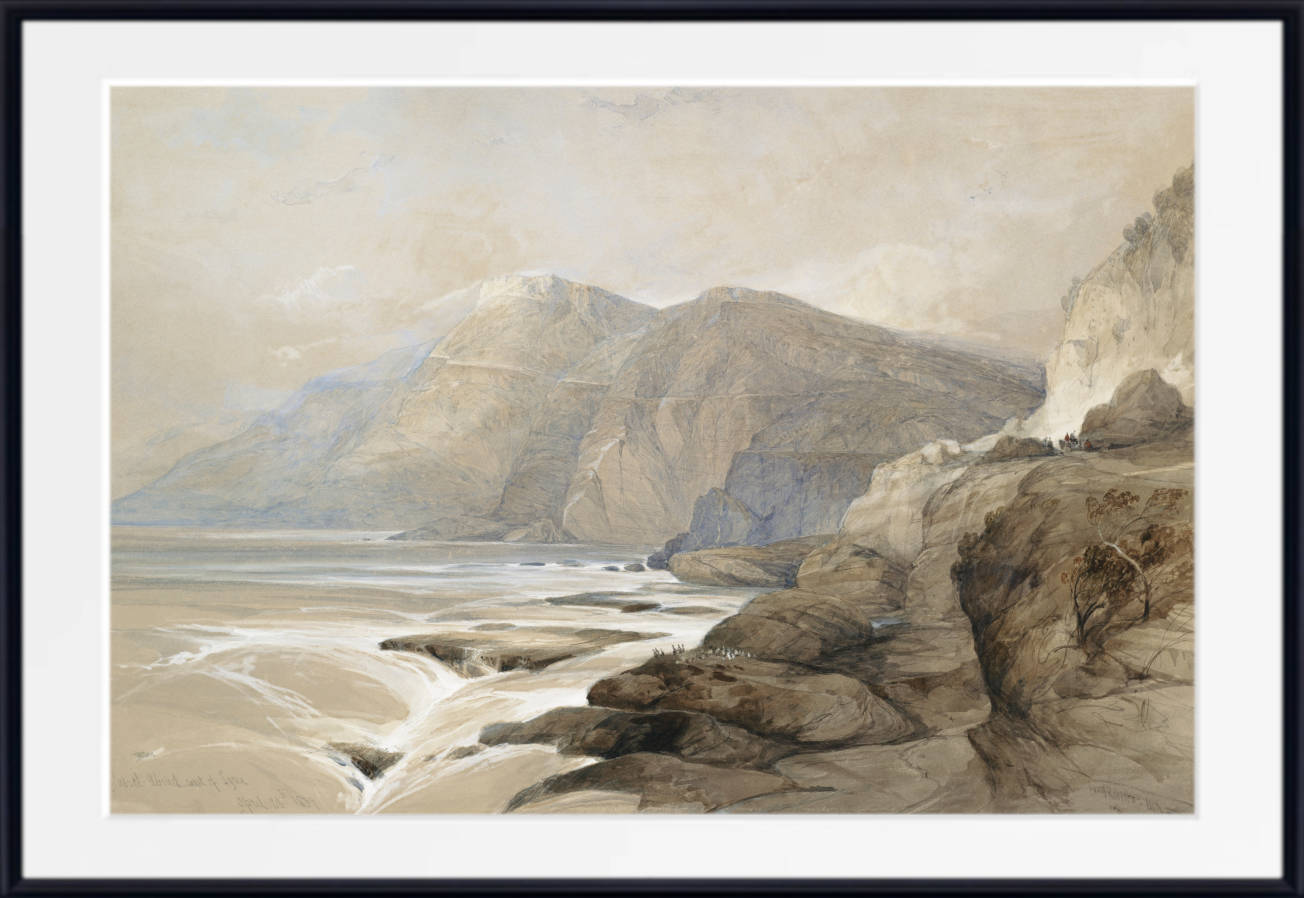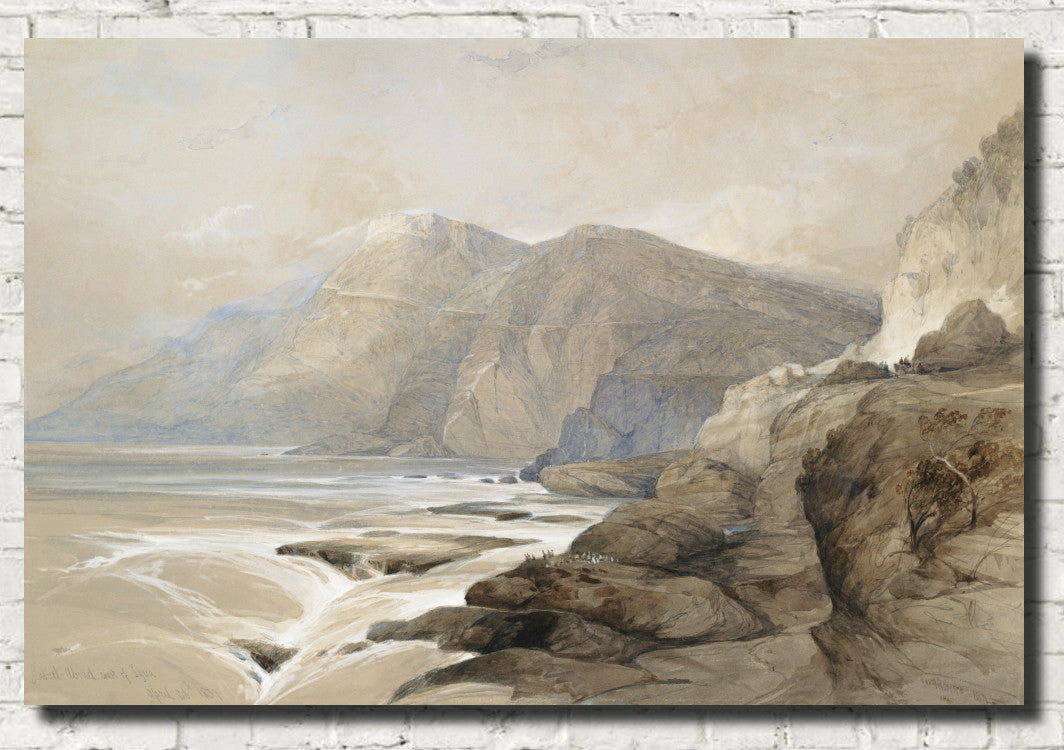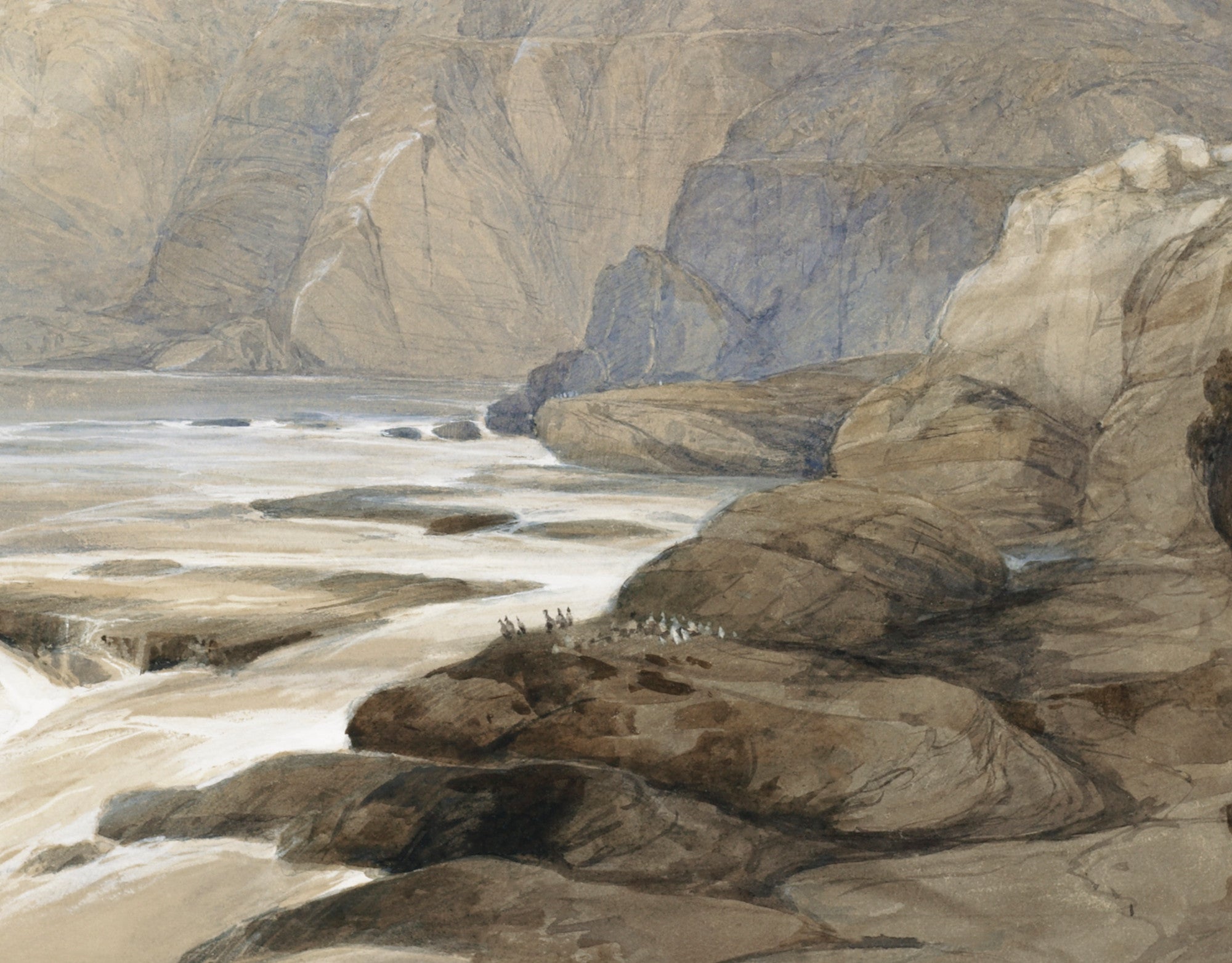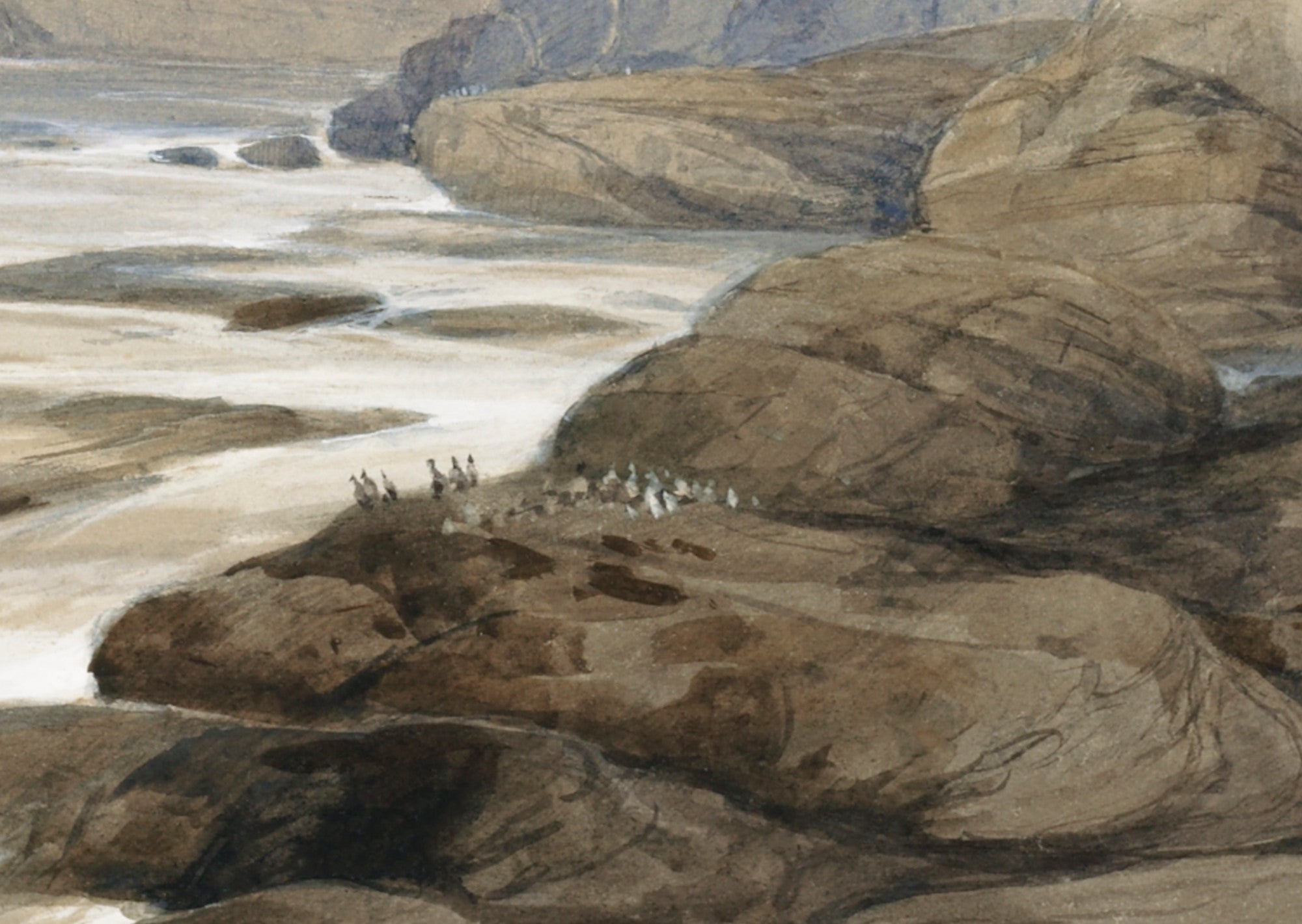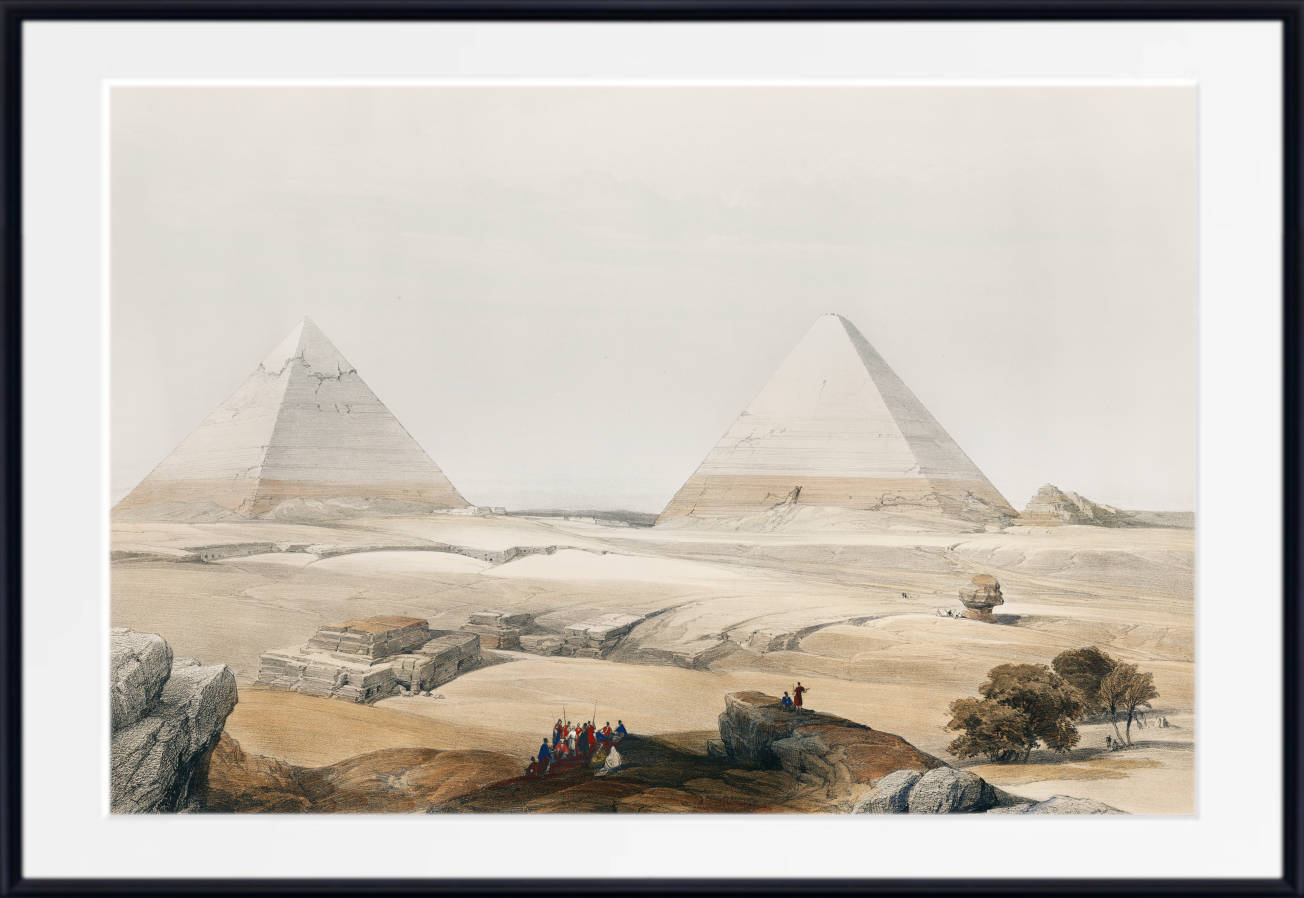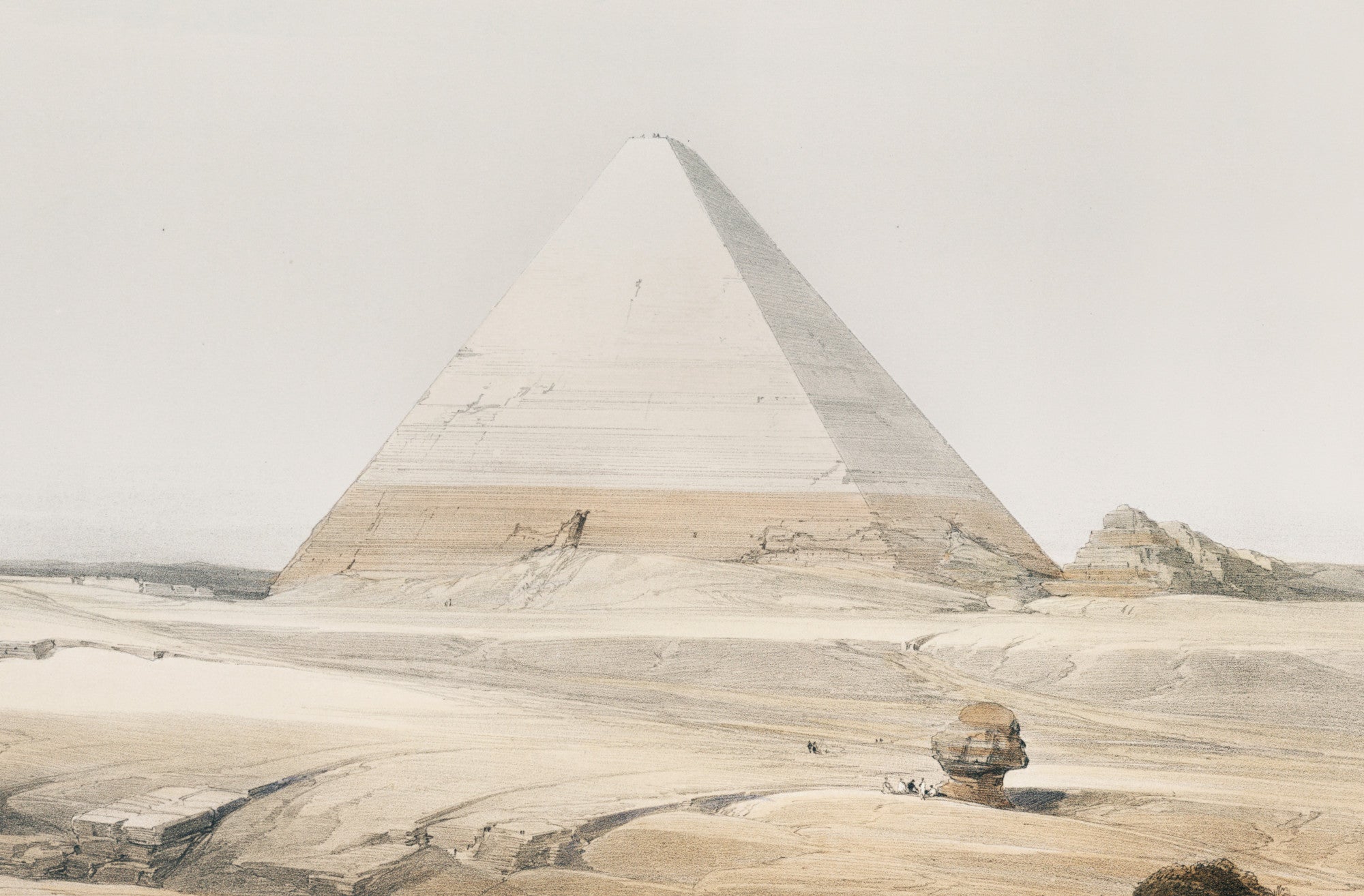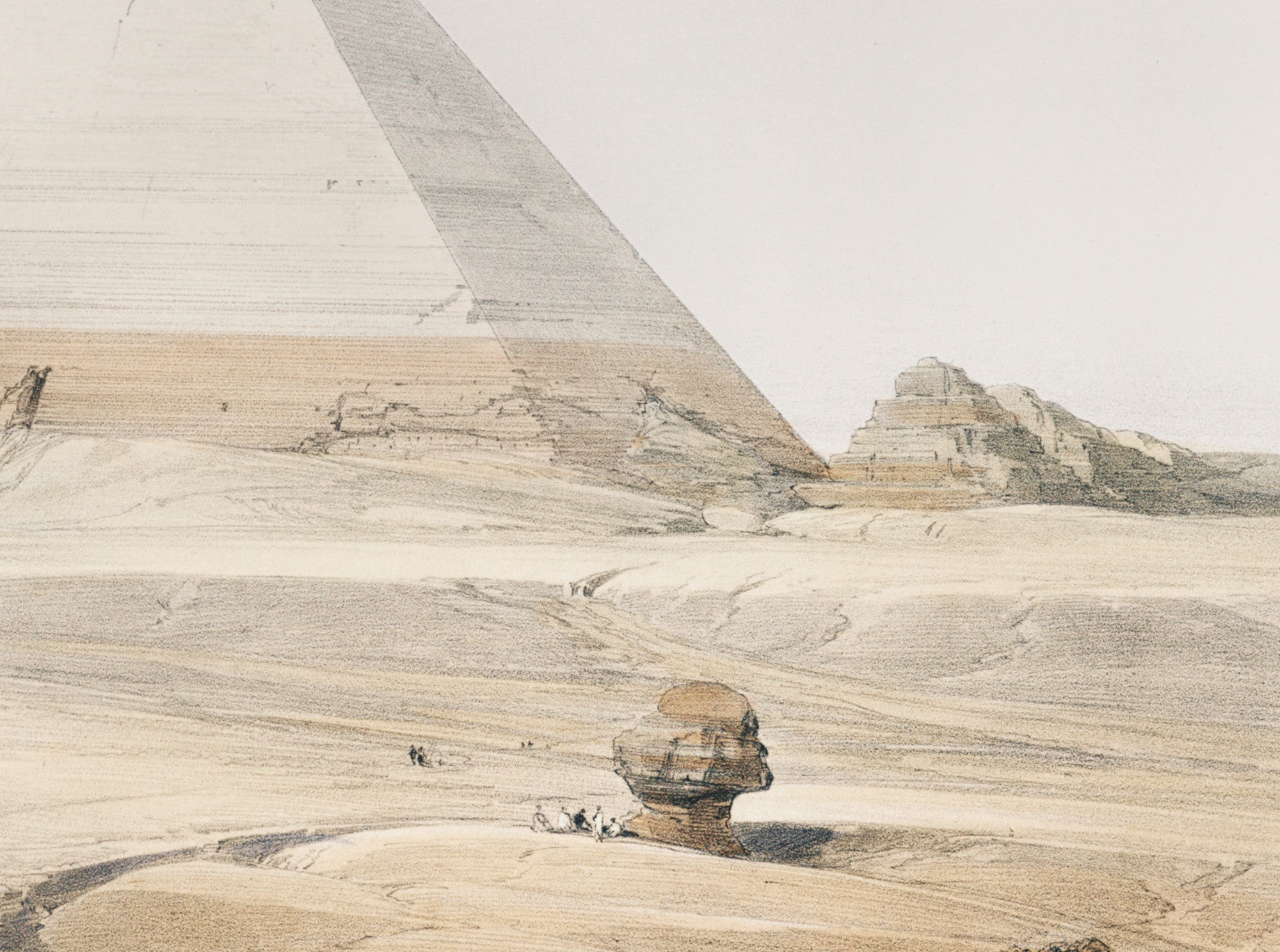Table of Contents:[hide]
David Roberts (1796–1864), a Scottish painter of tremendous skill and vision, is best known for his remarkable architectural and landscape scenes, especially those depicting the Middle East and Egypt. His works are more than mere representations of these regions; they are considered essential historical records of the 19th-century Middle East, capturing monumental sites and daily life with extraordinary detail and accuracy. Roberts’ journey to these lands in the 1830s and his subsequent paintings profoundly shaped the Western imagination of the Orient and its cultural heritage.
Early Life and Career
Born into a humble family near Edinburgh, Roberts initially worked as a house painter and later became a set painter for the theatre. His talent for rendering architectural detail and atmospheric scenes soon emerged, earning him success in theatre design. In the 1820s, he shifted his focus to full-time easel painting, concentrating on landscapes and architectural subjects, which laid the groundwork for his future success as a topographical artist. His early works showed an affinity for dramatic compositions, and his fascination with grand historical sites propelled him to explore the lands of Egypt and the Near East.
The Grand Tour: Journey to the East (1838–1839)
Roberts embarked on an ambitious expedition to the Middle East in 1838, an era when European interest in the so-called "Orient" was flourishing. Orientalism, a style and mindset that romanticized the East, was at its height, fueled by colonial ambitions and intellectual curiosity. While many European artists before him had painted the region, Roberts' approach was unique in both its scope and intent. He sought not only to depict the grandeur of ancient monuments but also to document them with an unprecedented level of detail and accuracy.
His journey spanned Egypt, Nubia, the Sinai Peninsula, and the Holy Land, including modern-day Syria, Lebanon, and Jordan. During this trip, Roberts made extensive sketches, many of which served as the foundation for his famous lithographs and oil paintings. His rigorous approach to accuracy and his fascination with ancient civilizations set him apart from other Orientalist painters, who often relied on their imaginations or exoticized views of the region.
Egyptian Masterpieces: The Pyramids, Temples, and Cairo
Among Roberts' most celebrated works are his paintings of Egypt. His fascination with Egypt’s ancient monuments—particularly its temples, pyramids, and tombs—dominates much of his output. "The Great Sphinx of Giza" and "The Temple of Karnak" are iconic representations that captivated audiences upon their release. Roberts' depictions are renowned for their faithful adherence to the proportions and details of these vast, ancient structures. His brushwork and composition convey both the grandeur and mystery of these sites, as well as their isolation amidst barren landscapes.
In his painting The Entrance to the Great Temple at Baalbek, Roberts captures the monumental architecture of one of the most famous ancient Roman sites in the Near East. The use of sunlight and shadow emphasizes the towering nature of the columns, creating a dramatic effect that speaks to the awe these structures inspired in the artist.
Roberts’ The Holy Land, Syria, Idumea, Arabia, Egypt and Nubia (1842-1849), a series of lithographs based on his sketches, was highly influential. Produced by Louis Haghe, the master lithographer, this series brought the wonders of the East into the drawing rooms of European society. It was both an artistic and commercial success, further cementing Roberts’ status as one of the leading Orientalist painters of the period.
Daily Life and Urban Scenes
Roberts didn’t only focus on the ancient wonders; he also painted scenes of contemporary life, capturing the vibrant energy of Cairo’s streets and bazaars. His street scenes, like The Bazaar of the Coppersmiths of Cairo, offer a vivid glimpse into 19th-century Egyptian urban life, with its bustling markets, crowded alleys, and varied social activities. Roberts managed to blend his keen eye for architecture with a sensitivity to the people who inhabited these spaces, providing a dynamic and realistic portrayal of everyday life in the city.
Unlike many of his Orientalist contemporaries, who tended to exoticize or romanticize Middle Eastern life, Roberts’ scenes are grounded in a documentary approach. His careful attention to costumes, architecture, and geography reveals a commitment to authenticity that gives his works historical and anthropological significance.
The Role of Light and Atmosphere
One of the hallmarks of Roberts’ work is his masterful use of light and shadow to create atmosphere. In his depiction of the monumental temples of Luxor or the sweeping sands of the Sinai, light often serves as a symbolic force, highlighting the spiritual or historical resonance of the places he painted. His use of warm, golden light brings an ethereal quality to his desert scenes, while the cool shadows of ancient temples suggest both their decay and their timeless endurance.
In works like Sunset over the Nile, Roberts combines the serene beauty of the river with the dramatic hues of a setting sun, emphasizing the natural beauty and mystique of the Egyptian landscape. His atmospheric approach often evokes a sense of timelessness, inviting the viewer to consider the intersection of ancient history and contemporary existence.
Legacy and Influence
David Roberts’ work has left an indelible mark on both art and the Western perception of the Middle East. His paintings and lithographs became an essential resource for 19th-century Europeans fascinated by the Orient, influencing both academic study and popular imagination. For scholars, architects, and archaeologists, his works provided valuable visual documentation of sites that were often difficult to access. For the broader public, they contributed to the mystique and allure of the East, reinforcing the era’s romantic fascination with distant lands.
Although later scholars have critiqued Orientalism for its role in perpetuating colonialist and exoticized views of the East, Roberts’ work is distinct for its documentary rigor and respectful treatment of his subjects. His legacy as an Orientalist painter is tempered by his dedication to accuracy and his genuine admiration for the cultures and landscapes he depicted.
In many ways, Roberts was a pioneer—an artist who merged the traditions of landscape and architectural painting with a spirit of exploration and discovery. His paintings of Egypt and the Middle East continue to be admired not only for their aesthetic qualities but also for their historical significance, offering a window into a time when the West was just beginning to unlock the mysteries of the ancient world.
Conclusion
David Roberts’ paintings of the Middle East and Egypt are a testament to his skill, dedication, and deep fascination with the ancient and contemporary worlds of these regions. His work transcended mere aesthetic appeal, functioning as both art and documentation. Through his journeys, Roberts captured not only the grandeur of ancient monuments but also the daily life, light, and atmosphere of the lands he visited. His legacy remains firmly embedded in the history of Orientalist art, and his work continues to be appreciated for its artistic and historical significance.







